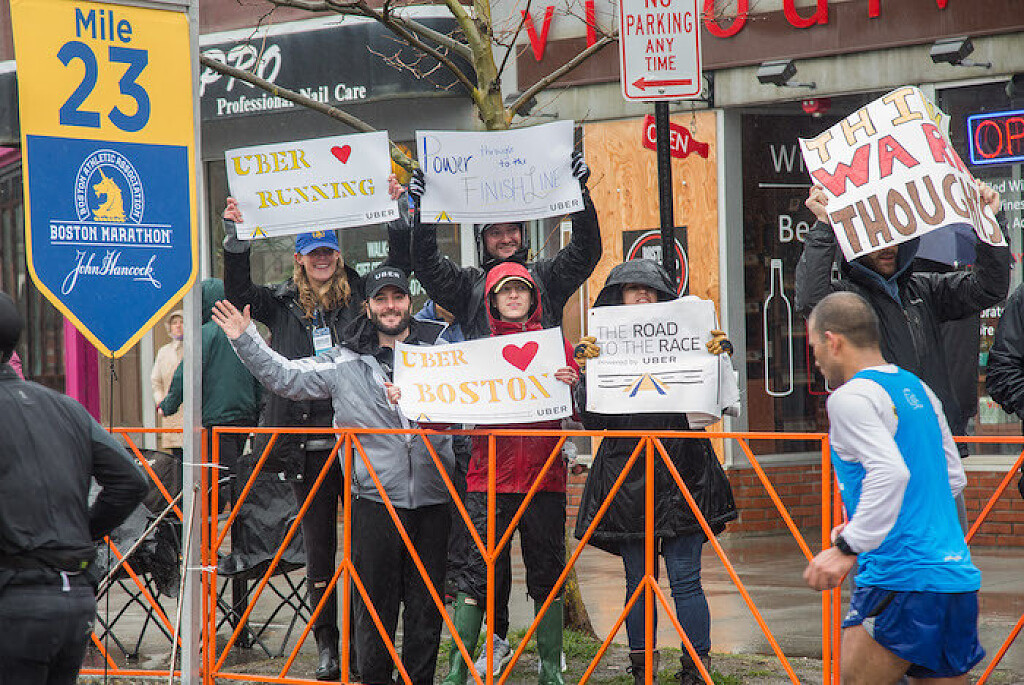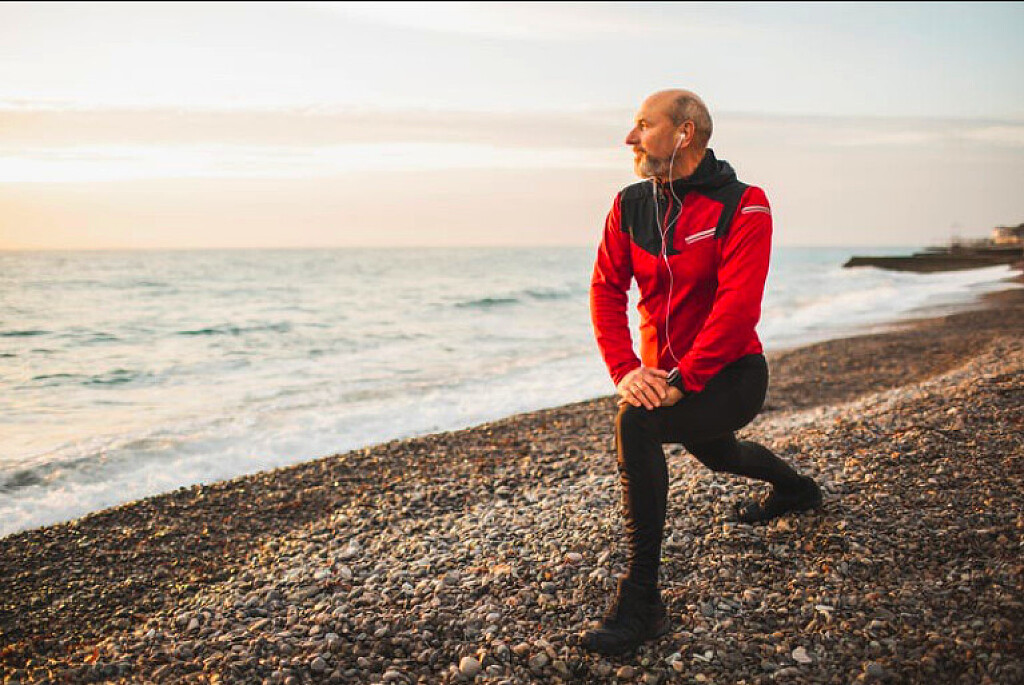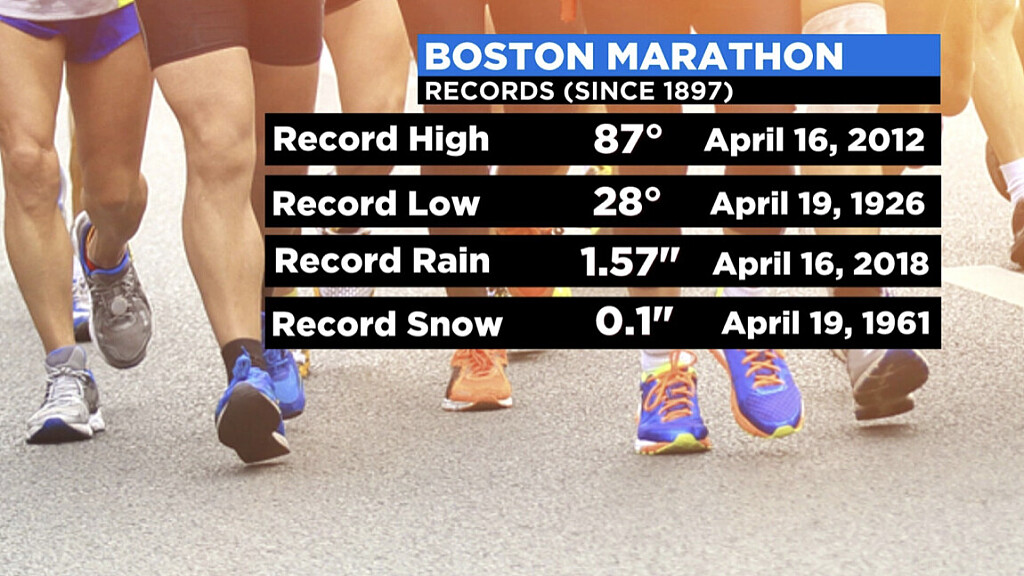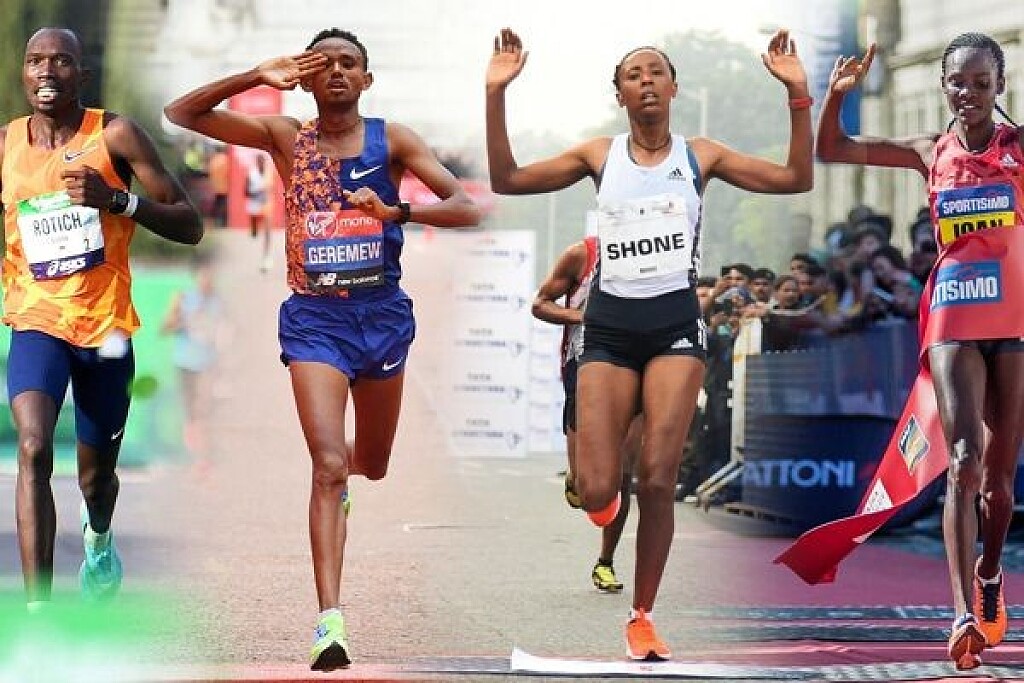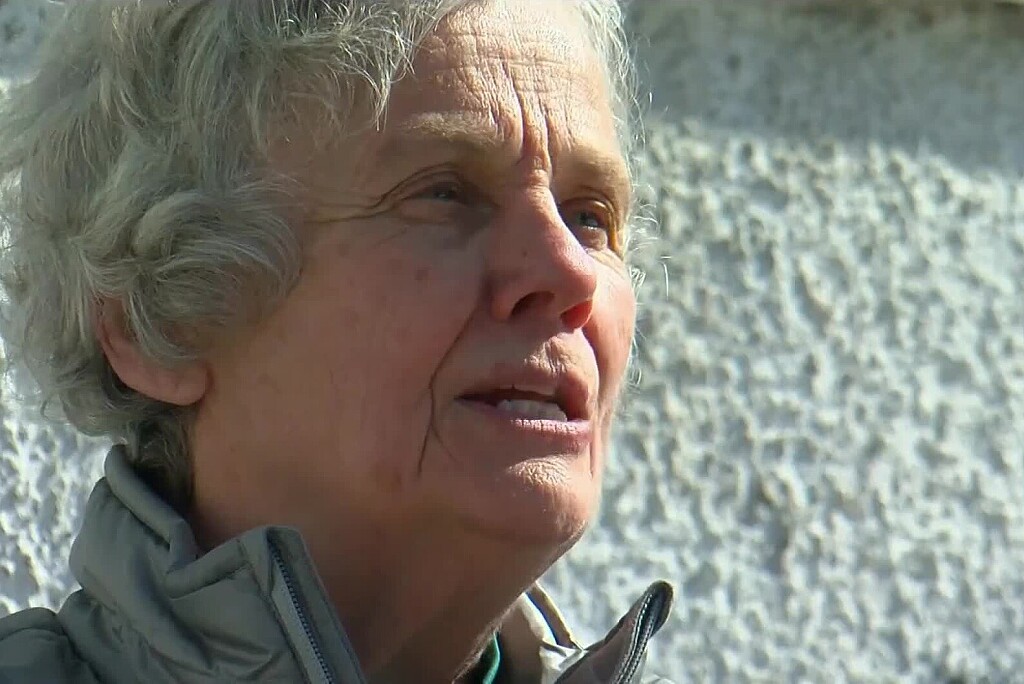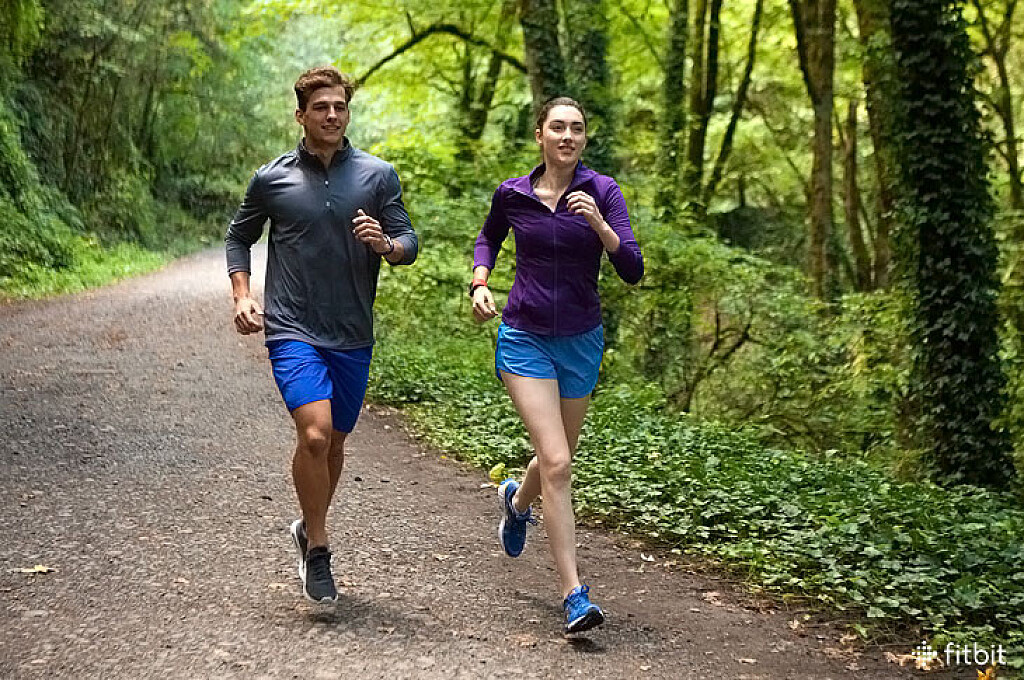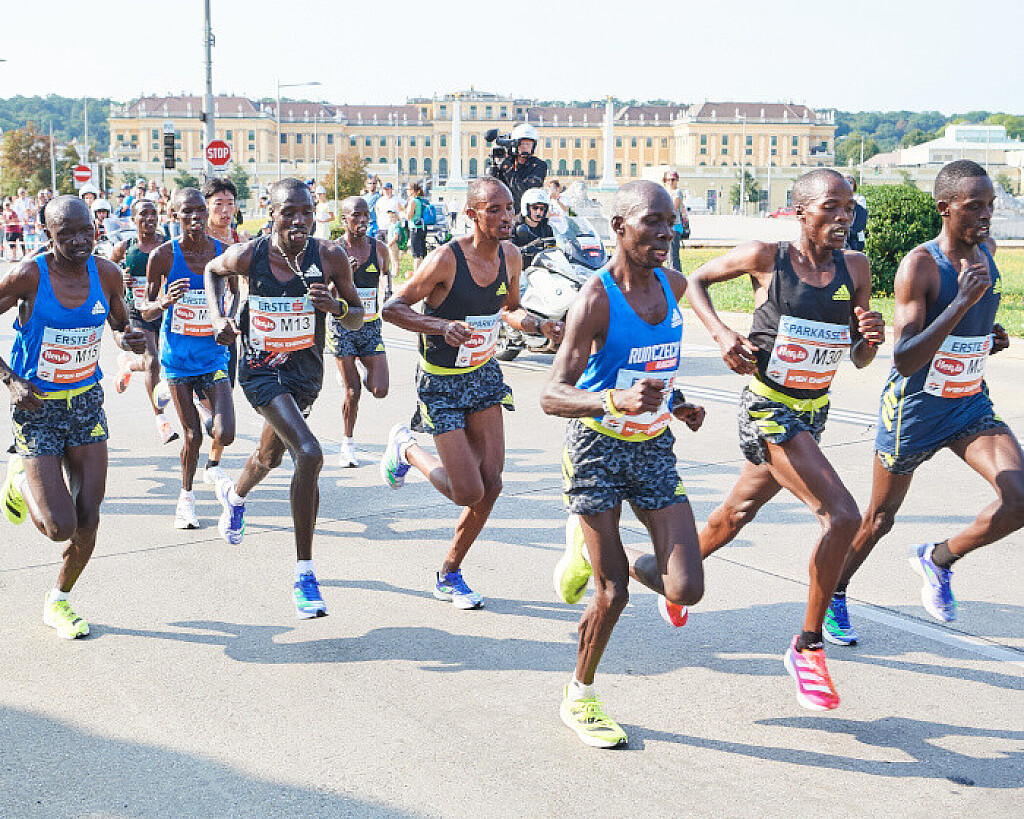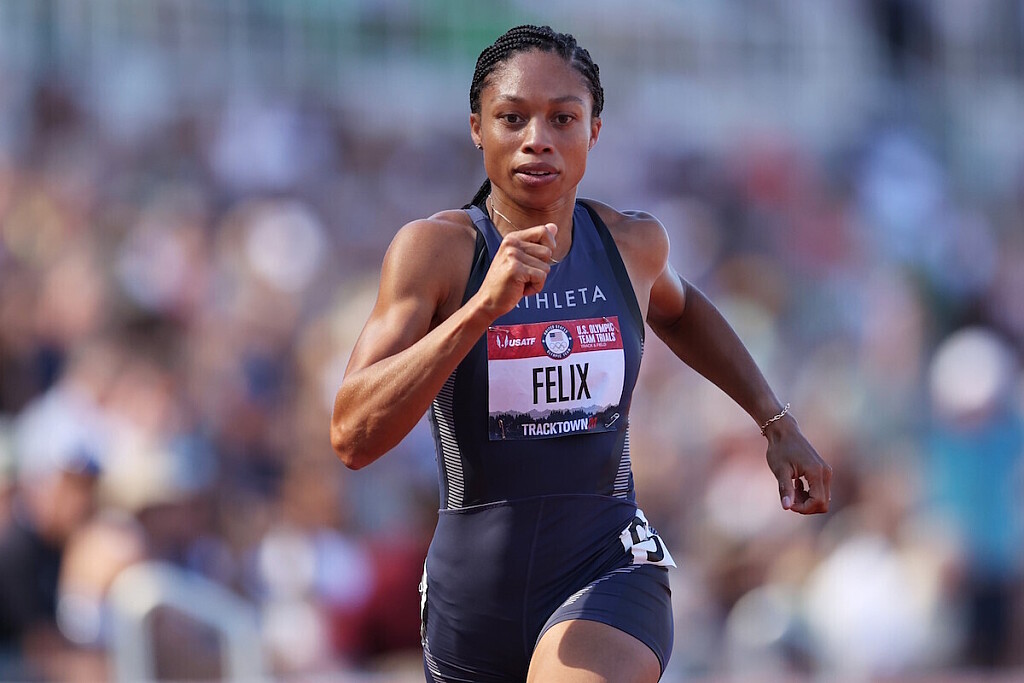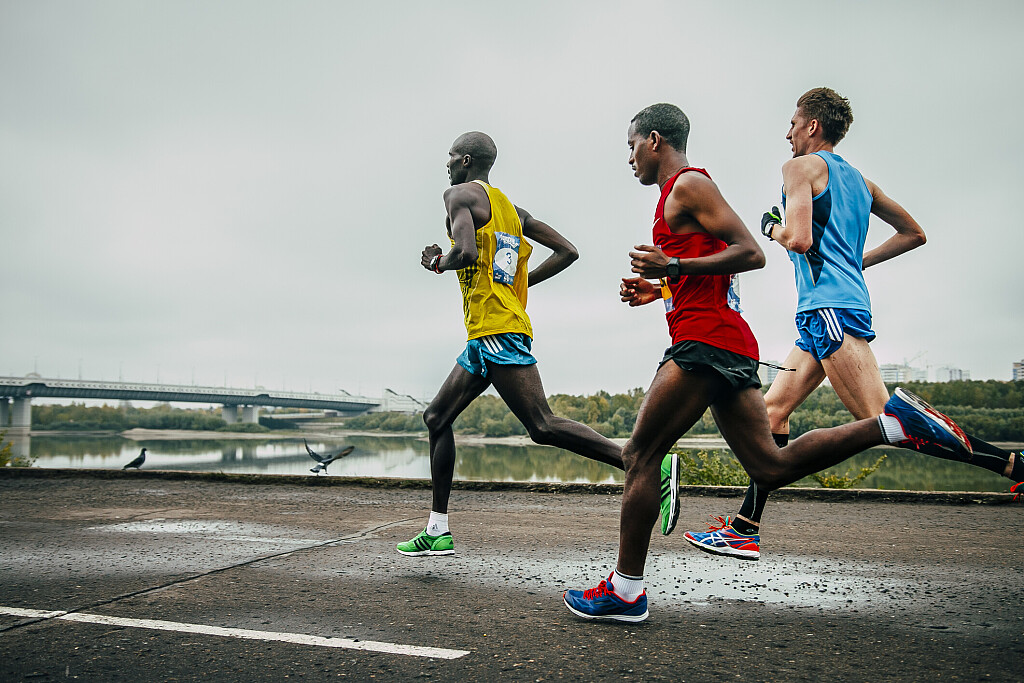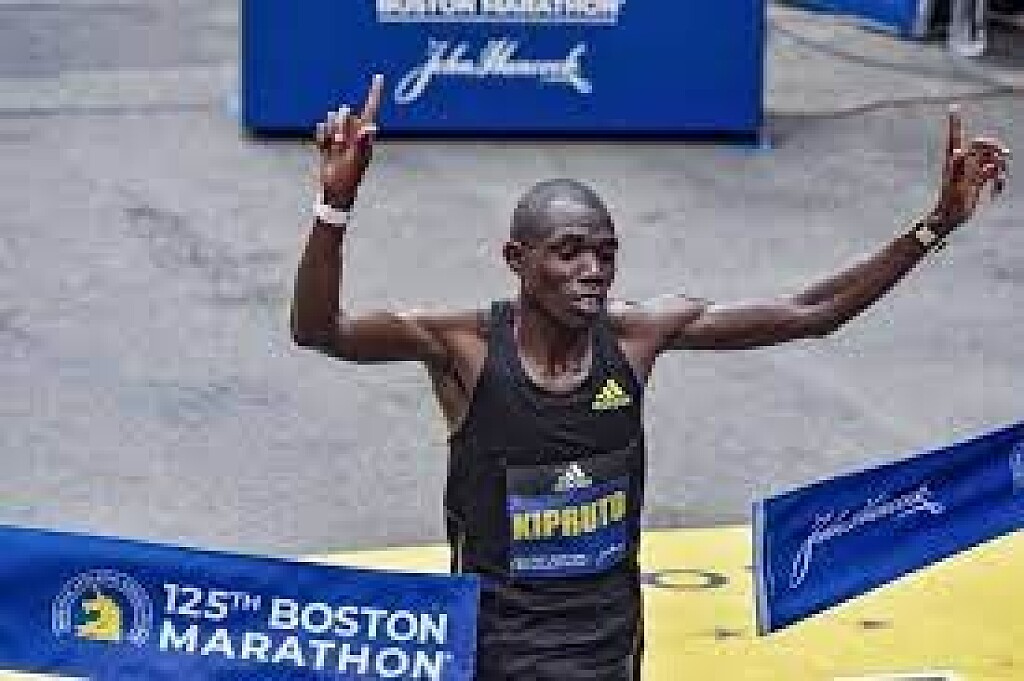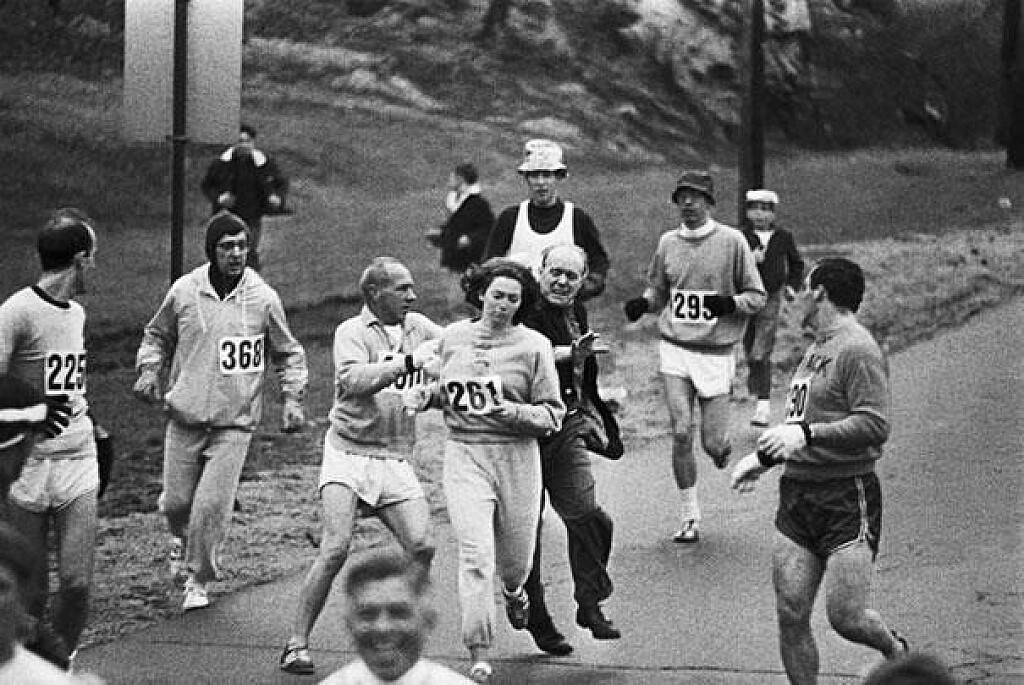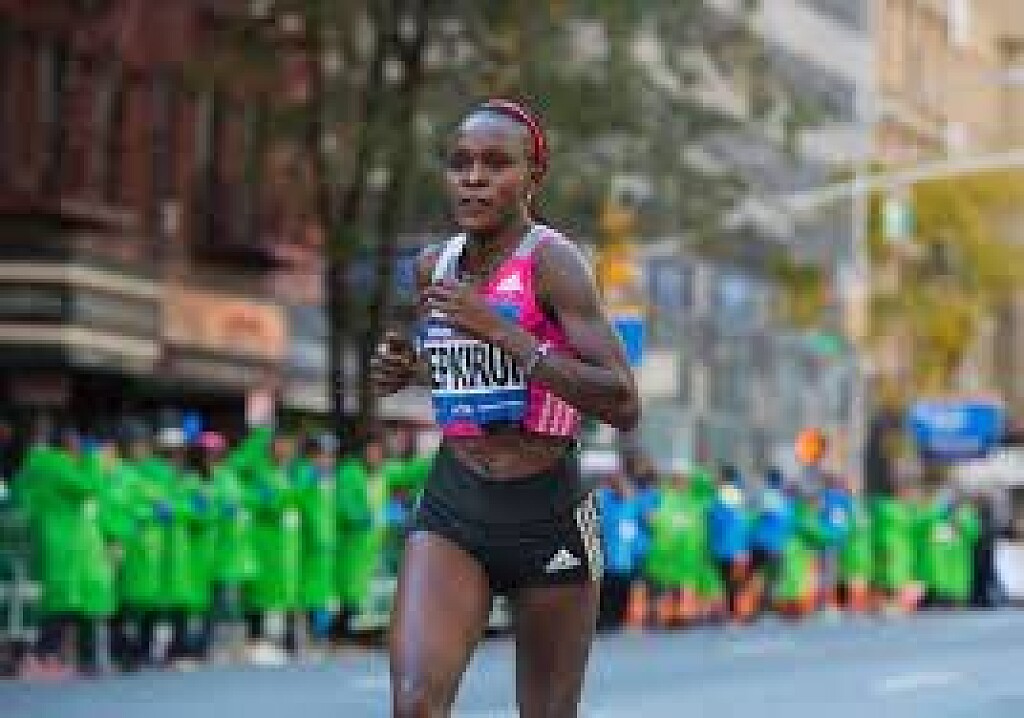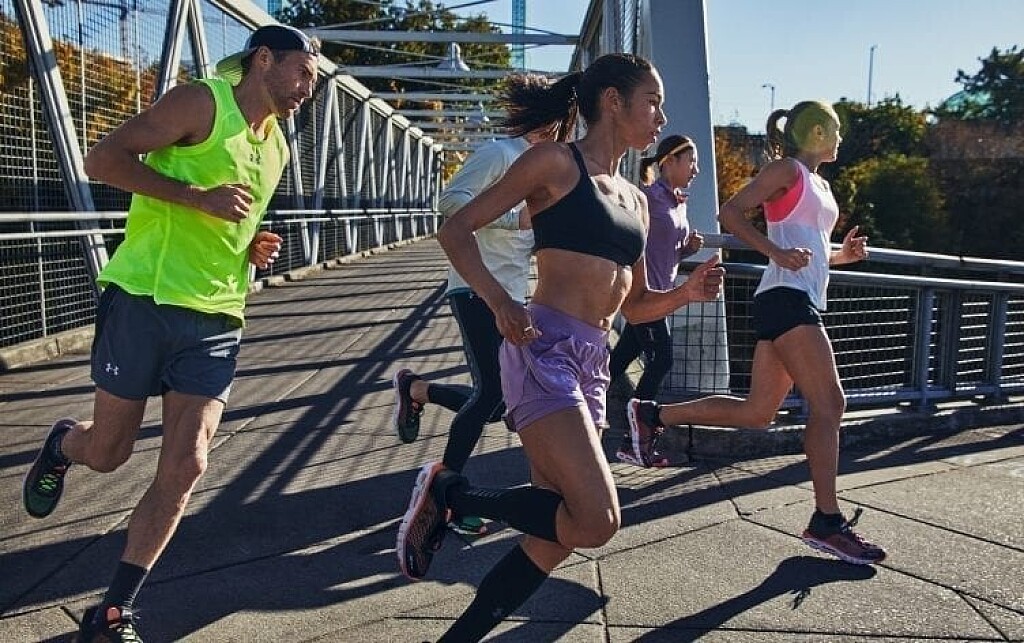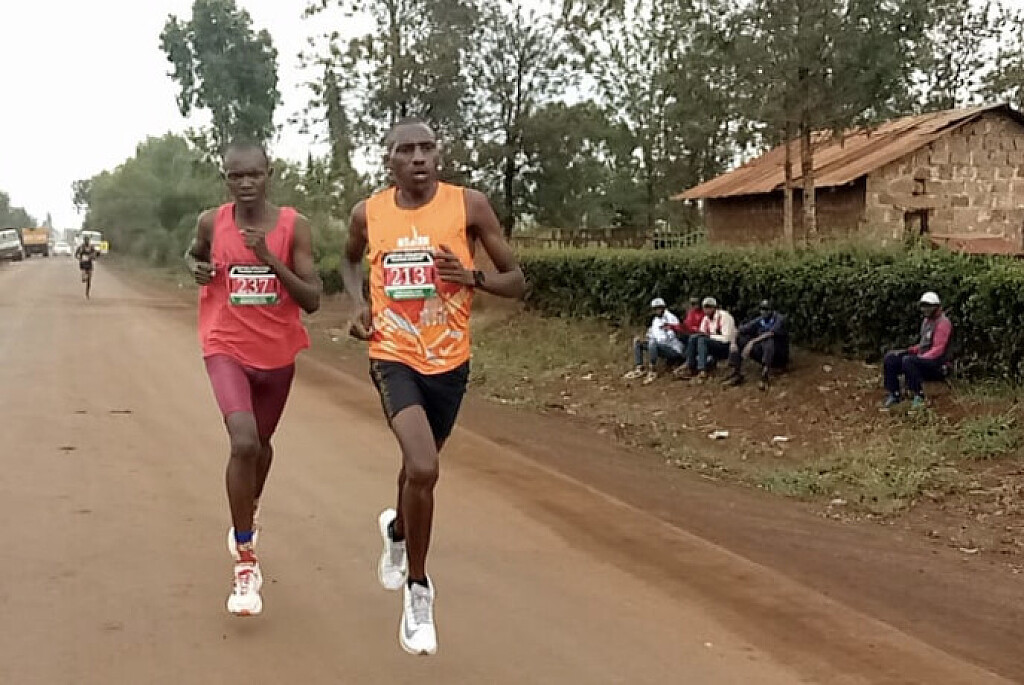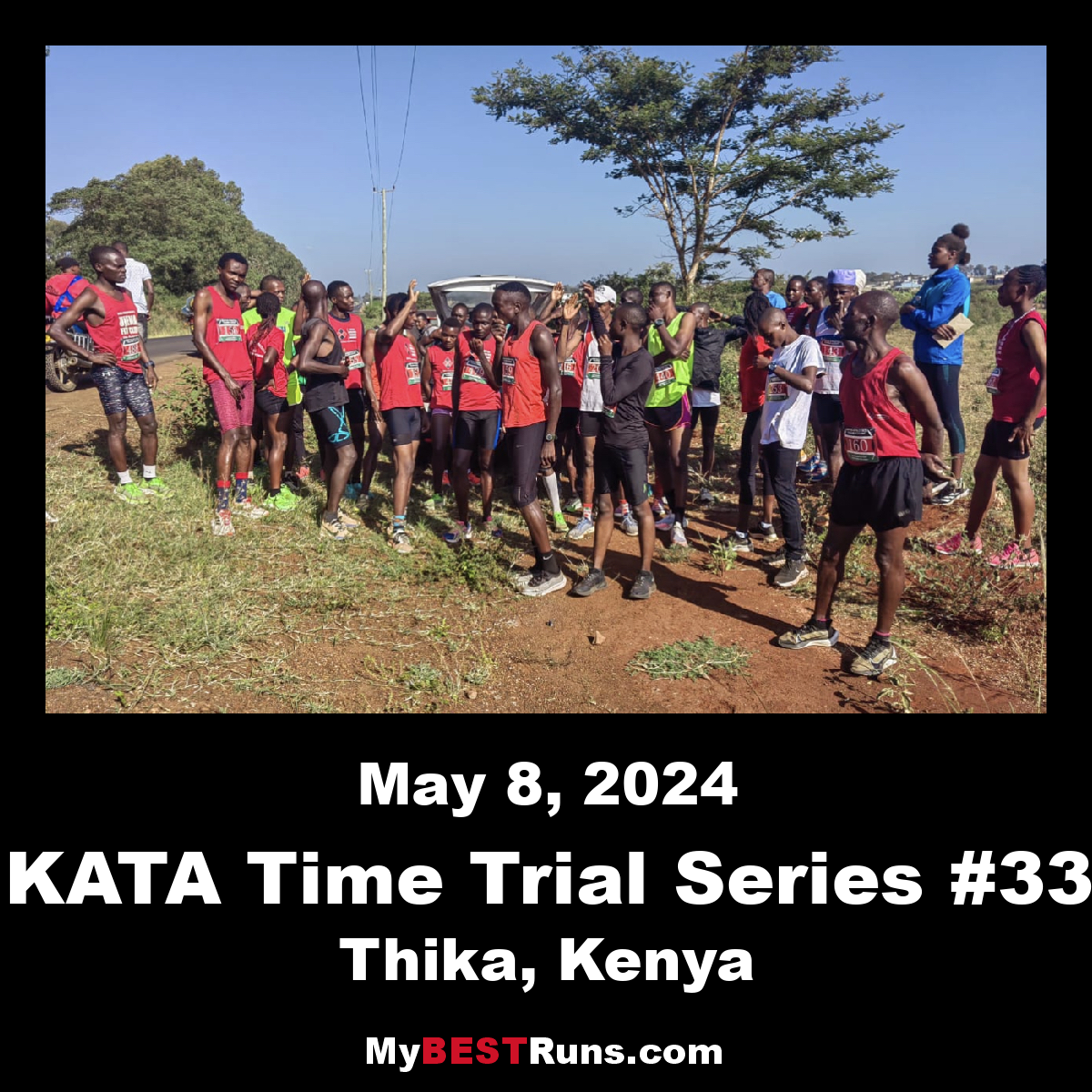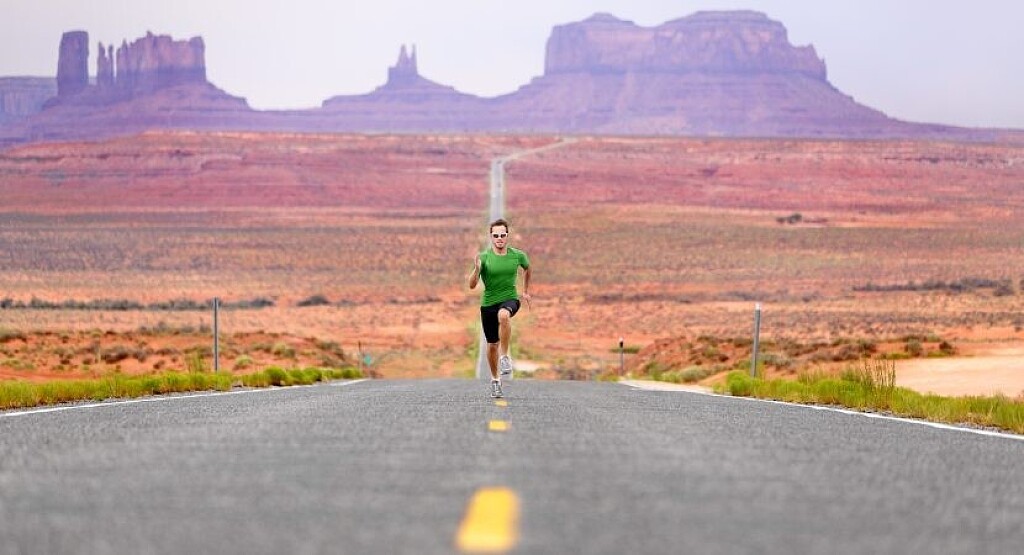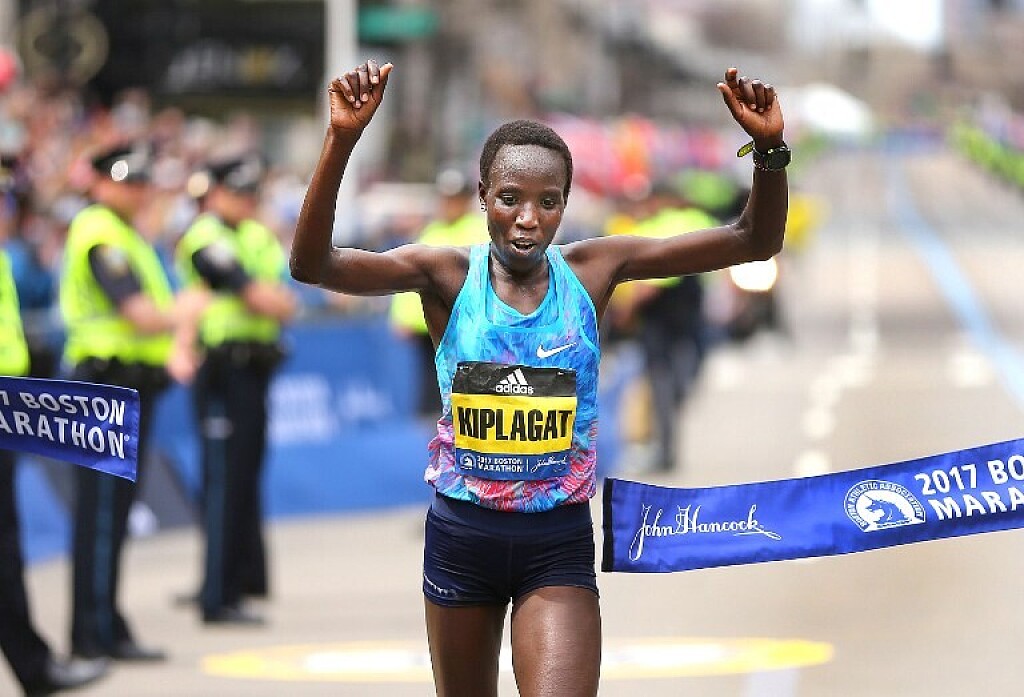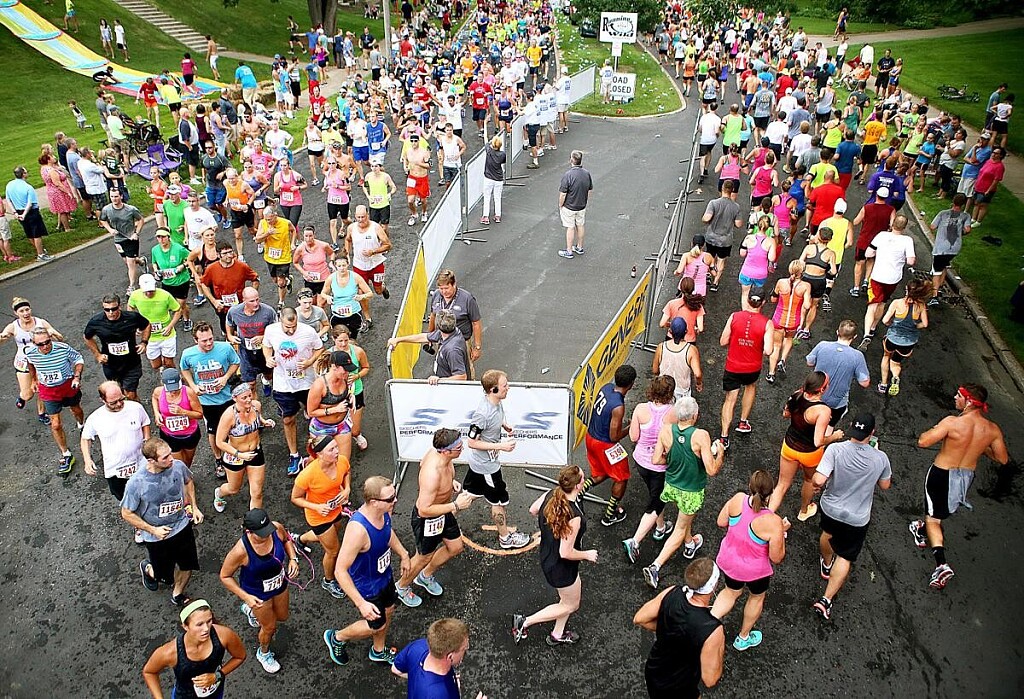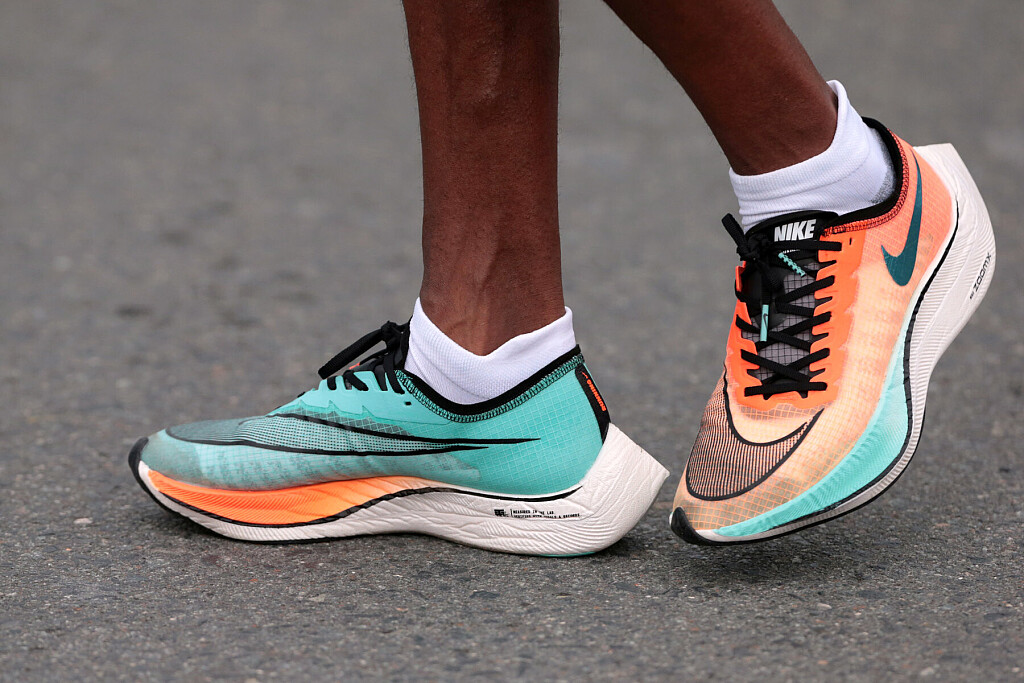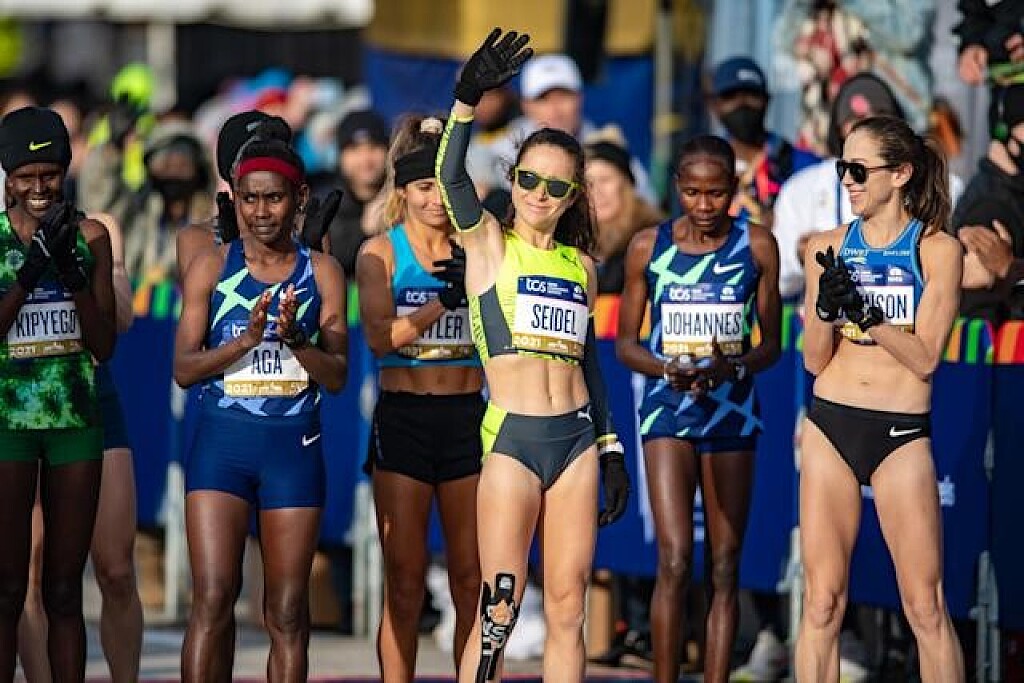Running News Daily
Running News Daily is edited by Bob Anderson in Mountain View, California USA and team in Thika Kenya, La Piedad Mexico, Bend Oregon, Chandler Arizona and Monforte da Beira Portugal. Send your news items to bob@mybestruns.com Advertising opportunities available. Over one million readers and growing. Train the Kenyan Way at KATA Running Retreat Kenya. (Kenyan Athletics Training Academy) in Thika Kenya. Opening in june 2024 KATA Running retreat Portugal. Learn more about Bob Anderson, MBR publisher and KATA director/owner, take a look at A Long Run the movie covering Bob's 50 race challenge.
Index to Daily Posts · Sign Up For Updates · Run The World Feed
After Years of Struggling With Anxiety, This Mom Turned to Running
“Running has, first and foremost, given me an outlet when I need to relax and just clear my mind.”
When I first arrived, I was shown to my bunk for the next couple weeks. I had a small spot to put my belongings, and shared a bathroom with six others. There was no air conditioner, so the windows stayed open at all times. It wasn’t the safest neighborhood.
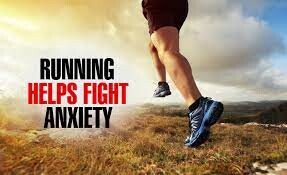
There were bars on the windows, an electric fence surrounding the home, and a guard that stayed at the front door during the night. I was way out of my comfort zone.
Every morning a van dropped the volunteers off at their assigned location. I was with children at a local “daycare” that parents could take their children to for free.
We would bathe the children, feed them their only meal of the day, and pour as much laughter and fun into them as we could before sending them back home for the evening. I saw the tiny one-bedroom homes that they would go to with only dirt on the ground and no running water. But the silver lining was seeing their pure joy at the simplest things. When I came home to America, I felt immense guilt for the lives of luxury most of us live in and take for granted.
My anxiety really took root shortly after this trip when we lost our first pregnancy with twins. I became so bogged down with anxiety that I literally did not want to move from the couch. It was a horrible cycle because I knew my feelings were irrational, yet I couldn’t stop them. I would ruminate on something tiny, and in my head make it a really big issue. I then would find myself crying and spending hours on the internet trying to figure out what was wrong with me.
After we were blessed with our first born in 2012, I knew I needed to get help for my still-lingering anxiety. I was missing out on things in this life that I didn’t want to miss out on. I would be in the moment physically, but not emotionally because my thoughts would be running all over the place. I was getting so frustrated with not being able to turn off my worries.
I finally got the courage to go see an amazing doctor. I sat in the patient room waiting for him to come in, and the minute he did I started sobbing and asking what the heck was wrong with me. After sharing with him what I had been battling, he simply said, “You have generalized anxiety.” It’s like I could breathe all of a sudden. I had someone to tell me this is not uncommon, and that this is treatable.
I started running in 2015, after I had my second child. At that point, I had read up so much on anxiety, and the constant theme I kept coming across as a way to manage it was exercise. As a busy mom that didn’t have a gym I loved nearby, I decided I was going to do the easiest and most efficient thing I could. So I laced up some sneakers and went out for my first jog. To this day, I share the story that I literally thought I was going to die running one mile! But it ultimately became a mental challenge, and I just kept showing up. I would add 0.1 mile to every run.
Eventually, I found the indoor running studio STRIDE, which has helped me with not only my running, but also with so many amazing friendships and an amazing community.
After I was finally able to run 3 miles without thinking death was imminent, I told myself I was going to run a half marathon. My husband thought I was crazy, but I could tell how much running was helping me both physically and mentally. It was giving me time to listen to podcasts, music, think, be creative, and connect with my STRIDE community when I would take a class. So I set out to do something I never thought I would do.
Now, I like to do strength training three times a week, two 5- to 6-mile runs on Tuesdays and Thursdays and a longer run on the weekends if my kiddos’ schedules allow. I’m coming off a stress fracture and I know the importance of taking care of our bodies and really listening when it says to slow down.
I think so often the term “runner” is associated with those that only do half marathons, marathons, etc., but I would love to change that stigma. If you get out and run one mile, you are a runner. I actually don’t have any desire to do a marathon. My knee tends to yell at me more than I’d like right as I’m finishing a half, so I’ll stop there—it’s the right distance for me.
Running has, first and foremost, given me an outlet when I need to relax and just clear my mind. I laugh when people say, “I only run when I’m running away from something.” Maybe that’s true though. I was running from anxiety that was holding me back in my life. Call it super corny, but I’d flip it today to say I’m now running towards my dreams. Running has brought some of the best friendships I could have asked for, introduced me to many amazing people, and pushed me to open up a business dedicated to helping people tackle both their physical and emotional goals. Running has allowed me to be the best wife and mom I can be.
One of my favorite motivational expressions is: We will never meet the best version of ourselves in our comfort zone. Being uncomfortable is where growth truly happens, and it’s where we begin seeing versions of ourselves we didn’t know existed.
These three tips have made my running journey successful:
1. Strength train
Building strength is crucial for avoiding injury and ultimately leading to better runs and races. If you don’t want to strength train on your own, hop into a class that includes strength training like at STRIDE. There are so many options to get in your strength training.
2. Stretch and take rest days
Stretching is so important, yet we tend to neglect it (I know I have). Dynamic stretching preworkout and static stretching postworkout are a must. Resting is equally important. Listening to your body is crucial. Recovery allows for muscle growth and prevents injury among a long list of other things.
3. Get sleep
Your body needs sleep. There is a book called Why We Sleep by Matthew Walker—it may put you to sleep, but it’s chock-full of super good info that more people need to know!
(04/23/2022) ⚡AMPby Runner’s World
Defending champion Vibian Chepkirui hoping to run 2:20 in Vienna
Defending champion Vibian Chepkirui hopes to make another big step at the Vienna City Marathon, aiming to win her second race at the classic distance as well. The Kenyan believes she is ready to run a time of around 2:20 on Sunday. Such a result would not only smash her PB but the course record of 2:22:12 as well.
It was in September when Vibian Chepkirui won her debut marathon in Vienna with 2:24:19 in very warm weather conditions. While five women feature personal bests of sub 2:25 there are two men on the start list who have run below 2:06. Oqbe Kibrom of Eritrea is the fastest runner in the field with a PB of 2:05:53.
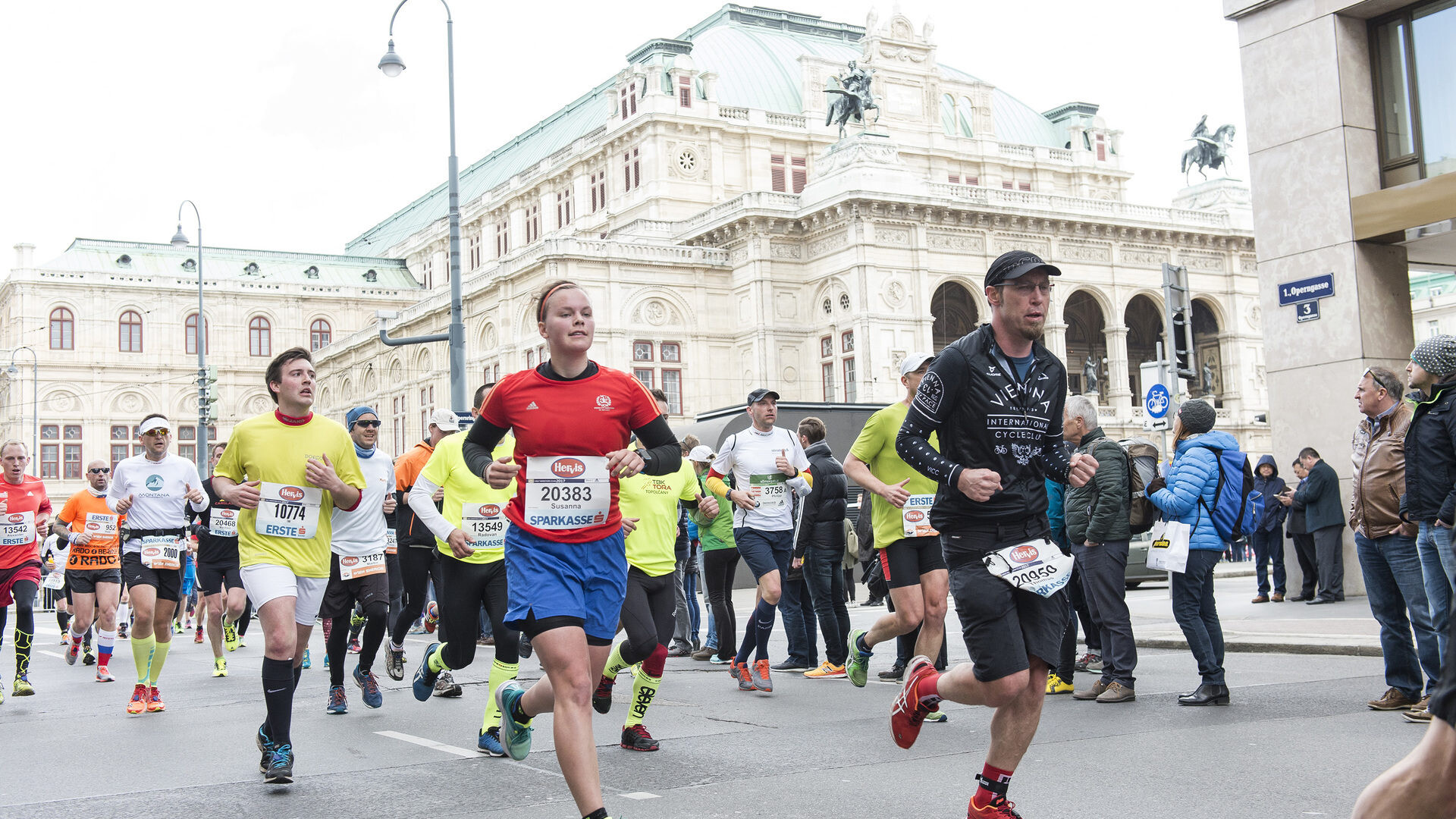
Organisers of the 39th edition of the Vienna City Marathon have registered more than 31,000 entries including events at shorter distances. Around 8,000 of them are marathon runners. The Vienna City Marathon is Austria’s biggest running event and a World Athletics Label Road Race.
The Vienna City Marathon will be streamed live from 8.30 am on Sundayat: www.vienna-marathon.com There will also be English live reporting of the elite races on the event’s Twitter account, which is accessible through the website as well.
"I have very good memories of Vienna and I am happy to be back. It is a good course and the people are fantastic,“ said Vibian Chepkirui, with her manager Julien di Maria of Ikaika helping her to answer the questions during the press conference.
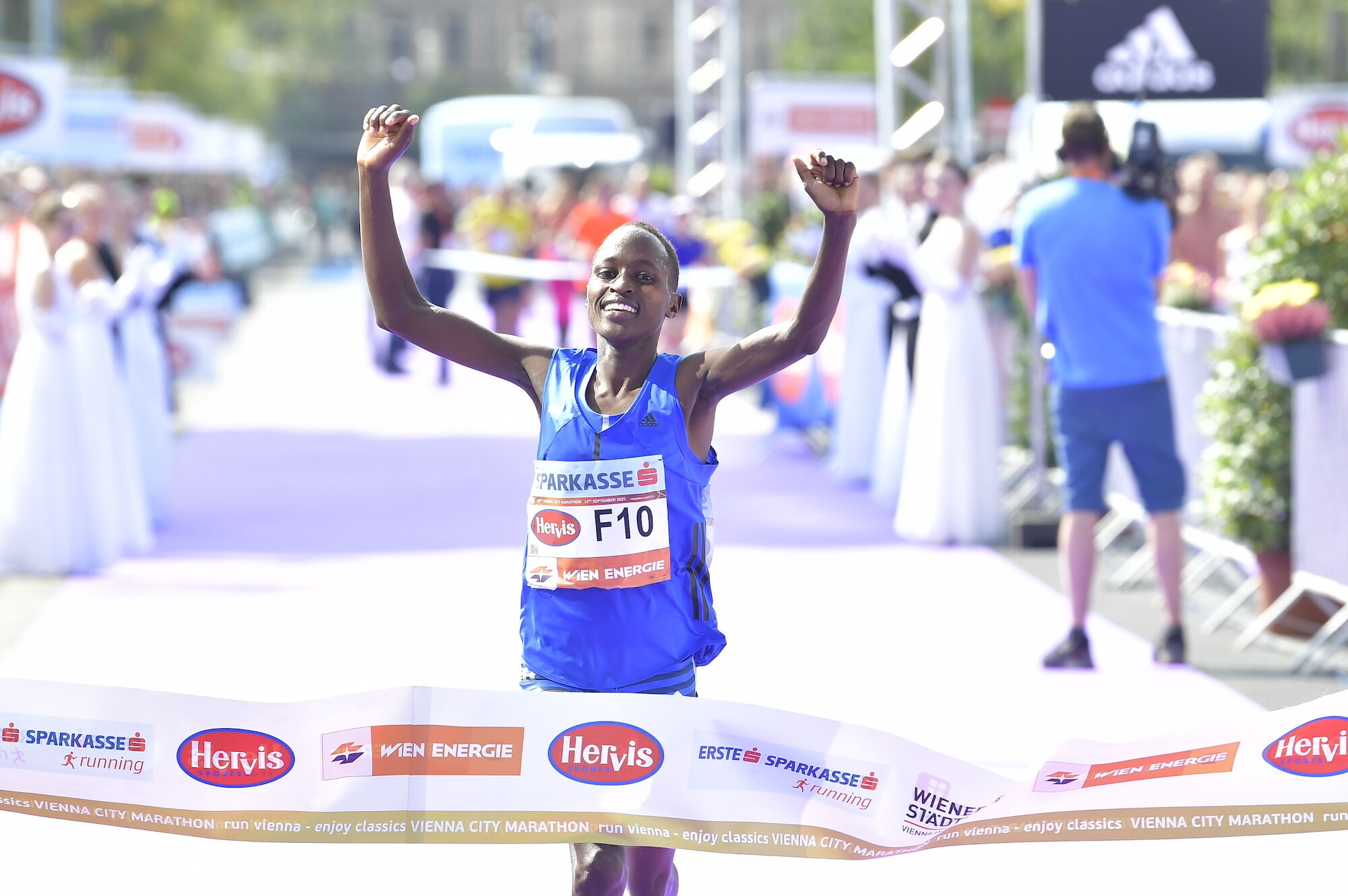
"I have prepared well and because of my training I think that in good weather conditions a time of around 2:20 is possible for me.“ As Julien di Maria explained Vibian Chepkirui became more confident when she saw the result of her training partner Joan Melly last Sunday: She won the Seoul Marathon with a course record of 2:18:04.
“Vibian and Joan always train together in Iten. And they are more or less on the same level. It was only during the final stages of some sessions when Joan was a little stronger than Vibian,“ explained Julien di Maria. Vibian Chepkirui has only run a single international race since her Vienna triumph in September and has fully focussed on defending her title in the Austrian capital.
The 27 year-old was fifth in Spain’s Santa Pola half marathon in January with 69:35. On Sunday she will again be paced by her husband Wesley Kangogo, who also acts as a pacemaker for the group when they are training in Iten.
There are four women with faster personal bests than the defending champion on the start list of the Vienna City Marathon. One of them is Ruth Chebitok, who has run 2:23:29 in Toronto in 2018. “I had injury problems for some time, but then ran quite well in Berlin last year with 2:28:18. Now I am well prepared and confident that I can run a time around my PB again,“ said the Kenyan.
The Vienna City Marathon is among a number of top road races that experienced an unusually high number of late cancellations. Goitom Kifle of Eritrea had to cancel his start because of an injury. He had been the fastest runner on the start list with a PB of 2:05:28. Another one who can not compete in Vienna is the defending champion Leonard Langat of Kenya.
There could still be a winner from Eritrea, which would be a novelty in the history of the race. Oqbe Kibrom is now the fastest runner on the start list with a PB of 2:05:53. The Eritrean, who held the national record for some time with his PB from 2020, looks ahead with confidence.
“I have trained well and hope to run a personal best on Sunday,“ said Oqbe Kibrom. The pace of the leading group will likely be perfect for him as it is planned to pass through half way in around 63:00. An attack on the course record would then still be possible. Ethiopia’s Getu Feleke holds this mark with 2:05:41 from 2014.
Cosmas Muteti might not be a pre-race favourite, but the Kenyan has developed very well recently. Coached by former world record holder Patrick Makau he improved to 2:08:45 in Berlin last year, where he took a fine fifth place in warm conditions. „Patrick is a good coach and I have improved under his guidance,“ said Cosmas Muteti, who targets his personal best on Sunday.
There is also an OPEC Fund Rookie Team competing in Vienna on Sunday. The idea is to give unknown African athletes a chance to compete internationally in Vienna and to support them to hopefully build a successful career. Victor Serem is the most experienced of the group. The Kenyan has a PB of 2:12:00 which he ran in Nairobi in 2019. “This will be my first marathon outside Kenya and I am grateful for the opportunity. I hope to improve to 2:10 on Sunday,“ said Victor Serem. The other three runners of the OPEC Fund Rookie Team are Kenya’s Dickson Kiptoo (PB: 2:23:56 in Eldoret), Fanose Tessema Gonfa and fellow-Ethiopian Chaltu Fikadu Marame.
Elite fields with personal bests
Men:
Oqbe Kibrom ERI 2:05:53
Abdi Fufa ETH 2:05:57
Raymond Choge KEN 2:08:11
Cosmas Muteti KEN 2:08:45
Weldu Gebretsadik NOR 2:09:14
Edwin Soi KEN 2:09:16
Charles Ndiema KEN 2:10:43
Lemawork Ketema AUT 2:10:44
Leonard Langat KEN 2:10:49
Noah Kipkemboi KEN 2:11:09
Victor Serem KEN 2:12:00
Anderson Seroi KEN 2:12:21
Mike Chesire KEN 2:13:28
Tomasz Grycko POL 2:13:30
Solomon Tesfamariam SUI 2:14:51
Abraham Kipyatich KEN Debüt
Timon Theuer AUT Debüt
Women:
Caroline Kilel KEN 2:22:34
Ruth Chebitok KEN 2:23:29
Sifan Melaku ETH 2:23:49
Sheila Jerotich KEN 2:24:15
Vibian Chepkirui KEN 2:24:29
Esther Kakuri KEN 2:26:11
Urge Soboka ETH 2:28:10
Nataliya Lehonkova UKR 2:28:58
Kellys Arias COL 2:29:36
Viola Yator KEN 2:30:03
Teresiah Omosa KEN 2:30:12
Benny Cheruiyot KEN 2:34:18
Neja Krsinar SLO 2:35:44
(04/22/2022) ⚡AMPVienna City Marathon
More than 41,000 runners from over 110 nations take part in the Vienna City Marathon, cheered on by hundreds of thousands of spectators. From the start at UN City to the magnificent finish on the Heldenplatz, the excitement will never miss a beat. In recent years the Vienna City Marathon has succeeded in creating a unique position as a marathon...
more...Allyson Felix’s shoe brand Saysh to offer “intentionally sexist” return policy for pregnant women
Days after Allyson Felix, the most decorated woman in track and field history, announced 2022 would be her last season of competitive running, she also implemented an industry-leading return policy for her shoe company, Saysh. The policy allows women to return shoes, no questions asked, should their foot size change during pregnancy (which commonly happens). If they need a new pair of shoes, new ones will be sent free of charge, in the proper size.
“A huge turning point in my life was becoming a mother—it opened my eyes to so much,” Felix told Footwear News this week. “As a runner, I have to pay attention to every little change in my body, and I went through a lot of change during pregnancy. I didn’t even realize that my feet could grow that much. I was tired of begging brands to meet me where I was, as both an athlete and a mother, and I was tired of sacrificing comfort and style. So I decided to make my own rules,” she says.
Advocating for all women, but especially athletes

Felix began actively advocating for pregnant women and athletes in 2019, when she spoke before the U.S. House of Representatives about the disparity in maternal mortality (which is significantly higher among Black women). Felix had serious complications while giving birth to Camryn, her daughter, in 2018, which moved her to outline the medical risks disproportionally experienced by African-American women.
Beyond advocating for better medical treatment for women, she also helped cause a pregnancy-policy reform across the sport of track and field when she spoke out against her former sponsor, Nike, in 2019. Felix said she felt pressure to come back to competing as soon as possible after giving birth, even though she had spent time in the hospital with preeclampsia (often characterized by high maternal blood pressure), and was not yet ready.
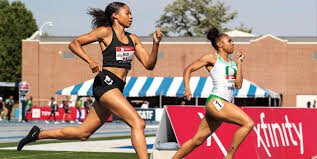
Make your own shoes
Shortly after speaking out against Nike and their lack of support throughout her pregnancy, Felix signed with clothing company Athleta. A few months later, she launched her own shoe company, Saysh.
Saysh is a company that aims to put women front and center, Felix said in a Ted Talk this week, “I feared that I would be forced to choose between motherhood and being a competitive athlete [when sponsored by Nike]. Getting pregnant in track and field has been called ‘this kiss of death.'” She continued to say that her mission is to help people to not “have to choose between parenting and doing the work that they love.”
The Saysh One, the first shoe Felix has brought to market, is $150 USD and comes in three colors.
(04/22/2022) ⚡AMPby Madeleine Kelly
Seven reigning global medalists to renew rivalry in Eugene 100m
The medalists from the men’s Olympic 100m and 200m finals in Tokyo, plus the men’s world indoor 60m final in Belgrade, will all clash in a stacked 100m field announced for the Prefontaine Classic, part of the Wanda Diamond League series, in Eugene on May 28.
Reigning Olympic champions Marcell Jacobs and Andre De Grasse will go up against Fred Kerley, Kenny Bednarek, Noah Lyles, Marvin Bracy and Christian Coleman, as well as Olympic 100m fifth-place finisher Ronnie Baker, at Eugene’s Hayward Field.
They will all be looking to make their mark ahead of the World Athletics Championships Oregon22 taking place in the same stadium in July.
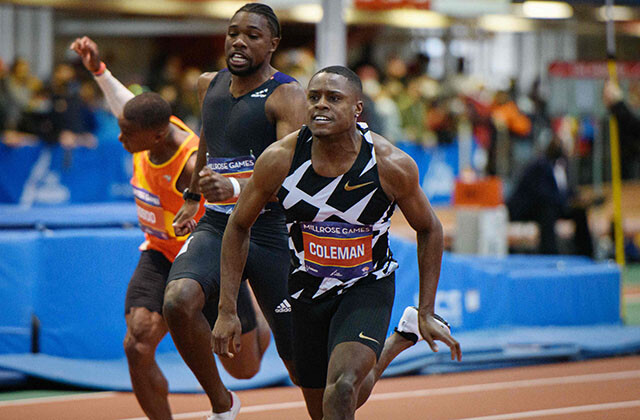
“I am honored and excited to be part of this year’s Prefontaine Classic at the University of Oregon in Eugene,” said Italy’s Olympic 100m champion Jacobs, who also claimed the world indoor 60m title in Belgrade last month.
“It’s going to be my first race in the US since the Tokyo Olympics and the adrenaline is already pumping. I can’t wait to feel the track beneath my feet.”
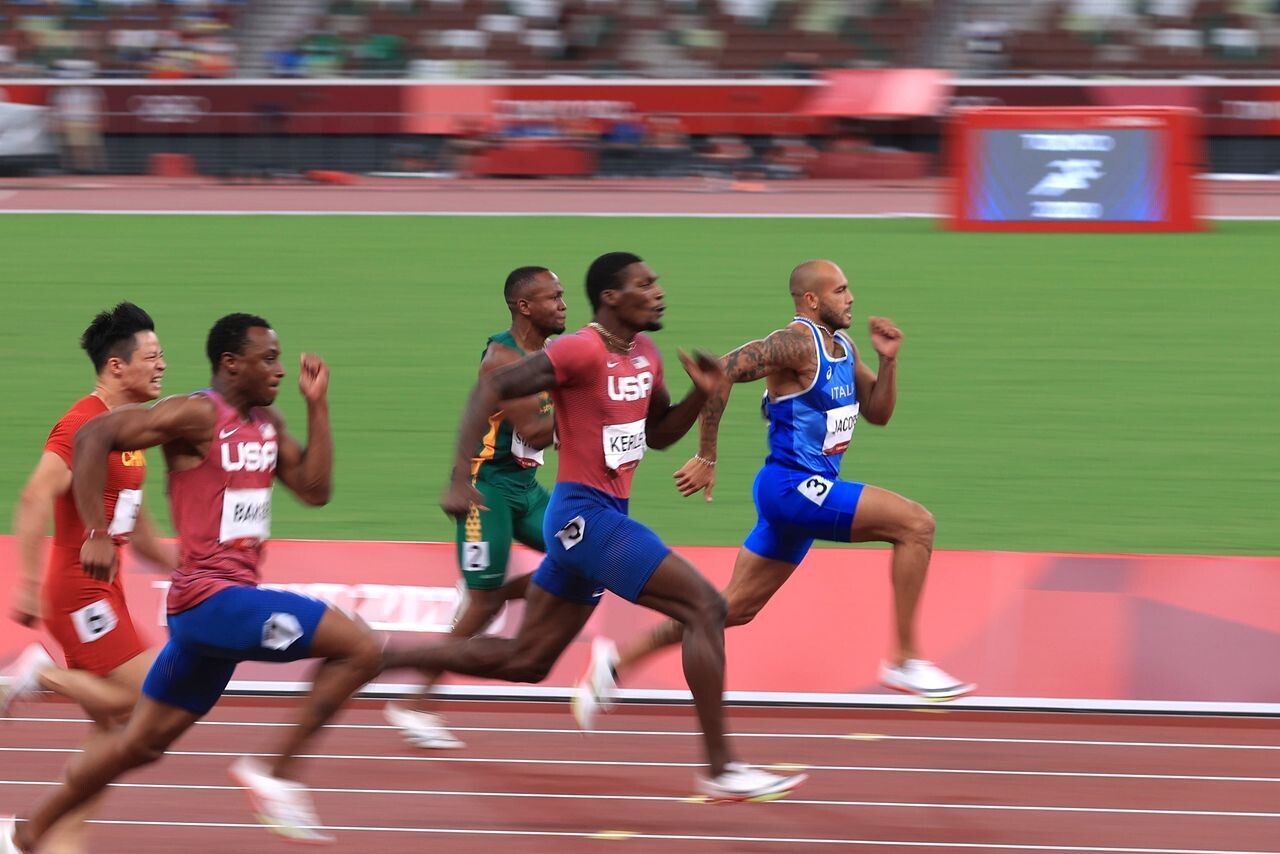
De Grasse won the 100m at last year’s Prefontaine Classic, a few weeks after becoming a three-time Olympic medalist in Tokyo. The Canadian claimed 4x100m silver and 100m bronze in Japan along with his 200m title.
Kerley secured 100m silver between Jacobs and De Grasse in Tokyo, while Bednarek gained silver and Lyles bronze behind De Grasse in the 200m. At the World Athletics Championships Belgrade 22, Jacobs was joined on the podium by silver medalist Coleman and bronze medalist Bracy.
The men's 100m is the latest in a number of strong fields announced for the Eugene meeting. All three Tokyo Olympic medallists – Athing Mu, Keely Hodgkinson and Raevyn Rogers – will race in the 800m, while champion Mondo Duplantis will take on his fellow Tokyo Olympic medalists Chris Nilsen and Thiago Braz in the pole vault.
Michael Norman, Michael Cherry and Kirani James will race the 400m, while Rai Benjamin and Alison Dos Santos will go head-to-head in the 400m hurdles and the 100m hurdles will pit Keni Harrison against Jasmine Camacho-Quinn. Yaroslava Mahuchikh and Nicola McDermott will renew their rivalry in the high jump.
(04/22/2022) ⚡AMPby World Athletics
Prefontaine Classic
The Pre Classic, part of the Diamond League series of international meets featuring Olympic-level athletes, is scheduled to be held at the new Hayward Field in Eugene. The Prefontaine Classicis the longest-running outdoor invitational track & field meet in America and is part of the elite Wanda Diamond League of meets held worldwide annually. The Pre Classic’s results score has...
more...Why distance runners should try training for the mile, Changing gears and training for a shorter distance can reinvigorate your training
Many runners tend to bump up to longer distances (like half-marathons and marathons) and then never look back, but if you’re in a rut, going shorter — a lot shorter — may be just what you need. In a training slump? Here are a few reasons why training for the mile could be the solution.
You’ll improve your form
Proper speed training will teach you how to run with good form. Many people assume that high-intensity, fast running is what causes injuries, but more often than not, injuries occur when your form starts to fall apart in the latter stages of a long run or race, or from overuse after weeks of very high mileage.
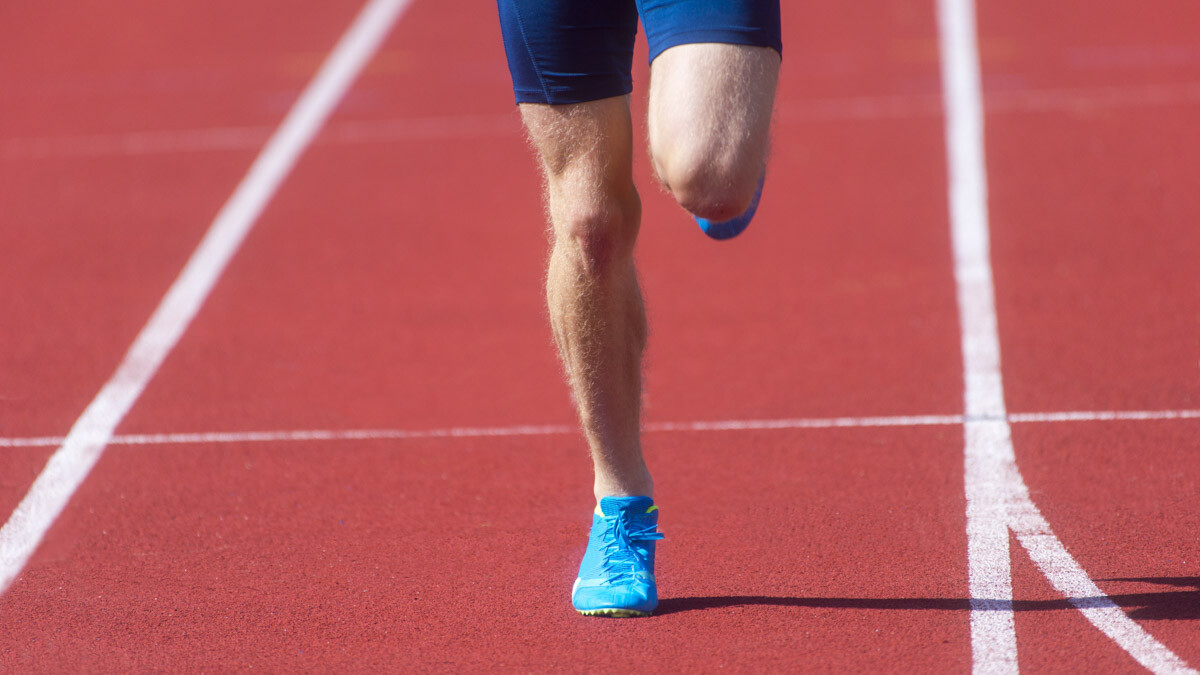
When training for the mile, it’s very helpful to enlist the help of a coach, who can give you guidance on proper running technique (and how to effectively practice it) so you can get the most out of this type of training.
You’ll get stronger
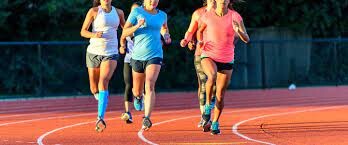
Speedwork is one of the best ways runners can build sport-specific strength. Mile training challenges your aerobic system, it also puts more stress on your mechanical system, since you’re running at a much faster pace than you would in a 5K or longer. This allows you to build the strength you need to maintain good running form over longer distances.
You’ll improve your lactate threshold
To run well in the mile, you need to have a very high lactate threshold, which allows you to run at faster speeds for much longer. Mile training programs are designed specifically to do this, which is also very beneficial for longer distances, since it will allow you to run faster in the 5K, 10K or even the marathon without hitting your breaking point.
It’ll bust you out of a rut
Training for the same distance over and over again can start to get stale, which can often lead to a plateau in performance. If this is the case for you, changing things up and training for something completely different than what you’re used to may be exactly what you need to reinvigorate your training and get you excited to lace up your shoes again. At the very least, doing some tough mile workouts will allow you to appreciate those marathon-pace workouts when you bump back up in distance again.
If you’re thinking of giving the mile a try, we highly recommend hiring a coach, or at the very least, following an online training program to make sure you do it properly. This will ensure your training is effective and that you stay healthy so that when you do decide to try a longer distance again, you’ll be ready for it.
(04/22/2022) ⚡AMPby Running Magazine
2022 Maui Marathon celebrates return, 50th year this Sunday
The long wait for the return of the Maui Marathon, celebrating its 50th year, is almost over.
Race director Jon Emerson said Tuesday that the Valley Isle Road Runners board, volunteers and runners are ready to hit the pavement from Kahului to Kaanapali on Sunday as the race is conducted in person for the first time in two and a half years due to the pandemic.
“We have all been under the umbrella of COVID for over two years, but this weekend, people finally have the opportunity to break out from under that umbrella and enjoy being with others as an organized group,” Emerson said. “We can’t wait to host the Maui Marathon again for family and friends and the whole running community.”
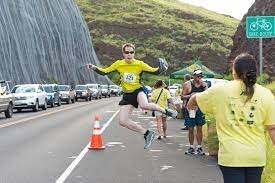
The Maui Marathon includes the marathon, half marathon, 10- and 5-kilometer run/walk, and a four-person marathon relay, and is the longest consecutively held running event in the state, according to the race website.
The Maui Marathon would have celebrated its 50th year in October 2020, but the event was canceled due to COVID health and safety protocols. It switched to a virtual event in April 2021.
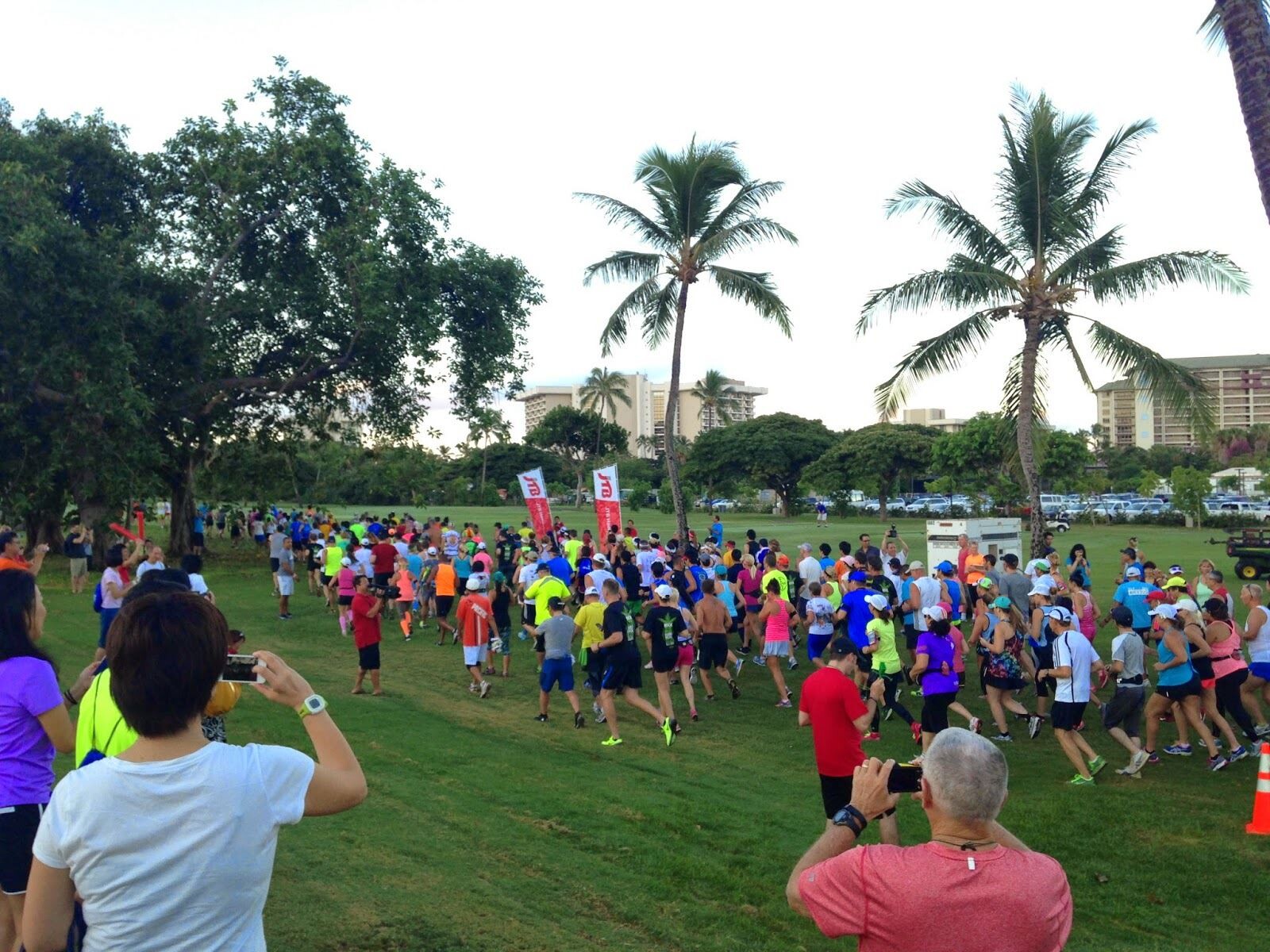
To keep consistency in the future, the Maui Marathon will permanently become a spring race held in April.
There are about 2,000 people who registered for the event this year, Emerson said. The races usually attract another few thousand spectators.
The 26.2-mile race begins at 5 a.m. at the Old Sugar Mill on Maui Veterans Highway in Kahului. Runners will then embark over the pali heading to West Maui, winding through Lahaina and finishing in the Ka’anapali Beach Resort.
The other races will start at 5:30 a.m. and end at the resort for a out-and-back route.
“I’m very excited to see so many people running with other runners and enjoying the outdoors in the fresh air as the sun comes up,” Emerson said. “This is going to be a great, family-friendly day that many of us have been waiting for.”
There will be a packet pickup at the Ka’anapali Beach Hotel in the Ohana Room on Friday from noon to 6 p.m. and from 9 a.m. to 5 p.m. on Saturday.
Though online registration is closed, late race entries will be accepted at packet pickup.
Race course director Jim Lynch said that drivers should expect traffic delays, road closures and re-routing throughout the morning of the event and until approximately 1:30 p.m. Sunday. Several off-duty Maui police officers will be posted throughout the course directing traffic and drivers are asked to be aware of runners on the road.
Virtual runners can participate by choosing between the distances and run any route anytime from now until April 30.
A pre-race 3-mile shakeout run with Jackie and Martin of Level Up Maui is set for 6:30 a.m. on Saturday in front of the Ka’anapali Beach Hotel.
For more information, visit mauimarathon.com.
(04/21/2022) ⚡AMPby Dakota Grossman
Maui Marathon
The Maui Marathon features one of the most scenic courses in the world – a point-to-point route that starts in Kahulu, passes sugar cane fields, and then hugs the spectacular Pacific coast line for more than 17 breath taking miles before the race finish in Ka’anapoli. Scenic beauty, however, is only one of the things this event has going for...
more...Aliphine Tuliamuk, Jared Ward, Caroline Rotich and Abdi Abdirahman are ready to race the streets of Pittsburgh
Aliphine Tuliamuk, Jared Ward and Abdi Abdirahman are ready to race the streets of Pittsburgh in the UPMC Health Plan Pittsburgh Half Marathon, scheduled for Sunday, May 1. Each of the members of this talented trio have a special connection to the City of the Champions and will embrace the city’s renowned sports fans and spectators to help them shine on race day.
Men’s Division
Ward and Abdirahman lead a talented field of top international and American runners who will be competing for the $10,000 top prize. Abdirahman, who is a 5-time Olympian, has never been to Pittsburgh but is a big fan of the city.
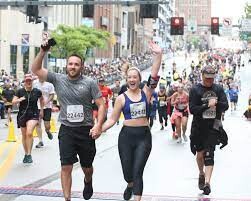
“It has been a dream of mine to race in Pittsburgh,” Abdirahman said. “It will be my first time in the city, and I am a big Steelers fan. I am looking forward to running the Pittsburgh Half Marathon. Training has been going great leading to this race, and I am excited to test my fitness.”
Ward will finally make his Pittsburgh racing debut after planning to run in 2020 and 2021 before the in-person events were canceled both years. He is excited to return to the city, which he hasn’t visited since he spent two years on Mormon mission after high school.

“I’m beyond excited to return to Pittsburgh,” Ward said. “I feel like I grew up here, while serving a mission for the Church of Jesus Christ of Latter-day Saints. I look forward to seeing friends and touring around ‘dahntahn’ – this time on the streets as a runner.”
Joining Abdirahman and Ward in the men’s race is James Ngandu of Kenya, who earlier this year won the Houston Marathon, and American Lawi Lalang, an eight-time NCAA champion who holds a half-marathon personal best of 1:02:49. Wesley Kiptoo, who was the 2021 NCAA Indoor National Champion at 5,000 meters, will also make his half-marathon debut at the event. Local runners Colin Martin, who holds a personal record of 1:05:19, and Nick Wolk, who won the 2021 Richard S. Caliguiri City of Pittsburgh Great Race 5K and 10K, will also race.
Women’s Division
Aliphine Tuliamuk is excited to return to Pittsburgh to run her first race since the Tokyo Olympics. In 2015, she ran her first marathon at the DICK’S Sporting Goods Pittsburgh Marathon, finishing in second in 2:34:44. She returned in 2018 to win the USA Half Marathon Championships.
“Pittsburgh has become a special city for me,” Tuliamuk said. “It’s where I learned that the marathon was painful but worth the struggle. Winning the 2018 USATF Half Marathon Championship gave me much needed confidence as I built toward the 2020 U.S. Olympic Trials. This year I am hoping for the same competitive atmosphere that Pittsburgh always brings. It will be my first race in a while, and I wanted to come to a place where I feel comfortable.”
Her speed will be tested against Caroline Rotich, who won the 2015 Boston Marathon and has a half-marathon personal best of 1:08:53.
“This will be my first time coming to Pittsburgh,” Rotich said. “It’s always exciting to travel to new places and Pittsburgh has been on my bucket list. I’m motivated to capitalize on my training this spring, rather than refocus on another marathon. I am feeling fit and ready to run fast in Pittsburgh.”
The field also includes Jordan Hasay, who is the fourth fastest U.S. women’s marathoner of all-time and Canadian cross-country skier and Olympian Anne Marie Comeau. Local Pittsburgh runner Margo Malone, who ran in the 2020 U.S. Marathon Olympic Team Trials, will also compete.
This year’s UPMC Health Plan Pittsburgh Half Marathon offers a prize of $58,000, including $10,000 each for the top men’s and women’s finishers. For the first time, the event has been awarded a World Athletics Road Race Label. Only five other U.S. races carry a label from World Athletics.
About the DICK’S Sporting Goods Pittsburgh Marathon Weekend of Events
The Pittsburgh Marathon was held annually from 1985-2003. After a five-year hiatus, the DICK’S Sporting Goods Pittsburgh Marathon was relaunched in 2009 and debuted with a sold-out field of 10,000 participants. It has grown each year since, evolving from a single race day into a weekend of events for the whole family that annually attracts nearly 40,000 runners.
For more information about the 2022 DICK’S Sporting Goods Pittsburgh Marathon Weekend of Events, visit www.thePittsburghMarathon.com.
(04/21/2022) ⚡AMPby Running USA
Dick's Sporting Good Pittsburgh Marathon
This race is your game - however you decide to play it. As a competitor. A fund raiser. An enthusiast. A veteran. A team player. It's whatever you want it to be. It's whatever you make it. It's YOUR game..... Run it. Play it. Own it. Love it. Runners will race on the North Shore of Pittsburgh, cross each of...
more...Yalemzerf Yehualaw among strong field of elite runners in Hamburg
The Haspa Marathon Hamburg returns to its traditional spring date on Sunday for the first time since 2019 with probably the strongest elite fields in the history of the event. Last year’s race was held under strict Covid regulations with less than 5,000 runners and almost no elite athletes.
The event on Sunday (April 24) will be the complete opposite: Including events at shorter distances organisers registered over 20,000 athletes from 65 nations and the elite fields boost eleven runners with personal bests of sub 2:08 and seven women who ran below 2:27. However the star name on the start list is not among them: Ethiopia’s 10k world record holder Yalemzerf Yehualaw will run her much anticipated debut at the Haspa Marathon Hamburg.
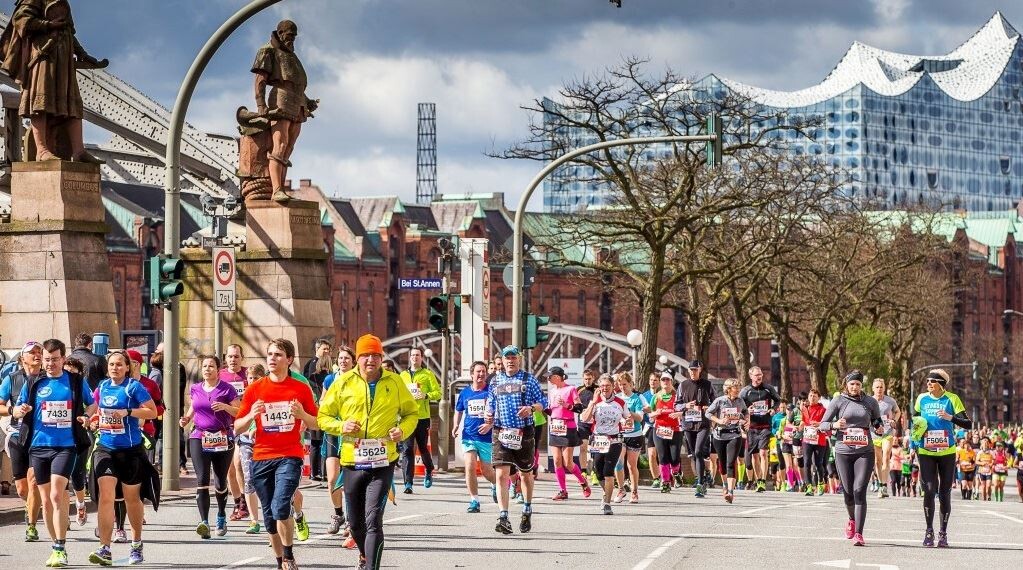
Germany’s biggest spring marathon, which will see its 36th edition, will be streamed live worldwide on Sunday from 9.20am (European time) at: www.haspa-marathon-hamburg.de
“We are happy to be back in the spring with a large race and with a very strong elite field. I am really looking forward to some very good performances. We hope to see a women’s course record on Sunday,“ said chief organiser Frank Thaleiser.
The city of Hamburg might well be the place to see a new marathon star emerge on Sunday. And it would not be the first time this happens in the “Hansestadt“: Kenya’s superstar Eliud Kipchoge won his marathon debut here in 2013 with 2:05:30 which is still the course record.
Could Yalemzerf Yehualaw start an extraordinary marathon career in Hamburg as well? The 22 year-old Ethiopian brings all the requirements and characteristics for success in the marathon. With a half marathon PB of 63:51 she is the second fastest ever at this distance. Additionally Yalemzerf Yehualaw smashed the 10k world record this February with 29:14 in Castellon, Spain.
“Yalemzerf has trained well and we are looking forward to a promising and interesting marathon debut,“ said Jurrie van der Velden, who is the elite coordinator of the Haspa Marathon Hamburg.
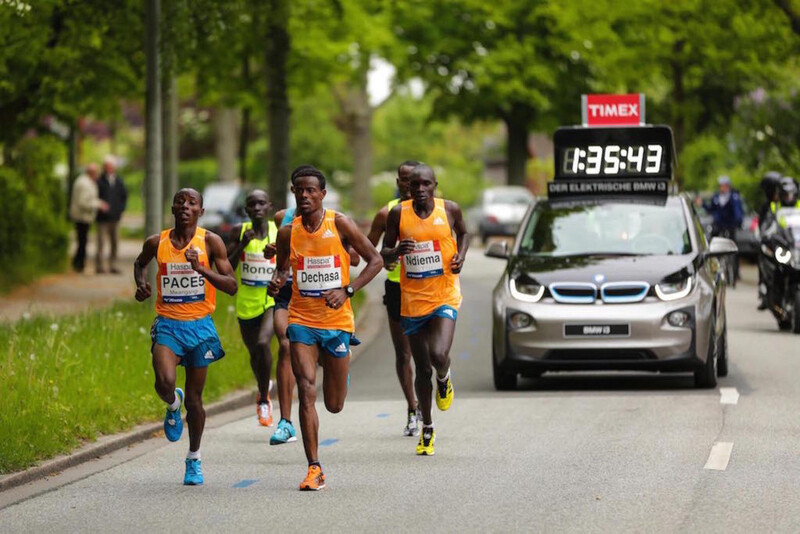
Unfortunately Yalemzerf Yehualaw’s flight to Hamburg was delayed so that she missed the press conference on Thursday. The Ethiopian could produce one of the fastest debuts ever and break the course record. Fellow-Ethiopian Meselech Melkamu is the current course record holder with a time of 2:21:54 from 2016. Despite running her debut Yalemzerf Yehualaw must be regarded as the favourite.
While the Olympic silver medallist of the London Games in 2021, Priscah Jeptoo of Kenya, is the fastest on the start list with 2:20:14 there are two women in the field who have won the Haspa Marathon Hamburg. Gadise Mulu is the defending champion and fellow-Ethiopian Dibabe Kuma, who took the race in 2019, is the second fastest on the start list with her PB of 2:23:24.
While the elite women often have their individual pacemakers Jurrie van der Velden hopes that a group of athletes will run together for at least the first half of the race. “The pace for this group will likely be between 70:30 and 71:00,“ he said.
Deborah Schöneborn and Kristina Hendel are the the top German runners in Hamburg. Schöneborn, who achieved a strong 18th place in the Olympic marathon last year, has a PB of 2:26:55. However she carried an injury during the winter months and is probably not yet at her best. Hendel has received German citizenship and hopes to be eligible to compete for Germany at the European Championships. Internationally at the moment she is still registered as Croatian. Kristina Hendel ran a 2:27:31 debut marathon last autumn and hopes to improve to around 2:25 in Hamburg.
Three men will be going to the starting line on Sunday knowing they have run faster than Eliud Kipchoge’s Hamburg course record of 2:05:30. Since Guye Adola had to withdraw due to an injury fellow-Ethiopian Abebe Negewo, who was also known as Abebe Degefa, now heads the start lists with a PB of 2:04:06 which he ran in Valencia in 2019. With Ethiopia’s Tsegaye Mekonnen the winner of the Haspa Marathon Hamburg 2017 returns.
He still is the unofficial world junior record holder with a time of 2:04:32. It was around half a year ago when Barselius Kipyego of Kenya clocked his PB of 2:04:48 in Paris.
“For a number of athletes this will be their first major international race since the start of the pandemic. We hope that they will do very well,“ said Jurrie van der Velden. “The weather looks good at the moment. If it is like this on Sunday we are optimistic to see times of around 2:05.“
Philipp Pflieger, who has a personal best of 2:12:15, and Johannes Motschmann carry national hopes on Sunday. Motschmann ran 2:12:18 in Rotterdam last autumn and showed promising form recently at the Berlin Half Marathon where he improved to 61:45. As a number of other athletes he hopes to achieve the qualifying standard for the World Championships of 2:11:30 in Hamburg.
Elite runners with personal bests
Men:
Abebe Negewo ETH 2:04:06
Tsegaye Mekonnen ETH 2:04:32
Barselius Kipyego KEN 2:04:48
Dejene Debele ETH 2:05:46
Simon Kipkosgei KEN 2:07:07
Cybrian Kotut KEN 2:07:11
Bernard Ngeno KEN 2:07:18
Amos Mitei KEN 2:07:28
Workineh Tadesse ETH 2:07:42
Abrar Osman ERI 2:07:46
Mustafa Kedir ETH 2:07:49
Alfred Koech KEN 2:09:01
Victor Kiplangat UGA 2:10:18
Bazezew Asmare ETH 2:10:51
Masresha Bere ETH 2:10:55
Arturo Esparza MEX 2:11:04
Philipp Pflieger GER 2:12:15
Johannes Motschmann GER 2:12:18
Gasper Csere HUN 2:14:34
Dario Castro MEX 2:14:51
Marco Salami ITA 2:14:57
Stephen Kissa UGA Debut
Ronald Kirui KEN Debut
Ibrahim Hassan DJI Debut
Filimon Abraham GER Debut
Women:
Priscah Jeptoo KEN 2:20:14
Dibabe Kuma ETH 2:23:24
Carla Rocha POR 2:24:47
Tseginesh Mekonnen ETH 2:24:50
Gadise Mulu ETH 2:26:20
Alice Cherono KEN 2:26:51
Deborah Schöneborn GER 2:26:55
Kristina Hendel CRO 2:27:31
Rosa Chacha ECU 2:28:17
Andreia Hessel BRA 2:34:55
Maria Sagnes Wagan NOR 2:35:34
Camilla Elofsson SWE 2:35:37
Yalemzerf Yehualaw ETH Debut
Alia Mohamed UAE Debut
(04/21/2022) ⚡AMPHaspa Marathon Hamburg
The HASPA MARATHON HAMBURG is Germany’s biggest spring marathon and since 1986 the first one to paint the blue line on the roads. Hamburcourse record is fast (2:05:30), the metropolitan city (1.8 million residents) lets the euphoric atmosphere spill over and carry you to the finish. Make this experience first hand and follow the Blue Line....
more...Big Sur International Marathon makes its return Sunday
Three years is a long time to wait at the starting line. But the Big Sur International Marathon is raring to go.
Canceled in both 2020 and 2021 because of COVID-19 safety concerns, the world-renowned race returns this weekend, where a sold out slate of about 9,800 entrants will take part.
“It feels good to be back,” said Doug Thurston, race director and executive director of the Big Sur Marathon Foundation, which organizes both the Big Sur International Marathon and Monterey Bay Half-Marathon each year. “Runners have responded well, and we’re ready for a great race.”

Speaking to an unabated enthusiasm for the event, Thurston explained that racing slots filled as quickly – if not quicker – than they “ever had before.” The Big Sur International Marathon has sold out in each of the past 10 years it has been held. To the excitement of Thurston, the Big Sur Marathon Foundation, and a more than 100-person organizing committee that manages the event year-round, 2022 proved to be no different.
“It’s a great testament to our volunteers and the community,” said Thurston. “The scenery can’t be beat, but good scenery doesn’t mean a great race. Great volunteers and community support for more than 30 years speaks volumes to how important the race is. (And) they’re anxious to provide a world-class experience to people this weekend.”
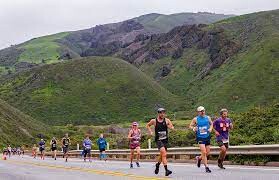
The much-anticipated affair will kick off early Sunday morning, with marathoners taking their mark at Big Sur Station at 6:35 a.m. Beyond the 26-mile, 365-yard scenic stretch along Highway 1, runners are set to take part in a host of other races happening alongside the big distance, including a 21-miler, 11-miler, 12K and 5K. All are set to commence before 8 a.m. Sunday.
Though years have passed since runners were last invited to skirt the Big Sur coastline, Thurston said the course itself is reminiscent of previous races, barring a few recent upgrades meant to render routes safer. Those include a freshly paved roadway and a revamped starting line process, Thurston said.
Yet, what may bring an added element of notoriety to this year’s slate of races – apart from the anticipation of their return – is an enhanced backdrop, Thurston continued, even if topping the peak of picturesque is hard to imagine.
“I think these mid-spring rains that we had last weekend and are anticipating over the next couple of days will make this one of the most green and most spectacular races for runners to enjoy,” he explained. “There’s going to be some special color along hills with wildflowers and things. … It’s going to be beautiful.”
Entrants set to relish in the panoramic trek include five-time Big Sur International Marathon men’s champion Adam Roach, defending 2019 men’s champion Jordan Tropf and elite runner Ben Bruce. Between the three, Thurston is anticipating an “interesting” race, particularly among Tropf and Bruce, who both just competed in the Boston Marathon Monday.
The Big Sur International Marathon includes a special category for those runners determined enough to take on both events: Boston 2 Big Sur. Attracting 400 of the world’s fittest athletes, the challenge combines Boston and Big Sur chip times and awards participants for their pace across the two marathons. This year, the races are less than six days apart. That’s more than 52 miles of running in the span of a week.
Besides those poised to push racing limits, Thurston said he’s particularly looking forward to a group of runners he dubs the “grizzled veterans,” who have participated in every Big Sur International Marathon since it started in 1986.
Still, Thurston said well over a majority – more than 80% – of entrants in the races each year are first and only timers to the event.
“For thousands and thousands of runners, this is their one opportunity to experience something like this,” he said.
That desire to check off the Big Sur International Marathon on a larger running bucket list, Thurston added, is a factor in why 30% of runners previously entered in the canceled 2020 event returned this year to finally satisfy their ambition. These already listed entrants had priority coming into the 2022 race. Thurston is glad to see some retain their racing plans two years later.
“People had invested time and energy in preparing for the race,” he said. “Nobody knew in the summer of 2019 when folks registered that there would be a pandemic in late winter of 2020. …But it was canceled five to six weeks before they could participate. Now they can look forward to doing it again.”
For non-runners looking to watch, the only spectating opportunity will be at the finish line at Rio Road in Carmel. There will be no points to watch at the start or along the course. Non-official bicycles are likewise not allowed Sunday. While the marathon goes on – which is bound to a six-hour course limit – Highway 1 will be closed to traffic. It will reopen at 1 p.m. Sunday.
While proof of vaccination or recent negative test will not be required to attend the event per current county guidelines, organizers are strongly encouraging all entrants and attendees to arrive fully vaccinated or be tested for COVID within 48 hours of their visit if unvaccinated. Thurston also noted that masks will be worn on buses carting runners to the starting line. Those taking part in Friday and Saturday’s pre-race Health and Fitness Expo at the Monterey Conference Center will also be asked to wear masks, Thurston said.
More information about this weekend’s Big Sur International Marathon can be found at https://www.bigsurmarathon.org/.
(04/21/2022) ⚡AMPby Tess Kenny
Big Sur Marathon
The Big Sur Marathon follows the most beautiful coastline in the world and, for runners, one of the most challenging. The athletes who participate may draw inspiration from the spectacular views, but it takes major discipline to conquer the hills of Highway One on the way to the finish line. Named "Best Marathon in North America" by The Ultimate Guide...
more...Should I base my training off of RPE? Rate of perceived exertion is a great way to monitor your effort levels without the tech, and can help you out of a slump
There are many ways to measure your effort levels on a run: pace, heart rate and blood lactate levels are just a few. Rate of perceived exertion (RPE) is often overlooked by runners in favour of more data-driven approaches but it’s a valuable tool to gauge your effort level and control your pace for different types of runs during your training.
What is RPE?

RPE involves measuring how hard you’re working, typically based on a scale of 1-10, with 1 being no activity and 10 being an all-out sprint. It’s a great way to get in touch with your body and monitor your effort levels without relying on technology or getting too caught up in the numbers.
No two runs are the same, and every day your performance could be affected by a number of internal and external factors, including weather, what type of shoes you’re wearing, the terrain, your own fatigue levels, how well-fueled you are and even how motivated you are to train. The advantage of RPE is that it accounts for all of these factors. One day, you could be running at 5 minutes/kilometre and you might put yourself at a 5 on the RPE scale, while on another day the same pace could feel more like a six or seven.
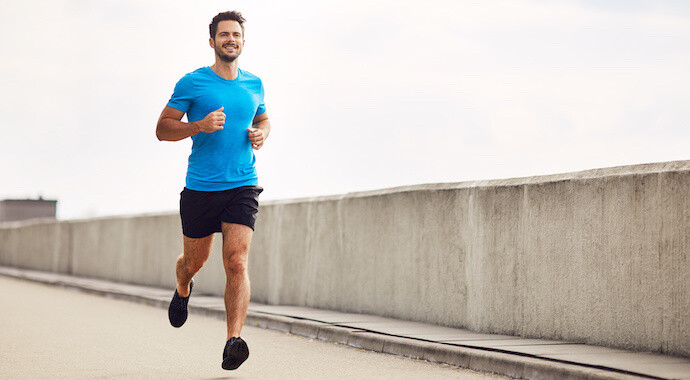
RPE vs. HR
Heart rate (HR) training is a close cousin to RPE. There are a few similarities, namely that both account for the internal and external factors that could affect your body on a run. This is because in general, your heart rate tends to correspond quite nicely with RPE, with a few notable exceptions:
It may not work for new runners or de-conditioned runners. When you’re first starting out (or coming back after a long layoff) and you don’t have a high degree of running fitness, your heart rate will climb much higher and faster than a well-trained athlete. You might be running at what you feel is a five or six on the RPE scale, but your heart rate might be much higher, suggesting you’re running at a much higher intensity.
It may not be accurate in the heat. When it’s really hot outside (and especially when it’s humid), your heart rate will be much higher than in the cool weather, even if you’re running at an intensity that feels easy or moderate.
Cardiac drift could affect your heart rate data. It’s normal for your heart rate to naturally drift upward during a run, even if you maintain the same pace throughout the entire thing. It’s mostly caused by the natural rise in body temperature as you run, and can cause a heart rate increase of up to 10-20 beats per minute, even if your effort level stays the same.
The advantages of RPE
While there are many reasons to use heart rate or other metrics to measure your effort level, there are a number of advantages to using RPE:
You don’t need any gadgets. For the runner who prefers to go tech-free, RPE is great because it doesn’t require a watch, heart rate monitor or any other gadgets.
RPE accounts for other external factors. Your heart rate can be affected by sleep, stress, caffeine, warm temperatures, warm temperatures and even some medications. RPE takes these factors into account, allowing you to push yourself to the right level within those specific circumstances.
It helps you listen to your body. One of the best weapons for any runner is understanding your own body and learning its signals, so you know when to push yourself harder and when to back off. This will help you avoid injuries and overtraining, which will ultimately improve your performance.
Disadvantages of RPE
RPE is a great way to measure effort and intensity for most runners, but there are a few disadvantages:
For sedentary people. If you’re just starting to run after being mostly sedentary, even a slow, short run is going to feel difficult. Once you’ve been running for a while and your fitness starts to improve, you’ll be able to use the scale more effectively.
It’s subjective. Without actual numbers, RPE is difficult to accurately measure, and some people will underestimate their effort while others may overestimate it.
The bottom line
RPE is an excellent tool for runners to measure their effort because it takes into account the internal and external factors that may affect your ability to perform. While many runners prefer to use a more data-driven approach to their training, RPE can help you bust out of a slump by teaching you to listen to your body so you know when to go hard and when to back off.
(04/21/2022) ⚡AMPby Brittany Hambleton
Former athlete Catherine Makau aiming to produce world beaters
When former athlete Catherine Makau visited the hilly area of Kea in Kitui County to distribute food to athletes in September, 2020 during the height of Covid-19, she was met with extraordinary scenes.
Over 300 athletes turned up for the exercise and it left Catherine’s mind brimming with ideas.
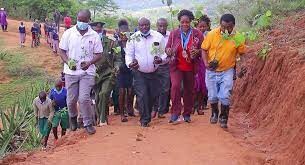
“As a former athlete, I saw potential, this being a high altitude area with lovely weather,” said Catherine, who is the wife of former world marathon record holder, Patrick Makau.
Catherine decided to start an athletics camp in the area in January last year, and the camp that is the latest in the country, now has over 60 athletes both junior and seniors.
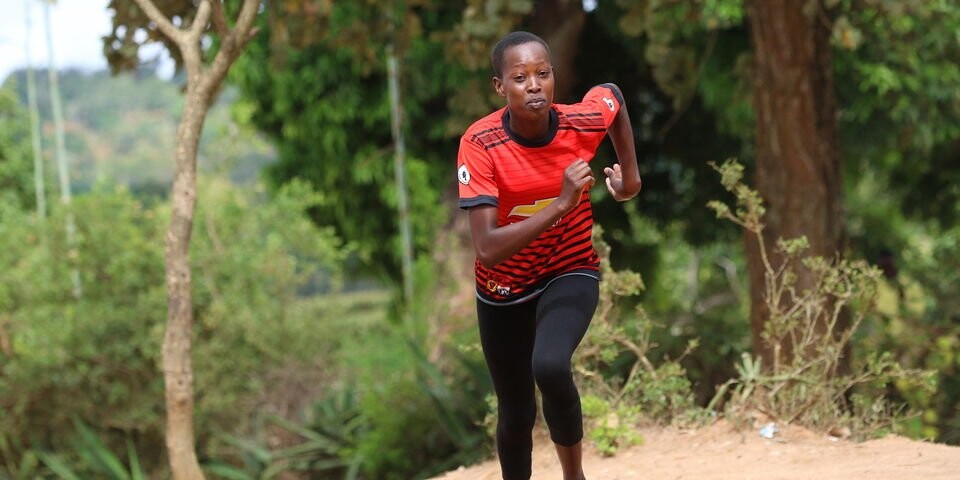
Kea Athletics Club is among three that were picked by Athletics Kenya to host holiday camps in the Southern region to prepare juniors for the World Under-20 Championships trials.
The others are Iuani Athletics Club in Makueni County and Talent Discovery and Development Centre, Machakos County.
Catherine is confident that just like Iuani and Machakos, they will be able to not only compete effectively during the trials, but also qualify some athletes for the world event.
Machakos produced seven athletes for the World Athletics Under-20 Championships held last year in Nairobi.
The World Under-20 Athletics Championships are slated for August 1 to 6 this year in Cali, Colombia.
Among the athletes that Catherine singled out from her pool of 20; 10 boys and 10 girls, are the 1,500m runner Josephine Kalekye, who finished fourth in the girls under-18 5km race during the Memorial Agnes Tirop World Athletics Cross Country Gold Tour in February.
Naomi Kimanzi (3,000m), Joshua Kithoku (5,000m), Alexander Matiti (1,500m) are the others with great potential to make Team Kenya.
“I only pray for an injury free season and hope to represent Kenya,” said Kimanzi, who finished seventh in women’s Under-20 6km race during the National Cross Country Championships in January in Eldoret.
“I want to emulate the World 5,9000m champion Hellen Obiri.”
Nelson Mandela (3,000m/5,000m), who finished fourth in men’s 10,000m during the third Athletics Kenya Track and Field Meeting at the Nyayo National Stadium, is among 50 juniors preparing at Iuani hills.
Others are Justus Muasya (1,500m) and Dennis Mutuku (3,000m).
Other juniors not in camp, but likely to make the Iauni team are Emmanuel Lemama and Faith Salome (800m).
Lemama, who finished second in men’s 1,500m to qualify for last year’s world under-20, but was later dropped due to injury, is currently at the Kenya Defence Forces Recruit Training College, while Salome is attending the Elite Youth Camp by the National Olympic Committee at Kenyatta University.
Machakos once again should provide a huge number from Southern to Team Kenya including Peter Kithome, who claimed bronze in 4x400m at the world under-20 and Jonathan Mutua.
Kithome and Mutua are currently with Kenyan juniors receiving specialised training at Miramas Athletics Club in France.
Javelin thrower Christine Musembi looks promising from Machakos alongside Jackline Mikayo (200m), Damaris Nduleve (400m), Agnes Syometi (400m hurdles), Sebastian Sinoti (400m) and Alex Nzioka (3,000m).
(04/20/2022) ⚡AMPby Ayumba Ayodi
400m workout to build strength and speed endurance
The key to running well over long distances is having the right balance between strength, speed and endurance. All three of these factors need to be cultivated over time through plenty of slow, easy mileage, as well as workouts like these 400m repeats. Unlike your classic 400m workout, the rest after each interval is slowly diminished, giving you less and less recovery time to build your strength and endurance while running fast.
Less rest for a big payoff
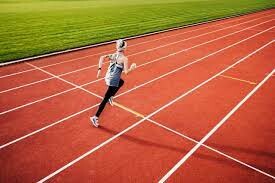
This workout is tough, but it’s an effective way to cultivate the skills you need to run well at the 10K or half-marathon distance. Both races are short enough that you can still attack them with some speed (especially the 10K) but long enough that you need a solid amount of endurance to make it to the end.
In each set, you take 60 seconds of rest after the first interval, 45 seconds after the second and 30 seconds after the third. The goal is to maintain your pace during each interval, despite the shorter recovery time. If you’re training for a 10K, aim to do two sets at 10K pace, and if you’re training for a half-marathon, aim for three sets at half-marathon pace (or faster, if you have it in you near the end).
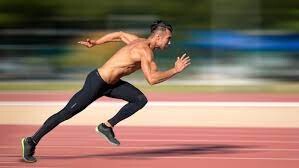
The workout
Warmup: 15-20 minutes easy jog, followed by form drills and strides.
Workout: 2-3 x (400m/60 sec rest/400m/45 sec rest/400m/30 sec rest/400m), take 3-4 minutes between each set.
Cooldown: 10-15 minutes easy jog, followed by light stretching.
(04/20/2022) ⚡AMPby Running Magazine
Boston Marathon race director Dave McGillivray completes his 50th Boston Marathon
On Monday afternoon, long after Lawrence Chebet and Peres Jepchirchir stormed to victory through the streets of Boston, race director Dave McGillivray crossed the finish line of the Boston Marathon for the 50th time.
McGillivray has been an avid runner for most of his life. He’s organized and completed multiple massive charity runs (including an 80-day, 3,452-mile run from Oregon to Massachusetts), competed in nine Ironman triathlons and ran, cycled and swam for a total of 1,522 miles through the six New England states.
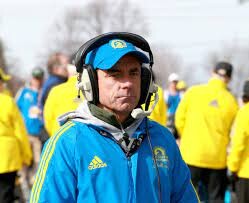
The first time McGillivray ran the Boston Marathon was in 1973 when he was 19 years old. He ran it with all the other runners for the next 16 years (including in 1982, when he ran 3:14 while blindfolded and escorted by two guides to raise more than $10,000 for the Carroll Center for the Blind in Newton, Massachusetts).
In 1988, McGillivray became the technical director for the race, so he began to run the course after the race was finished. He continued doing this every year, even when he became the official race director in 2000.
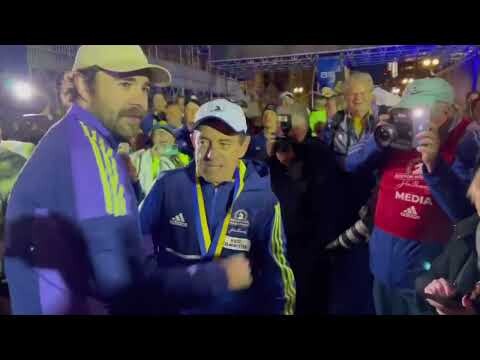
“Hard to put into words, 50 years have gone by so fast,” McGillivray told CBS Boston at the finish line. “But I have been blessed with being able to do a lot of this for charity, give back to a lot of different causes, and that’s what I hope my legacy is someday. Being able to help those in need.”
(04/20/2022) ⚡AMPby Brittany Hambleton
Boston Marathon
Among the nation’s oldest athletic clubs, the B.A.A. was established in 1887, and, in 1896, more than half of the U.S. Olympic Team at the first modern games was composed of B.A.A. club members. The Olympic Games provided the inspiration for the first Boston Marathon, which culminated the B.A.A. Games on April 19, 1897. John J. McDermott emerged from a...
more...Improve your aerobic threshold with this pyramid tempo workout
Albert Einstein once said, “If you do the same things as everyone else, you will have the same results as everyone else.”
Instead of doing a steady tempo over a certain amount of time, switch things up by breaking up the interval and speed on each rep. A tempo workout is a slight injection of speed that you can run at a comfortable level. A previous coach once told me that if you can’t answer a question or talk without feeling fatigued, then you are going too fast.
Switch up your workouts this spring/summer with this pyramid progression tempo designed to get your legs moving and help build your aerobic endurance, so that when you run your next race, you’ve got an extra gear when you need it.
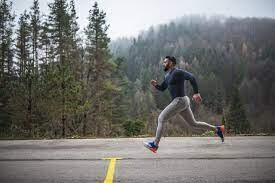
The workout
Four minutes, eight minutes, 12 minutes, eight minutes, four minutes (two minutes slow jog rest between reps)
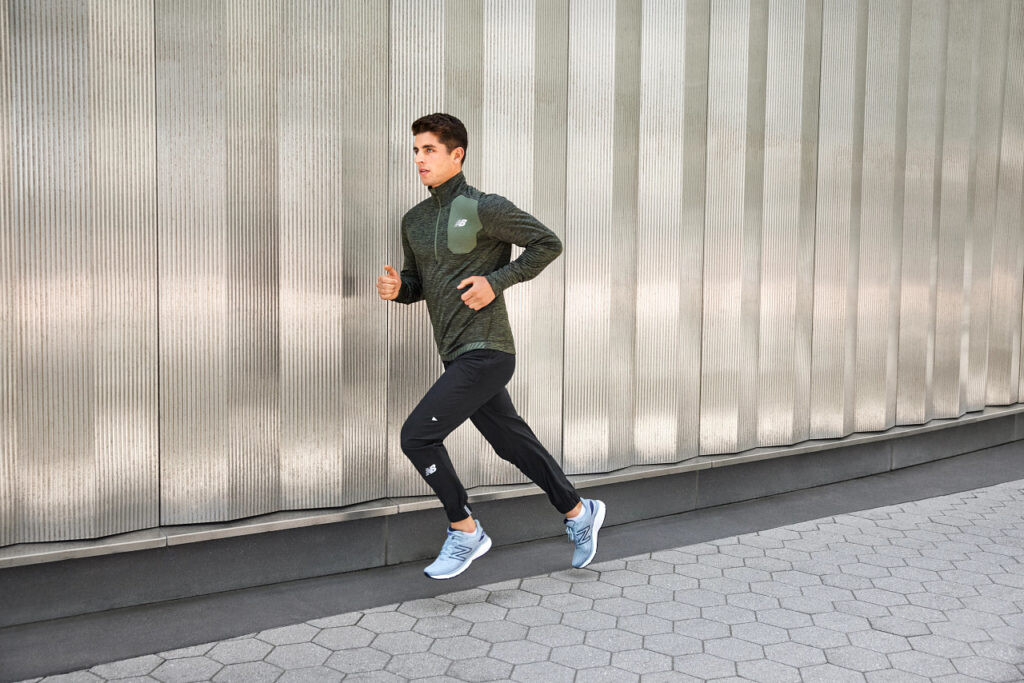
Start the workout around 30 to 40 seconds per kilometre slower than your 5K or 10K race pace for the first four-minute section, then gradually increase the pace by five seconds per kilometre for each rep. The first two reps should feel extremely easy, with your legs beginning to feel fatigued near the end of the third and fifth rep.
By the time of the last rep, your pace should be around 20 to 25 seconds faster than the pace you started at. On the last two reps, focus on maintaining your form and staying comfortable as you start to feel tired.
This workout is ideal for all runners training for races between 5K and the half-marathon, as it increases your lactate threshold, which is particularly important because it increases the speed you can run long distances without having lactate build up in your muscles.
(04/20/2022) ⚡AMPby Marley Dickinson
Foods to add to your grocery cart this spring, these seasonal foods will keep you running strong during the spring racing season
While parts of the country are still grappling with the last of their winter weather, runners can take heart knowing that spring is on its way. Not only do the warmer temperatures mean we can finally break out our shorts and t-shirts and work on our watch tans, they also mean local produce will begin popping up on grocery store shelves. As you’re doing your shopping in the next few weeks, look out for these foods to give your nutrition a spring cleaning.
Asparagus
Asparagus season starts early, so expect these slender green stalks to show up at your local farmers market any day now. A fantastic food for runners, asparagus contains the antioxidant glutathione, which helps repair the oxidative damage that occurs in your muscles after long, hard runs. This can help reduce your recovery time so you can feel fresh for your next run.

Asparagus also contains inulin, a prebiotic fibre that supports gut health. Having a healthy gut is important for runners because it keeps your immune system strong, which becomes even more crucial when you’re in the middle of a hard training block.
Beets
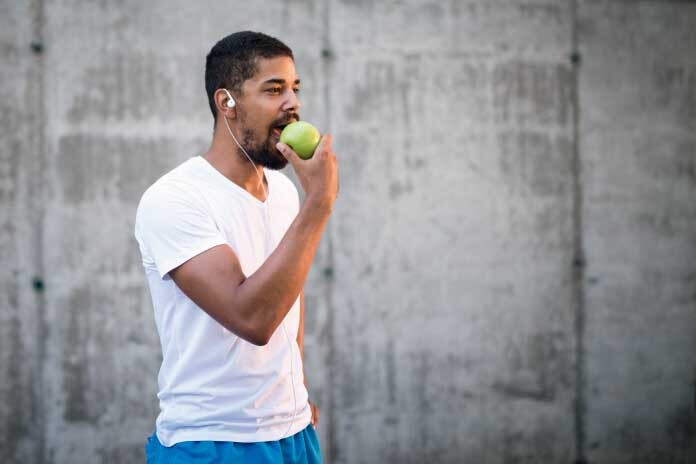
These earthy veggies have been in the spotlight before, thanks to their ability to increase the levels of nitric oxide (NO) in your blood, which increases blood flow to the muscles, stimulates mitochondria growth and strengthens muscle contractions, leading to significantly enhanced endurance in athletes. (Bonus: have some watermelon with your beets to boos their effects)
Beets are also high in folate, which helps your body regenerate healthy red blood cells that are needed to transport oxygen to your muscles during activity, as well as magnesium and potassium, both important nutrients to help you recover after a run.
Kale
Kale has hefty doses of over 20 nutrients and contains more than 45 different flavanoids that fight against oxidative stress and chronic inflammation. This can help you recover faster after hard runs and reduce muscle soreness so you can continue training, day after day.
Strawberries
Local strawberries start appearing on grocery store shelves near the end of spring and the beginning of summer, and they are worth the wait. These tasty little berries contain high levels of polyphenols and vitamin C, both of which can help repair muscle damage after a run. They’re also a good source of potassium, which can replace what you lost through sweat after a warm spring run.
Salmon
While you can get salmon year-round, spring is prime time for this healthy fish. Salmon is an excellent source of DHA and EPA omega-3 fatty acids, which reduce your risk for cardiovascular disease, improve your brain health and reduce your risk for injuries. They’re also great for fighting inflammation, which is especially important for runners, who often have higher levels of inflammation caused by heavy training. Salmon is also a great choice for runners who don’t eat dairy because it’s high in calcium and vitamin D, which are important for bone health.
Spring onion and garlic scapes
Both spring onions and garlic scapes are full of sulfur-containing compounds that fight inflammation to help speed up recovery after a hard run. Milder than regular garlic and onions, these goodies are delicious when tossed into a salad or stir fry. (As a bonus, you can often find large bundles of garlic scapes at farmers markets for barely a few bucks!)
Cucumber
The humble cucumber is a spring salad staple and contains at least 73 different phytonutrients, including Quercetin and Naringenin, two antioxidants that can reduce your risk for illness and injury. They’re also fantastic for re-hydrating after a warm run, thanks to their high water content.
(04/19/2022) ⚡AMPby Brittany Hambleton
Try this gear-changer workout to prepare for your next 5K
A key element to running well in the 5K is having a strong finishing kick. The following workout will teach you how to effectively change gears and crank up the pace when you’re already tired, so you can run strong straight through the finish line.
The workout
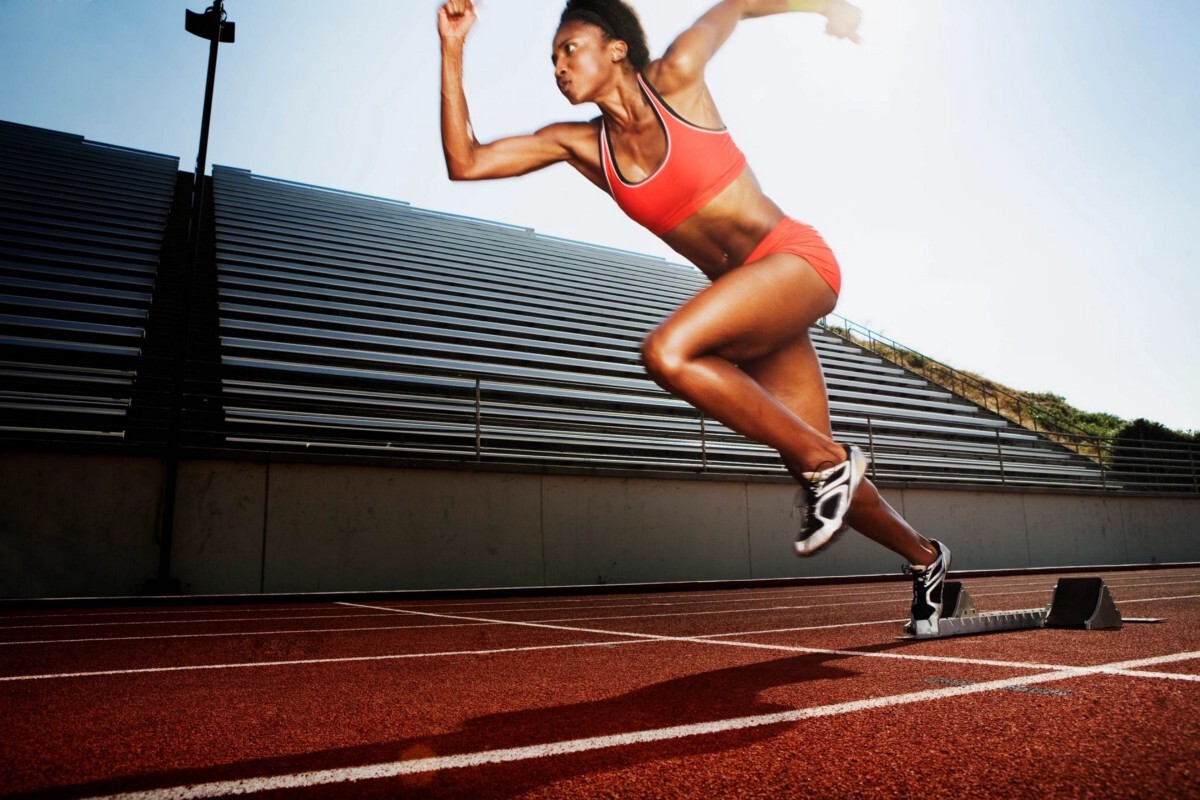
You can do this workout twice: once four weeks out from your goal race, and then again two weeks later. Each interval is broken up into two parts. In the first section, which ranges from 700m long down to 400m, run your goal 5K pace. In the second section, which ranges from 100m to 400m long, the goal is to accelerate and go all out to the finish line.
Warmup: 15-20 minute easy jog, followed by form drills and strides.
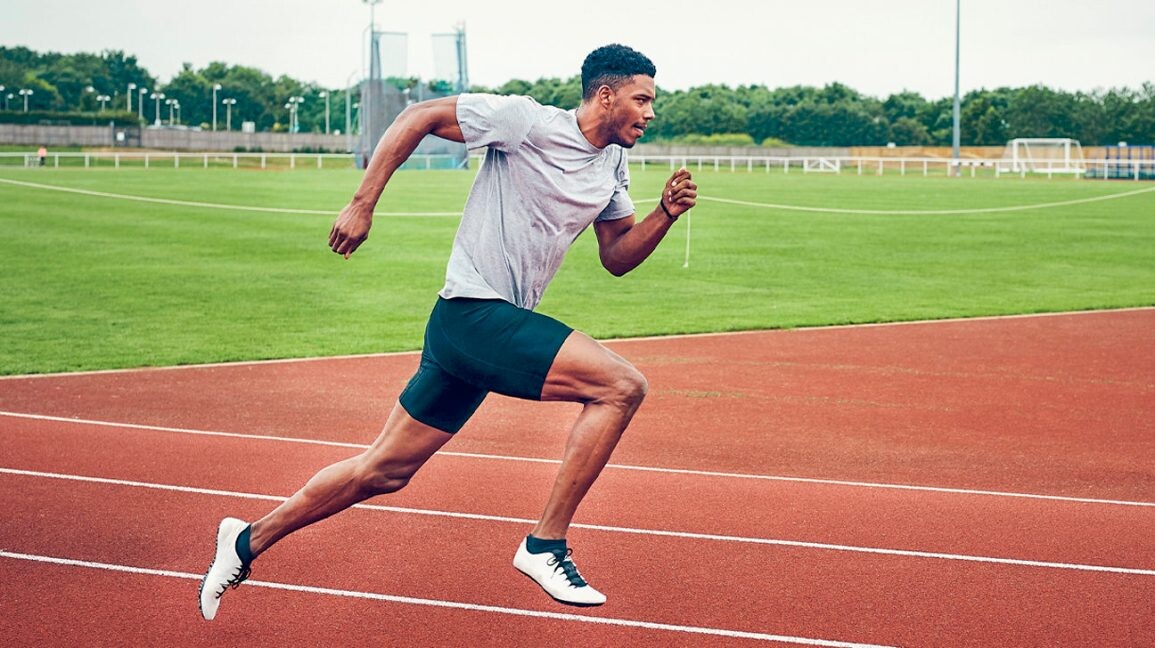
Workout: 4 x 800m with three to four minutes rest in between each. In the first interval, run 700m at 5K race pace, then accelerate for the final 100m. In the second, begin your acceleration after 600m, the third after 500m and the fourth after 400m.
Timed version: 4 x 3 minutes. In the first, run 5K pace for 2:30, and accelerate for the final 30 seconds. In the second, accelerate after 2:15, in the third accelerate after 2:00 and in the fourth accelerate after 1:30.
(04/19/2022) ⚡AMPby Running Magazine
Nell Rojas and Scott Fauble top americans at Boston Marathon
It was a Kenyan sweep at the Boston Marathon with Evan Chebet winning the men’s race in 2:06:51 and Peres Jepchirchir capturing the women’s title in 2:21:01.
The top Americas both have Colorado ties. Boulder’s Scott Fauble, who graduated from Wheat Ridge High School and is a two-time CHSAA champion, finished seventh among the men in 2 hours, 8 minutes, 52 seconds.
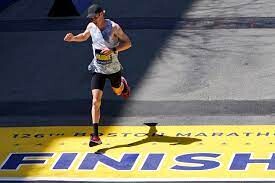
Boulder’s Nell Rojas, who was also top American last year, came in 10th among the women at 2:25:57.
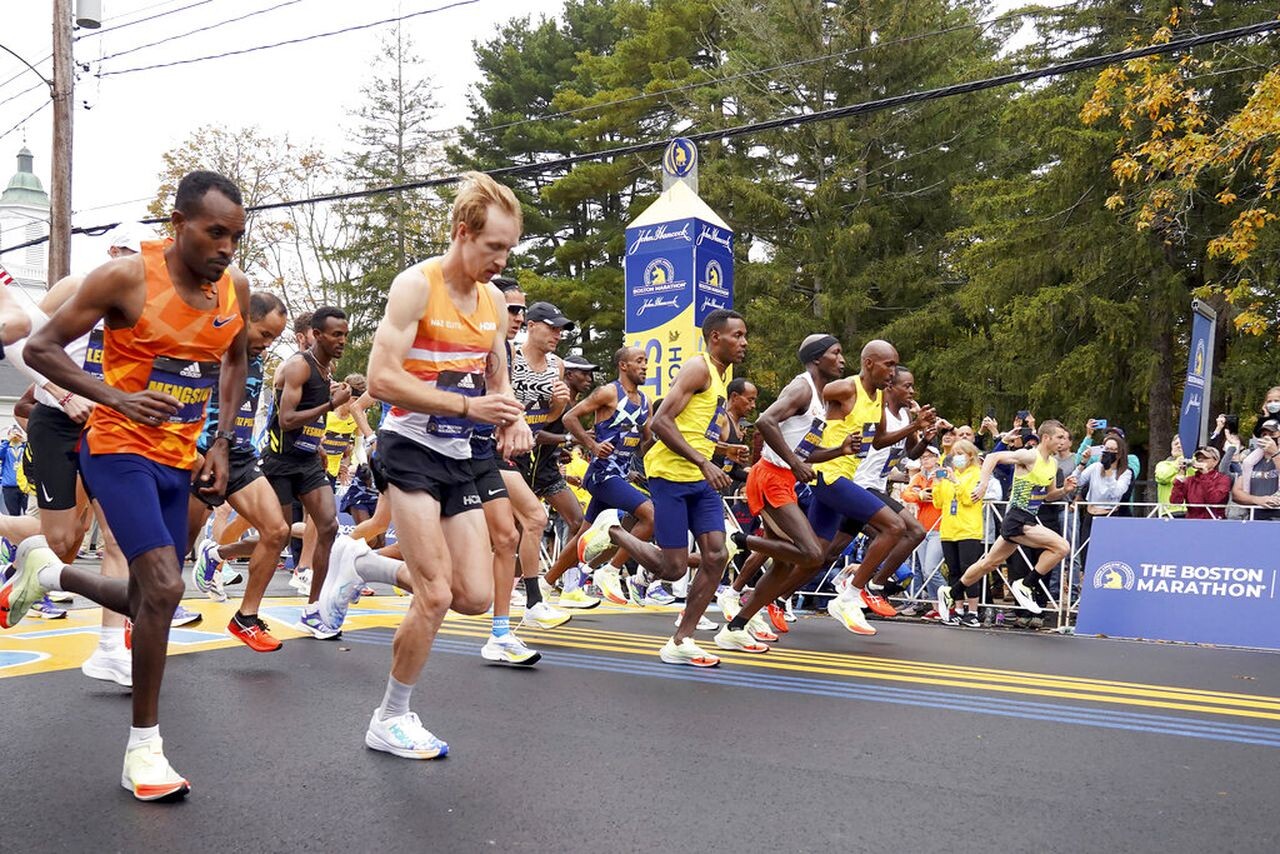
The 126th running of the Boston Marathon marked the event’s return to its spot on Patriots’ Day, the Massachusetts state holiday, for the first time in two years due to the coronavirus pandemic.
The Hopkinton, Massachusetts starting line saw 30,000 participants for the oldest annual marathon in the world.
(04/19/2022) ⚡AMPby Colorado Runner
Boston Marathon
Among the nation’s oldest athletic clubs, the B.A.A. was established in 1887, and, in 1896, more than half of the U.S. Olympic Team at the first modern games was composed of B.A.A. club members. The Olympic Games provided the inspiration for the first Boston Marathon, which culminated the B.A.A. Games on April 19, 1897. John J. McDermott emerged from a...
more...Five running mistakes that could lead to injury
Most running injuries are not caused by one little mistake, such as losing your footing as you’re running on a trail. They usually develop over the course of weeks, when you’re making LOTS of little mistakes, such as not varying your routine, running in worn-out shoes, or overtraining. Are you putting yourself at risk for injuries? Don’t make these common mistakes to avoid running injuries and keep running strong.
1.- Running Mistake: Doing Too Much, Too Soon
Many runners, especially people who are new to running, make the “terrible too’s” mistake. They get so excited about their running and eager for progress that they do too much mileage, too fast, too soon.
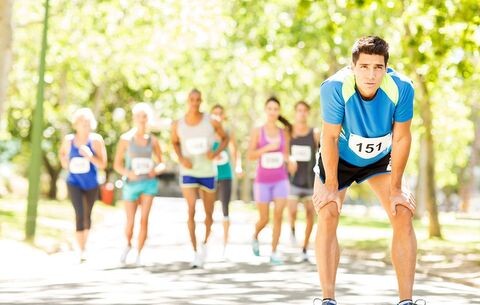
Some runners mistakenly think that “more is better” when it comes to running. As a result, they often start to develop common overuse running injuries, such as shin splints, runner’s knee, or ITB syndrome.
Be more conservative than you think you need to be with how often, how long, and how much you run, especially early on in your development. Increase your mileage gradually. Don’t let your weekly mileage increase by more than 10%. If you’re new to running or are coming off a long break, start with walking first, and then progress into a run/walk program.
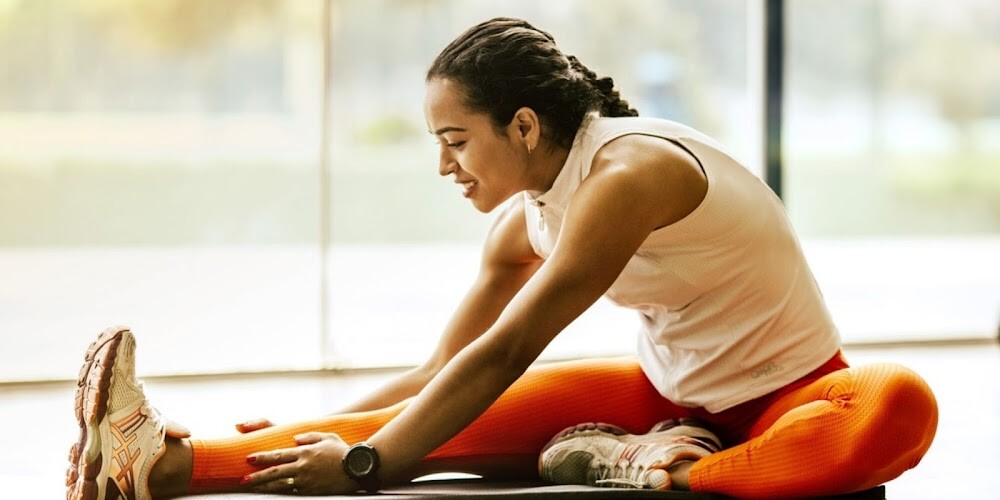
Pay attention to aches and pains. If a pain gets worse as you continue running, that’s a warning sign that you should stop your run. Listen to your body for injury warning signs and know when you shouldn’t run through pain.
Take at least one complete day off from exercise each and every week. Don’t ignore rest days — they’re important to your recovery and injury prevention efforts. Your muscles build and repair themselves during your rest days. So if you run every day, you’re not going to gain much strength and you’re increasing your risk of injury.
2.- Running Mistake: Not Varying Your Training
Most running injuries are repetitive stress injuries, caused by repeating the same movement (running the same way, at the same pace) over and over again.
Varying your workout routines can help reduce your injury risk. You can easily alter your training by running at different paces, changing your terrain and running surface, varying the elevation, cross-training, and rotating your running shoes.
Switching up the elevation, distance, and pace of your runs will not only help you prevent injury, you can also improve your running. Try adding some hill running, fartlek runs, and a long run to your weekly routine.
Of course, following a training schedule will give you variety in your training, but it’s also important that you listen to your body. If you have some nagging pain, don’t force a run at a certain pace or distance just because it’s on the schedule. Play it safe and cross-train or take a rest day.
3.- Running Mistake: Not Strength-Training
Many running injuries, especially knee and hip-related problems, develop because of muscle weaknesses or imbalances. Core and lower body exercises are particularly important when it comes to preventing injuries.
You don’t need fancy equipment or a lot of time to get in an effective, beneficial strength-training workout that can help you avoid running injuries. Even just 20 minutes of strength-training 2-3 times a week will help make you more injury-resistant and, as an added bonus, improve your running performance.
Here are some simple exercises to work into your routine:
Strengthening Workouts for Runners
Stand-up Core Strengthening Exercises for Runners
More Core Strengthening for Runners
Upper Body Exercises for Runners
4.- Running Mistake: Not Replacing Your Running Shoes
Your running shoes lose shock absorption, cushioning and stability over time. Continuing to run in worn-out running shoes increases the stress and impact on your legs and joints, which can lead to overuse injuries. The easiest thing you can do to prevent those types of injuries is replace your running shoes when they’re worn-out.
So how do you know when shoes need to be retired? Don’t judge by the treads of your running shoes. The midsole, which provides the cushioning and stability, usually breaks down before the bottom shows major signs of wear.
If you’ve been feeling muscle fatigue, shin splints, or some pain in your joints — especially your knees — you may be wearing running shoes that no longer have adequate cushioning. Bi-lateral pain (in both knees, for example) is often a tell-tale sign that your shoes need to be replaced.
A good rule of thumb is to replace your running shoes every 300 to 400 miles, depending on your running style, body weight, and the surface on which you run.
Smaller runners can get new running shoes at the upper end of the recommendation, while heavier runners should consider replacement shoes closer to the 300 mile mark. If you run on rough roads, you’ll need to replace your running shoes sooner than if you primarily run on a treadmill.
5.- Mistake: Not Using Injury Prevention Tools
One of the best ways for runners to avoid running injuries is to use effective injury prevention and recovery tools.
It’s always good to have an ice pack or a bag of frozen peas ready in the freezer to ice down any pain after long runs. If you’re feeling pain on the bottom of your foot, freeze a water bottle and roll your foot on top of it.
Massage tools such as foam rollers, the Stick, or even a tennis or lacrosse ball can be used for post-run self-massage, which is extremely beneficial for runners. Regular rolling can reduce tightness and help you avoid common injuries such as ITBS and shin splints.
(04/19/2022) ⚡AMPby Christine Luff
Peres Jepchirchir wins Boston in a final sprint and Evans Chebet takes the men's title
It was not until 1972 that the Boston Marathon’s organizers allowed women to race as official entrants. Before then, those who were brave enough to defy the ban were often jeered or forcibly pulled off the course. Among the rationales cited? That women were “physiologically incapable” of running 26.2 miles.
It all seems so painfully misguided now, of course, but that pockmarked piece of the event’s history was worth remembering Monday as Peres Jepchirchir of Kenya and Ababel Yeshaneh of Ethiopia charged through Kenmore Square, in the shadow of Fenway Park, not far from the finish line. The rest of a decorated women’s field had splintered in their wake, and now Jepchirchir and Yeshaneh went back and forth, trading the lead several times as they staged a memorable duel.
Finally, with one last push, Jepchirchir lengthened her stride to create some separation as she sprinted to the finish, her narrow win coming 50 years after women first vied for Boston Marathon glory. Perhaps the only person surprised by the outcome was Jepchirchir herself.
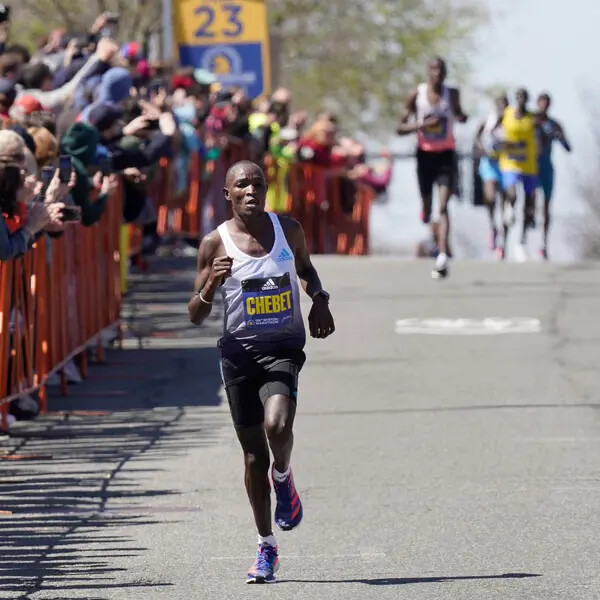
“I was not expecting to win,” said Jepchirchir, the reigning Olympic champion. “But I’m feeling grateful, and now I can say that I believe in myself more.”
For the first time since 2019, the Boston Marathon returned to its traditional slot on the calendar. Until the coronavirus pandemic, the marathon had been staged every April since 1897. But in 2020, the race was canceled for the first time in its history. And last year, the race was pushed to October, when it competed for elite entrants with a cluster of other marathons.
Order was restored this year, as a full field of about 30,000 participants — runners, wheelchair racers, para athletes, hand cyclists — formed a giant wave from Hopkinton, Mass., to Boston on a cool, sun-splashed day.
No one shined brighter than Jepchirchir, 28, who finished in 2 hours 21 minutes 1 second, just four seconds ahead of Yeshaneh. Mary Ngugi of Kenya placed third after running a smart race: She knew enough to pace herself when Jepchirchir and Yeshaneh pounded the gas, blowing away the field.
“I’m glad I didn’t follow them and just die,” Ngugi said.
Establishing herself as the most formidable female marathoner on the planet, Jepchirchir has now won her last five marathons and three in the last eight months: After surviving extraordinarily hot conditions to win at the Tokyo Games in August, Jepchirchir won the New York City Marathon in November. Now, after another triumph, she is already looking ahead.
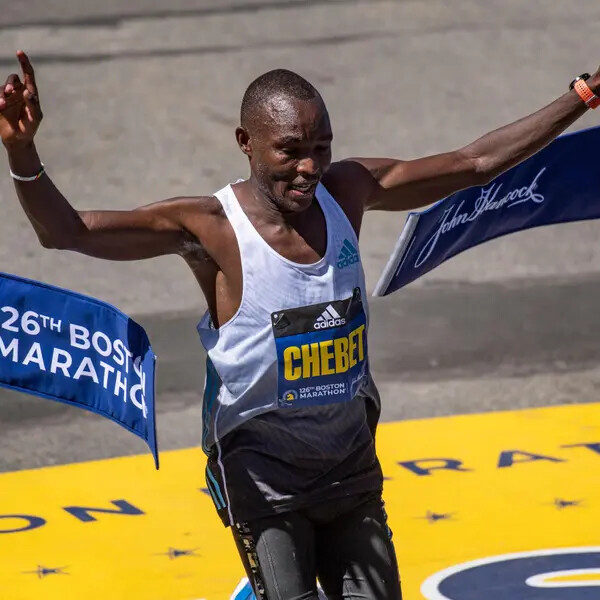
“I still have more to do,” she said.
Kenyans swept the men’s podium. Evans Chebet, 33, won his first world marathon major when he broke clear of a large pack, finishing in 2:06:51. Lawrence Cherono was second, and Benson Kipruto, last year’s winner, was third.
The pack began to dissolve behind Chebet after he covered the 22nd mile in 4:27, a preposterous tempo. Crushing his opposition only seemed to spur him forward.
“My counterparts were nowhere close to me,” he said through a translator, “and that gave me the motivation and the determination to hit it off and seize the win.”
On Monday, fortune largely favored the brave — but not everyone. CJ Albertson, a 28-year-old Californian who trains for marathons by doing marathons, pushed the pace from the start.
“My only chance to really win or be up there in the top is to kind of break some people,” he said. “I had the mind-set that I’m invincible, and you kind of have to run like that.”
The problem: “There are limits,” he said.
Albertson faded to a 13th-place finish in 2:10:23, which was still a personal best. Scott Fauble, 30, was the top American man, in seventh. “I think I do well with hills,” he said.
Molly Seidel, a crowd favorite and a former Boston-area resident, struggled in her Boston debut, dropping out at Mile 16. She said in a statement that she had been dealing with a hip injury.
“I had to make the difficult call to stop at a medical tent to avoid really damaging anything,” she said.
Seidel, the bronze medalist in the women’s marathon at the Tokyo Games, was coming off a fourth-place finish at the New York City Marathon with broken ribs.
Nell Rojas was the fastest American woman, finishing 10th in 2:25:57.
Manuela Schӓr of Switzerland won the women’s wheelchair race, cruising to her fourth victory in the event, and Daniel Romanchuk of the United States won the men’s title for a second time in Boston.
Many runners were drawn to this year’s race by the opportunity to accomplish a one-of-a-kind feat: running back-to-back Boston Marathons mere months apart.
“It feels almost a little bit too soon,” said Joyce Lee, who was running her sixth Boston Marathon after serving as guide for a visually impaired runner in the October race.
Many were also grateful for the chance to compete on the 50th anniversary of women’s official inclusion in the marathon. “It’s incredible to think that was a thing back then and women had to work so hard to participate in this event,” said Christine Valdes, 46. “They paved the way for us.”
Sport is seldom immune from global politics, and this year’s marathon was no different. Amid the war in Ukraine, runners from Russia and Belarus were barred from competing by the Boston Athletic Association, which organizes the race. (Citizens of Russia and Belarus who are residents of other countries were still allowed to take part.)
And there were, as always, reminders of the terror that tore through the marathon nine years ago. Henry Richard, 20, crossed the finish line at 2:52 p.m., and the timing could not have been more poignant: It was around that time in 2013 when two bombs exploded and killed his 8-year-old brother, Martin, and two other people, and wounded 264 others.
“I know Martin would have been doing it with me,” Richard said after the race on Monday. “That’s all I could think about.”
Richard finished in 4:02:20. “I did it for both of us, and my sister and the rest of our family,” he said. “I couldn’t be more happy now. I’m going to do it again.”
In her own subtle way, Jepchirchir offered a counterpoint to some of the world’s divisions. In the race’s late stages, she and Yeshaneh appeared to work together to extend their lead. At one point, Jepchirchir offered Yeshaneh some of her water.
It all seemed straight from the Jepchirchir playbook. Consider her performance in New York last year, when she encouraged Viola Cheptoo, a fellow Kenyan, to stick with her as they entered Central Park side by side. Jepchirchir eventually pulled away, but Cheptoo lauded her sportsmanship.
On Monday, it was more of the same, all those years after eight women broke the gender barrier by racing against more than a thousand men.
“I love my competitors,” Jepchirchir said, “because I can’t do it by myself.”
(04/18/2022) ⚡AMPby New York Times
Boston Marathon
Among the nation’s oldest athletic clubs, the B.A.A. was established in 1887, and, in 1896, more than half of the U.S. Olympic Team at the first modern games was composed of B.A.A. club members. The Olympic Games provided the inspiration for the first Boston Marathon, which culminated the B.A.A. Games on April 19, 1897. John J. McDermott emerged from a...
more...There are two basic ways to measure a run: time and distance, Many runners prefer one over the other, but both metrics are useful depending on the scenario
Time and distance. Many runners have a preference for one over the other, but is there one metric that’s better? The truth is, both have their place, and depending on the scenario, one may work better than the other.
When to run by time
While we typically race in terms of distance (5Ks, 10Ks, etc.), many runners prefer to do a lot of their training runs by time. Running by time isn’t always your best option, but it works well in the following scenarios:
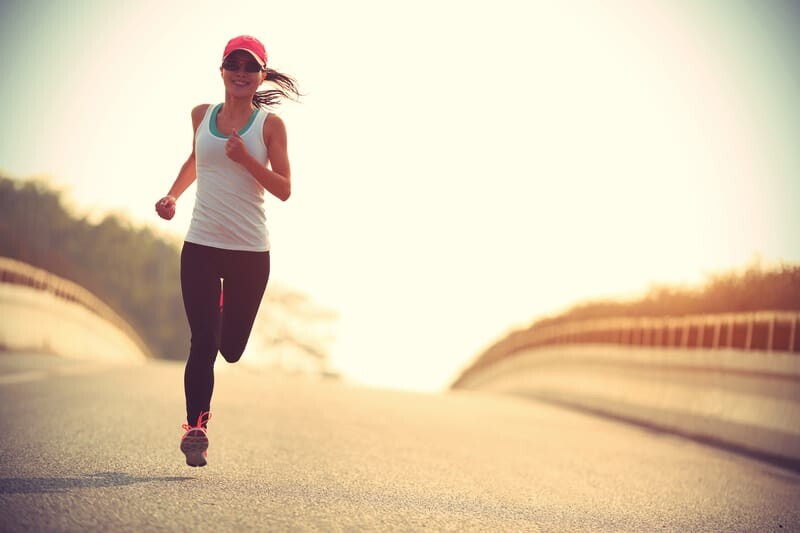
When you’re crunched for time. If you only have one hour to fit your run in between other commitments, go ahead and run by time (just make sure you don’t stop your watch at stoplights). This way, regardless of how far you run, you know you won’t go overtime and be late for whatever else you need to do.
To increase enjoyment. Running by time is a great opportunity to turn off your GPS and stop worrying about things like pace or distance. If you find you’re constantly looking at your pace and distance and getting stressed out if you’re not as quick as usual, removing those metrics and simply running by time can help you enjoy your runs more.
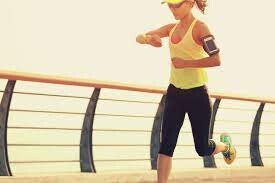
For recovery days. To continue off the last point, running by time is a great option for recovery days because you won’t see your pace and be tempted to speed up when you really should be slowing down. If you’re an easy day pace-pusher, this is an effective way to prevent yourself from doing that.
Hone a sense of effort. When you aren’t distracted by things like pace and distance, you can really focus on how your body is feeling at different speeds. Being able to gauge effort by feel is a great way to control your pace, but it takes a lot of practice.
When to run by distance
There are a few instances when running by distance is the better option, and most of them involve trying to run faster:
When you’re trying to hit a mileage goal. This may sound obvious, but if you’re trying to reach a weekly mileage target, you’re better off measuring your runs by distance to make sure you reach your goal.
To learn pacing. The easiest way to learn how to pace yourself for different distances is to measure how far you’re running with a GPS that tells you how fast you’re going. Once you’ve learned how to pace yourself for various distances, like one kilometer, five kilometers, etc., you can start to pay attention to how those paces feel, which will allow you to turn off the GPS and run by time, as mentioned above.
To run faster. People tend to run faster over a set distance, compared to running by time, because when you run by distance the finish line is fixed. If you run faster, you get to stop sooner. When you run by time, on the other hand, running faster doesn’t get you to the finish any faster, so it’s less motivating. So when you’re trying to push yourself to run a little harder (like you would in workouts), distance may be your better option.
(04/18/2022) ⚡AMPby Brittany Hambleton
Henry Richard, Brother of Bombing Victim Martin Richard, Runs Boston Marathon
Henry Richard, the 20-year-old brother of Boston Marathon bombing victim Martin Richard, was among the 28,000-plus participants in Monday's 126th Boston Marathon, according to The Boston Globe.
Henry Richard is the older brother of Martin Richard, the 8-year-old boy killed in the 2013 Boston Marathon bombing. Martin would have turned 18 this June.

Henry is a student at Pace University in New York, the Globe said. He has participated in other Boston Athletic Association events in the past, but this is his first time running the 26.2-mile Boston Marathon.

He was reportedly part of a team of runners representing the Martin Richard Foundation. According to its website, the foundation "works to advance the values of inclusion, kindness, justice and peace."
(04/18/2022) ⚡AMPby Marc Fortier
Boston Marathon
Among the nation’s oldest athletic clubs, the B.A.A. was established in 1887, and, in 1896, more than half of the U.S. Olympic Team at the first modern games was composed of B.A.A. club members. The Olympic Games provided the inspiration for the first Boston Marathon, which culminated the B.A.A. Games on April 19, 1897. John J. McDermott emerged from a...
more...Kenyans Evans Chebet, Peres Jepchirchir win men's and women's titles
Olympic champion Peres Jepchirchir outlasted Ethiopia's Ababel Yeshaneh in the final stretch down Boylston Street to capture the women's crown at the Boston Marathon on Monday.
The Kenyan star crossed the finish line in two hours 21 minutes and one second, four seconds ahead of Yeshaneh, who dueled with Jepchirchir in the final few hundred meters. Jepchirchir's win gave Kenya both the men's and women's titles as Evans Chebet topped the men's race in 2:06:51 — his first major marathon win.
He led a 1-2-3 finish for Kenya with countrymen Lawrence Cherono second in 2:07:21 and Benson Kipruto, the defending champion, third in 2:07:27.
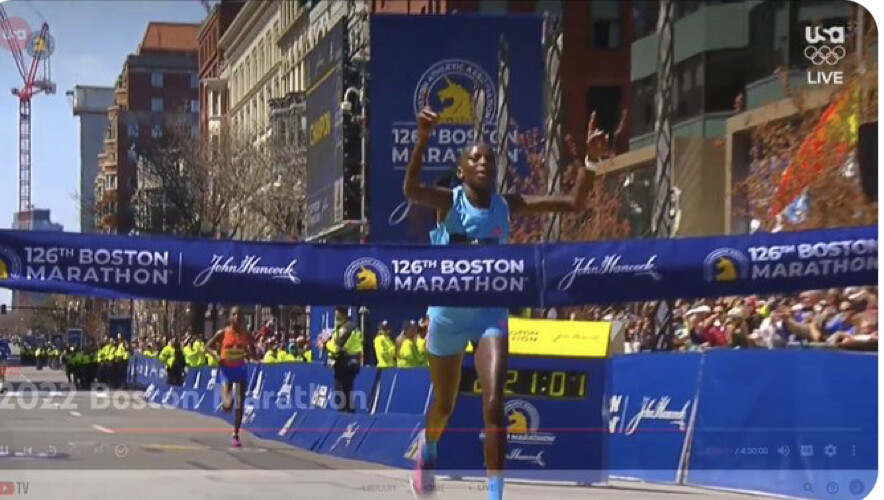
The fastest Americans have crossed the finish line: Scott Fauble finished seventh among the men in 2 hours 8 minutes 52 seconds and Nell Rojas came in 10th among the women at 2:25:57.
American Daniel Romanchuk, who captured Boston in 2019, won the men's wheelchair event in 1:26:58. Defending champion Marcel Hug of Switzerland pulled out just before the start of the race due to medical reasons.
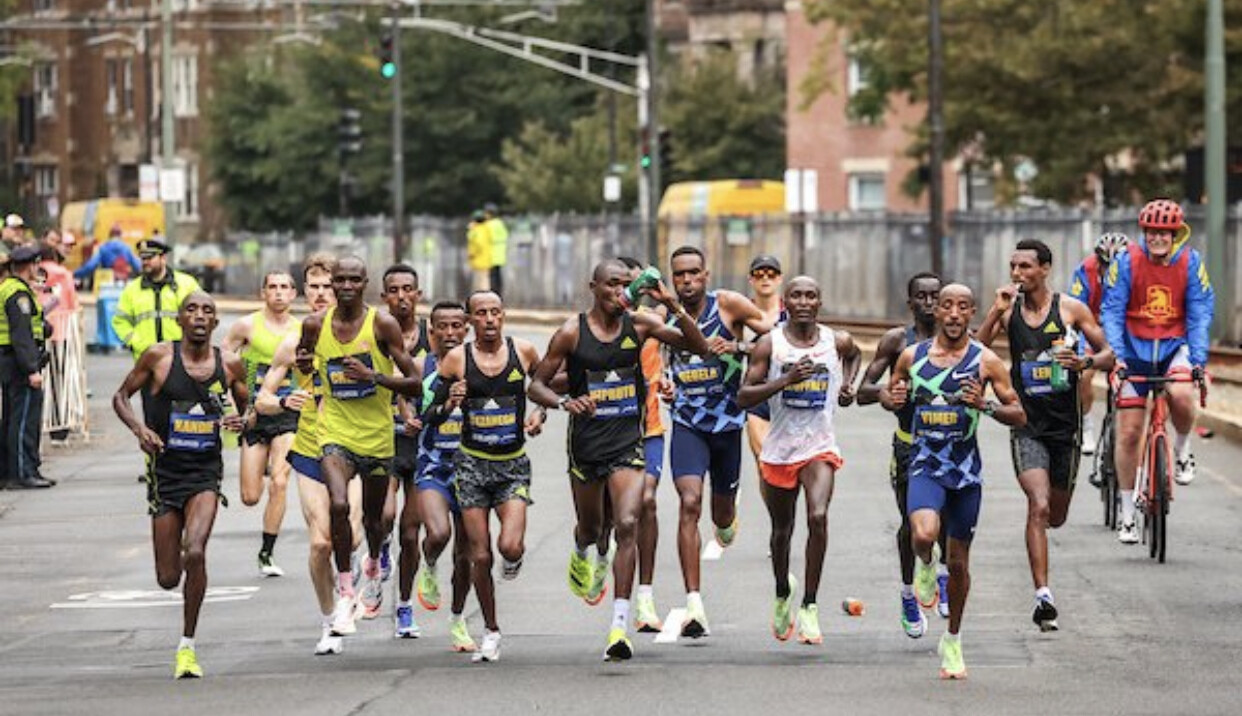
On the women's wheelchair side, Manuela Schar of Switzerland captured her fourth Boston title in 1:41:08.
The marathon returned to its traditional Patriot's Day timeslot after a three-year absence due to the COVID-19 pandemic. The in-person event was canceled in 2020 for the first time in history. It returned in 2021 but was held in October with a smaller field of around 20,000 runners. More than 30,000 competitors were registered for Monday's event.
(04/18/2022) ⚡AMPBoston Marathon
Among the nation’s oldest athletic clubs, the B.A.A. was established in 1887, and, in 1896, more than half of the U.S. Olympic Team at the first modern games was composed of B.A.A. club members. The Olympic Games provided the inspiration for the first Boston Marathon, which culminated the B.A.A. Games on April 19, 1897. John J. McDermott emerged from a...
more...Are these mental blocks slowing you down? These three common thinking patterns can derail your training and negatively impact your performance on race day
There is no doubt that your mind impacts your performance, and many well-trained runners allow their thoughts and emotions to derail what should have been a great workout or race. The following three mental barriers are common pitfalls for many runners — are they impacting your performance?
1.- Negative self-talk
How do you talk to yourself during a run, especially as you get tired or when the workout isn’t going as well as you’d hoped? Negative self-talk like “I’m a terrible runner,” or “why do I even bother trying, I’ll never actually reach my goal,” can easily get into your head when you hit a rough patch in your training, but it serves no purpose other than to erode your self-confidence.
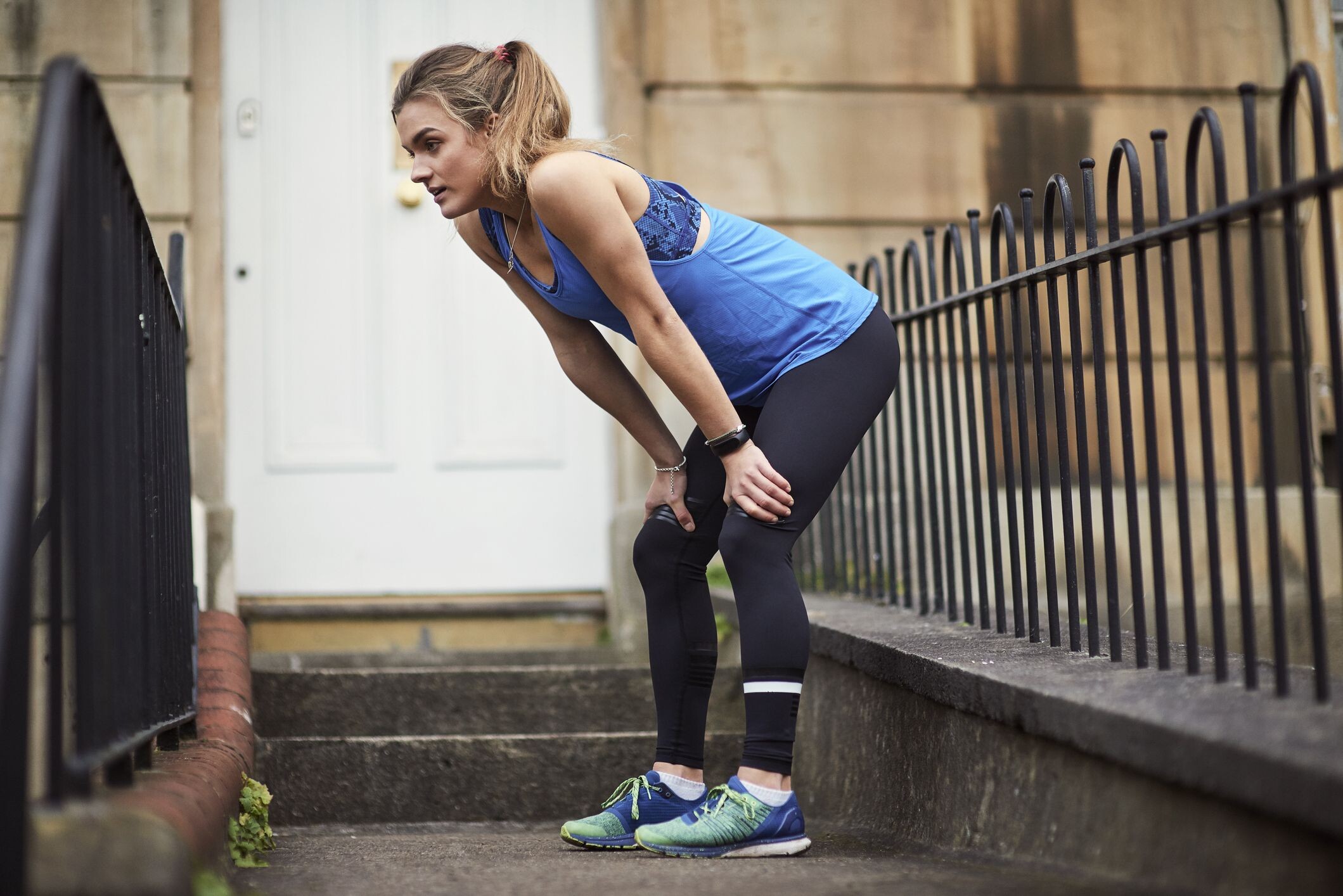
You will never achieve your running goals if you don’t believe in yourself, so it’s important for all runners to learn how to counteract negative self-talk with positive affirmations and mantras. Whenever you find yourself saying something that’s self-defeating, counteract that voice with something positive like “that’s not me,” or “I can do hard things.”
2.- Catastrophizing
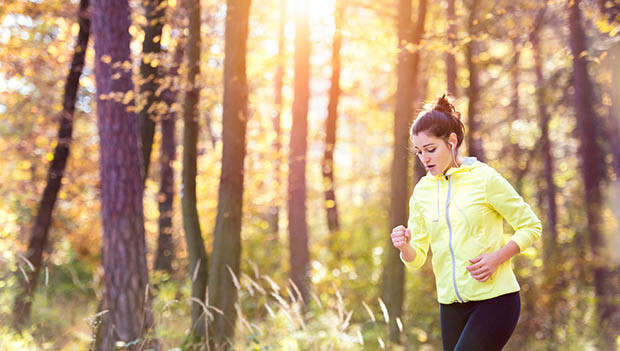
When a run, workout or race doesn’t go well, it’s easy for runners to start spiraling and turn the situation into an all-out catastrophe. One bad workout, and suddenly you’re out of shape and completely unprepared for your upcoming goal race. One bad race and now you’ve wasted weeks or months of training, and should probably pick a different hobby. Another good example is getting injured. Something starts to bother you on your run (your hip, your knee, etc.) and you instantly start to panic, fearing you’ll lose weeks or even months of training.
Whenever you catch yourself mentally spiraling out of control, take a moment to breathe and calm down. One bad workout doesn’t erase all the good ones you had before it. One bad race doesn’t mean you’re a terrible runner. If you do get injured, you may have to take a few days or weeks off running, but you can probably still do other things in the meantime, like cross-training, until you’re able to get back out there.
In other words, don’t make something into a bigger problem than it really is. Setbacks happen, but they’re usually not permanent, and with time and patience, you’ll get through them.
3.- Perfectionism
Runners love to make a race plan and follow it down to the letter, but unfortunately, life rarely works out that way. Training runs have to get skipped for important family matters, a head cold or flu takes you out for a couple of days or a snowstorm blows through leaves you housebound for a day.
Perfectionism makes you far more likely to fall prey to both negative self-talk and catastrophizing. It causes you to berate yourself when things go wrong, and to panic when you have to miss a day or two of training. As a runner, it’s important to accept that things will rarely if ever, go perfectly. You need to be mentally flexible to deal with the ups and downs involved in a training cycle so that you’re not completely thrown off by everything that doesn’t go exactly right.
Train your mind as well as your body
This highlights how important it is for runners to train their minds alongside their bodies. Even the fittest runners can sabotage themselves by allowing negative self-talk, catastrophizing or perfectionism to affect their performance in a run or race. If you’re struggling with your mental game, consider talking to a coach or sports psychologist, who can help you come up with your own tools for managing your mind so you can enjoy the sport and run to your full potential.
(04/18/2022) ⚡AMPby Brittany Hambleton
Canada’s Charles Philibert-Thiboutot wins B.A.A. 5K while ethiopia’s Senbere Teferi breaks the course record
The Quebec native ran 13:35 and broke the Canadian 5K road record in the process.
Canada’s Charles Philibert-Thiboutot kicked off the Boston Marathon weekend in style this Saturday, winning the Boston Athletic Association (B.A.A.) 5K in 13:35. His time took one second off the previous Canadian 5K road record, set by Paul Williams in Carlsbad, California in June 1986.
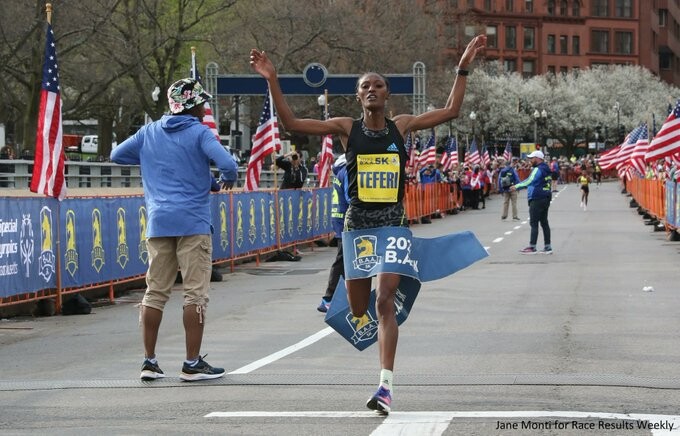
Philibert-Thiboutot ran a strong race from start to finish, but the win wasn’t handed to him. New Zealand runner Geordie Beamish and Zouhair Talbi of Morroco unleashed a couple of hard kicks in the final metres of the race in an attempt to overtake C.P.T., but fell short to finish second and third, both in 13:36.
“I’m really happy,” he said in an interview with Radio-Canada. “Honestly, it’s not the strongest Canadian record that existed, but it’s still my first Canadian record.”

Ethiopia’s Senbere Teferi breaks course record
The Women’s-only 5K world record-holder, Teferi, broke the tape in the women’s race in 14:49, taking one second off Molly Huddle’s previous course record from 2015. Unlike in the men’s race, Teferi had a commanding lead over the rest of the field, with Weini Kelati, who holds the American women’s-only 10K record, finishing second in 15:04. Kenya’s Sharon Lokedi rounded out the podium in third in 15:16.
(04/18/2022) ⚡AMP
by Running Magazine
B.A.A. 5K
The B.A.A. 5K began in 2009, and became an instant hit among runners from far and wide. Viewed by many as the “calm before the storm,” the Sunday of Marathon weekend traditionally was for shopping, loading up on carbohydrates at the pasta dinner, and most importantly- resting. But now, runners of shorter distances, and even a few marathoners looking for...
more...Who is Ready? Who is Not? What the Pros Said at Boston Marathon Media Day
2022 Boston Marathon and it’s time to get excited. The weather is nice, the trees are starting to bloom (well, some of them), and two dozen of the world’s best distance runners have descended upon the Hub for the most loaded Boston Marathon in race history.
LetsRun.com will have boots on the ground all weekend, and we had a chance to talk to a number of top athletes, agents, and coaches at this morning’s media availability ahead of Monday’s race. The B.A.A. announced two race updates, with 2017 champ Geoffrey Kirui scratching from the marathon and US 10,000m champ Emily Sisson scratching from Saturday’s B.A.A. 5K. Here are the other things we learned on Friday from speaking to Molly Seidel, Peres Jepchirchir, Geoffrey Kamworor, CJ Albertson, and many more.
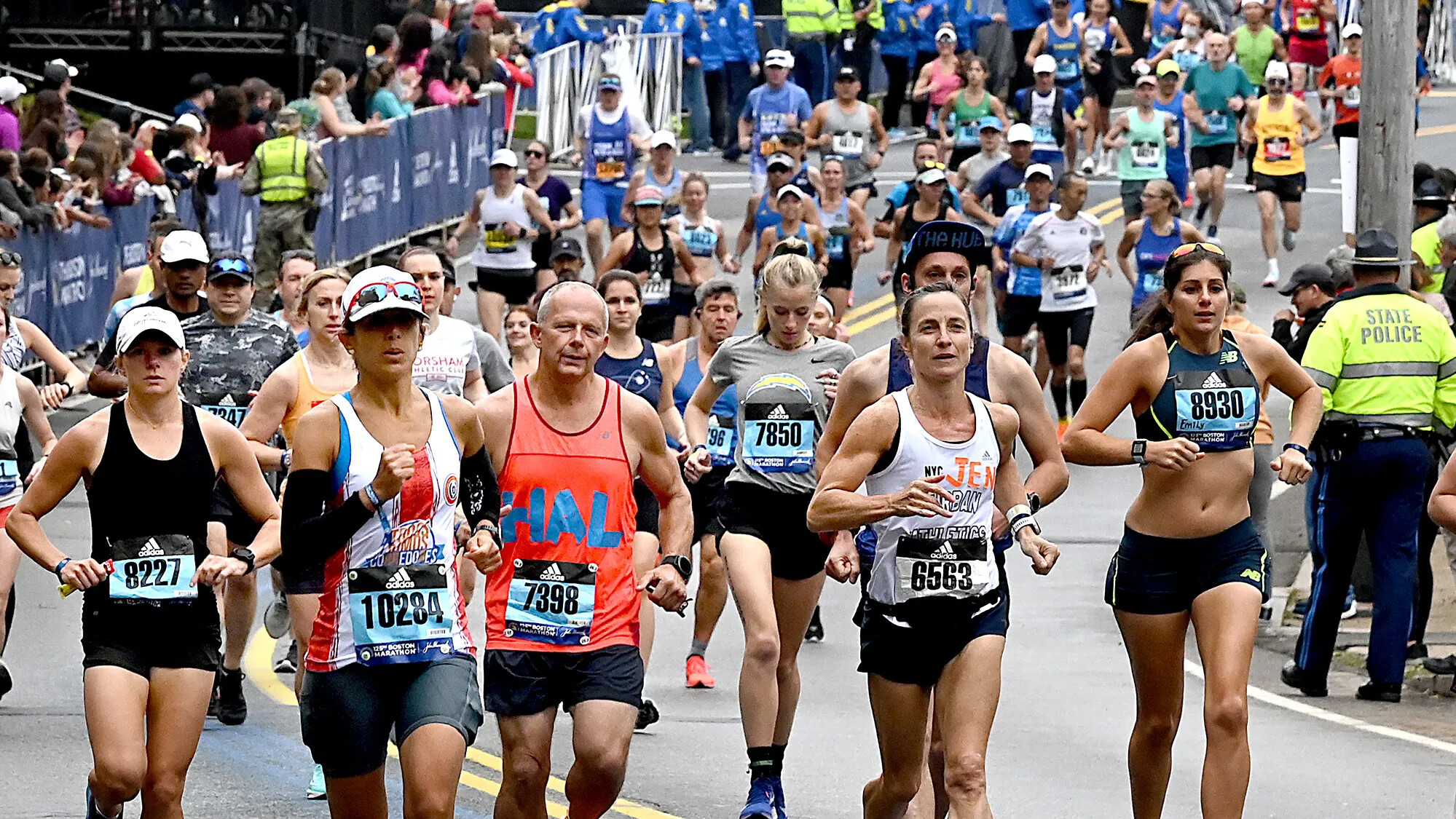
Molly Seidel says she has had some privacy concerns with her Strava account but is feeling excited and fit for Boston
Seidel will run two marathons in the first seven months of 2022, with Boston on Monday and the World Championship marathon in Eugene in July, and she and coach Jon Green have built their strategy for the year around those two races.
“We were looking [at] Boston as coming into this with a lot of strength and using this to try and carry through and hone the speed for Worlds,” Seidel said. “Right now I feel like we’ve set it up really well like that, and I’m hoping that the speed’s gonna be there. Fingers crossed.”
Seidel will likely need that speed over the final, mostly downhill 10k in Boston, as that is where the race is often broken open. And with two top half marathoners leading the field – World Half champ Peres Jepchirchir and former HM world record holder Joyciline Jepkosgei – the pace could get very hot at the end of the race.
Challenging for the overall win will be tough, but Seidel said she is excited to race the best in the world on Boston’s hallowed course.
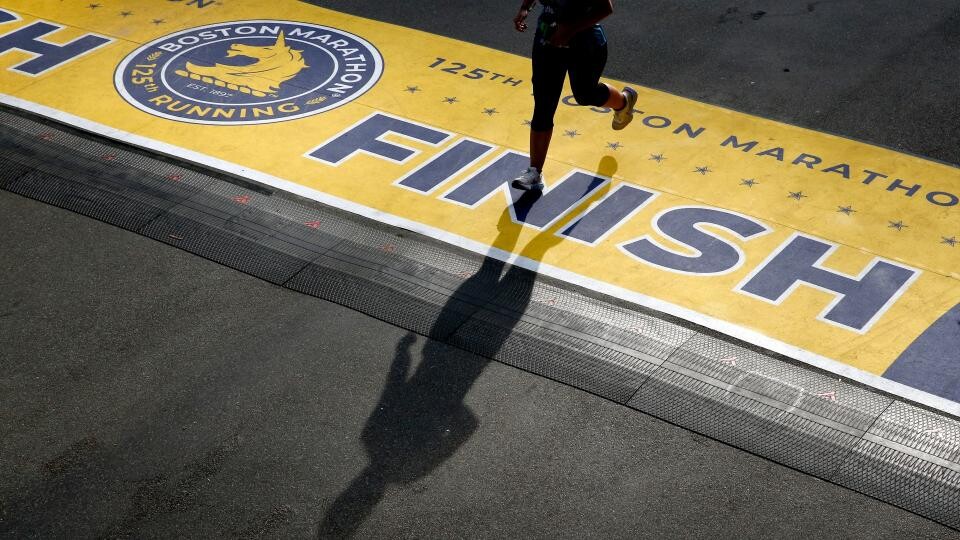
“Obviously intimidated, they’re incredible, and I’ve gotten my ass kicked by Peres the two times I’ve raced her,” Seidel said. “But getting to be in a race with a huge amount of competition like that, women with incredible credentials, that fires me up like nothing else.”
Seidel’s buildup wasn’t perfect, as she dealt with a hip impingement about a month ago and had to miss the NYC Half as a result. But she’s logged multiple 130+ mile weeks since then, which you can tell by visiting her Strava page. And while it’s great for most of the running community to be able to see what an Olympic medalist does for training – transparency that Seidel says she values – recently, she has met with some of the Strava staff out of concerns that some people have been using the data to figure out where she lives.
“It can be a lot sometimes, realizing you’ve got 60,000 people following your every move and a little bit scary sometimes when people start tracking that,”’ Seidel said. “So it’s something that I’m still figuring out, honestly. And I’ve wavered back and forth on getting off the platform, mainly because of that.”
Geoffrey Kamworor (photo) is all-in on the marathon and ready to go in his Boston debut
For the first decade of his professional career, Kamworor developed a reputation as a man for all seasons. He ran 12:58 and 26:52 on the track and earned a silver in the 10,000 at Worlds, won World XC twice, and won the World Half three times. He also mixed in two NYC Marathon titles during that span, but the marathon was never his full focus.
That, says his agent Valentijn Trouw, has now changed. Boston will be Kamworor’s first spring marathon since 2014, and he has already committed to the World Championship marathon in July. At this point, he is all-in on the marathon.
And that could be a scary prospect for the rest of the field. Kamworor’s 2:05:23 pb may only be 10th-best in the field, but he ran that in Valencia in December in a race Kamworor had barely been able to train for due to an ankle injury. For this buildup, Trouw said, Kamworor did not miss a step.
While the deep men’s field is pretty wide-open on paper, one prominent agent we spoke to (not Trouw) said he views Kamworor as the favorite due to his two NYC wins and his killer speed in the half marathon – two assets that should help significantly in Boston.
Defending champ Benson Kipruto ready to take on some big names
Kipruto was a surprise winner last year, but will not be able to sneak under anyone’s radar this year. He gave the platitudes about being “happy to be back” this year. But he said his training has gone well and the goal is the same as last year — to win, despite the field being stronger this year. “There are some strong guys, but I don’t care…my preparation was good.”
CJ Albertson isn’t a 2:06 guy yet, but he’s trying to think of himself that way
Albertson has run some insane efforts in practice, including a 2:09 marathon on a treadmill in 2020 and a 2:10:28 “split” three weeks ago at the Modesto Marathon (his result is listed officially as 2:11:56, but the lead bike led Albertson the wrong way, causing him to run extra distance). Yet Albertson’s official marathon personal best is still 2:11:18 from the Marathon Project in 2020. Is he leaving his best efforts in practice? Albertson doesn’t view it that way.
“At some point, I’m gonna run fast,” he said. “Hopefully it’s on Monday.”
Albertson also had an interesting perspective when we asked about all those hard efforts in practice. They might seem crazy for a guy whose official pb is 2:11, but Albertson said his goal is to run 2:06 one day and that he tries to think of his training in that context.
“Whatever you want to be, you have to mentally be there first before you’re actually there,” Albertson said. “I want to work out and train like I am an American record holder. Because one day I’m going to be or I’ll have a shot to be in that position and those two weeks before aren’t gonna matter, it’s gonna be what I did the five years leading up to it…The workouts that I’m doing, if you look at me like an American record holder and it’s like, he’s going out and running 5:00 pace on the weekends, it’s no big deal.”
He had one of those workouts on Sunday, running 4:50 pace (2:06:43 marathon pace) for 15 miles and feeling great doing it.
As for Monday, Albertson, who led for the first 20 miles last year and ultimately finished 10th, said he will likely go out hard again but expects he will have more company this time given the strength of the field and great conditions in the forecast.
Colin Bennie is running Monday’s race for the Play Ball Foundation while his contract situation with Reebok is sorted out
Bennie was the top American at last year’s Boston Marathon, finishing 7th in 2:11:26. It is a bit of a surprise, then, that he will not be racing on Monday in the colors of the Reebok Boston Track Club. The reason why is a bit complicated. Reebok has been undergoing an ownership change, and in March was officially sold by adidas to Authentic Brands Group. Bennie’s Reebok contract was up at the end of 2021, and as a result he’s in limbo as Reebok did not want to offer a new contract in the midst of an ownership change. The new owners are still figuring out what to do with the Reebok Boston Track Club, but Bennie is hopeful that the group’s strong recent performances, such as Josette Norris’ 5th-place finish in the 1500 at World Indoors, are proof that the team is still worth supporting (he is still training with the team and coach Chris Fox in Virginia).
“There’s been good support throughout,” Bennie said. “These things just do take time.”
With no sponsor for the moment, Bennie, a Massachusetts native, will be running Monday’s race for the Play Ball Foundation, a local charity dedicated to providing sports opportunities to middle schoolers in underserved communities. Play Ball’s logo is the letters PB in large, blue font – good letters for a marathoner.
“It’s a very good thing to have on you on race day,” Bennie said.
Jake Riley and Jared Ward are hoping things turn a corner for them in Boston
Riley and Ward are both US Olympians, but both have hit some rough patches recently. They’re hoping Boston is a first step back in the right direction.
Riley, 34, had been struggling in practice and had an awful tuneup race for Boston, running 46:27 at the US 15K champs on March 5 to finish in 35th place. After searching for answers, Riley finally determined, with the help of his nutritionist, that he was underfueling between runs, which meant that he struggled to finish workouts and races strong.
Riley pointed out that he was able to go out with the pack at the 15K but just could not get his body to go faster over the final 5k when the racing picked up.
But Riley said that he has made some changes to his diet and that the last four weeks of training have gone very well.
“Since I’ve tried to fix that, things have finally started to come around,” Riley said. “My energy levels are better, I’ve been able to close out workouts better.
”Four weeks may not be enough to turn things around for a big race in Boston, though. Riley admitted that there is a wide range of outcomes for him on Monday.
As for the 33-year-old Ward, he was wondering, after a rough 2020 season, whether he might be nearing the end of his marathon career. Now a father of five, Ward was feeling more tired in practice and daily live and simply chalked it up to getting older
“I just kind of thought, this is just, I guess, how you feel,” Ward said.
But in marathon years, 33 really isn’t that old. So Ward endeavored to find out what was wrong. Ultimately, he was diagnosed with hypothyroidism and prescribed Levothyroxine, a thyroid-replacement drug, by his doctor. But Ward is well aware of the stigma around thyroid medication in the running world, and for two weeks, the medication sat untouched in his cupboard. Ultimately, however, he decided that he would take the supplement – which is legal under the WADA Code and does not require a TUE – but that he would be open and honest about exactly what he was taking and why ( this Instagram post has more details). So far, Ward says, the reaction has been positive from fellow athletes, who are grateful that Ward has addressed the issue in an honest manner.
“It’s around us a lot more than you might think, and for people that need it, it’s important,” Ward says.
Ward says that since taking the medication, his energy levels feel back to normal, which have made it easier for him to train – and to play with his kids. But he also said that his fatigue issues before that meant that he was not able to push as hard in practice as he would have liked, meaning he probably doesn’t have the base quite yet to get back to his best marathoning.
“I think it might take a year or two to climb back to where I’d like to be,” Ward says.
Jared Ward starting new pro group in Utah: the Run Elite Program
Utah has produced a lot of really good runners, but up until now it was not known for its pro training groups, despite being at altitude and a good place to train. Jared Ward and Isaac Wood (of the Wood Report) wanted to change that and set out to get funding for a pro running group in Utah. Mike McKell, a state senator in Utah and a big runner, said they should try to get state funding, which they did to the tune of multiple hundreds of thousands of dollars a year. Wood talks about the foundation of the group below, which is designed to be shoe brand agnostic.
Peres Jepchirchir and Joyciline Jepkosgei ready to battle
Jepchirchir and Jepkosgei will battle for the title of World’s #1 marathoner on Monday. They sat next to each other in the media room and were both confident they would handle the Boston course on their first try.
Both said their preparations have gone well. While neither has run Boston, they both are New York City Marathon champions and have shown they can win non-rabbited hilly marathons.
Viola Cheptoo Lagat has found her event
Viola is the sister of 1500m star Bernard Lagat. So she naturally thought she was a 1500m runner and made the Olympic team for Kenya. But she never ran faster than 4:04. Turns out her event really was the marathon. Coming off her 2nd place finish at the New York City Marathon where she battled Jepchirchir nearly to the line, Lagat’s goal is to win on Monday, but with this tough field knows a top 3 finish would be a good accomplishment.
Ageless Edna Kiplagat discusses longevity: “This year the field is so strong, but I have no fear”
Kiplagat was born in the 1970s and she’s still a force in the pro running ranks, getting 2nd at 2021 Boston in the fall. Winning may be out of the question but it’s a strong bet Kiplagat will have a good race on Monday. She said the key to her longevity has been staying focused and not over racing. As for this year, “This year the field is so strong, but I have no fear.”
Scott Fauble doesn’t mind flying under the radar in 2022
Since Meb Keflezighi’s win in Boston in 2014, no American man has run faster in Boston than Scott Fauble’s 2:09:09 in 2019. That led to a lot of attention and expectations over the next couple of years, but also pressure.
“I sort of was the belle of the ball and I put a lot of pressure on myself,” Fauble said.
The spotlight on Fauble has faded recently, however, as he was only 16th in Boston last year and is currently unsponsored (he will race Monday’s race in a Lululemon singlet he bought himself). But it would be a mistake to sleep on him: Fauble, now working with coach Joe Bosshard, ran 61:11 in the Houston Half and knows what it takes to succeed on this course.
(04/17/2022) ⚡AMPBoston Marathon
Among the nation’s oldest athletic clubs, the B.A.A. was established in 1887, and, in 1896, more than half of the U.S. Olympic Team at the first modern games was composed of B.A.A. club members. The Olympic Games provided the inspiration for the first Boston Marathon, which culminated the B.A.A. Games on April 19, 1897. John J. McDermott emerged from a...
more...Oz the Mentalist sets fastest known time in New York's Central Park
On April 8, Oz Pearlman, also known as the famous magician Oz the Mentalist, took to Central Park to break the record for running around its perimeter and to raise money to support the children of Ukraine. He broke the previous record held by Robbie Balenger of 16 laps, running a total of 19 laps, or 116 miles (187 km), in the 19 hours the park is open.
Each loop is around 10K, with the official challenge starting at 6:05 a.m. and ending at 12:55 a.m. the following morning, as the park is closed between 1 a.m. and 6 a.m. Pearlman wore the blue and yellow colours of Ukraine during his challenge to raise money to help children displaced in the war. Pearlman raised over $110,000, which well surpassed his fundraising goal of $100,000.
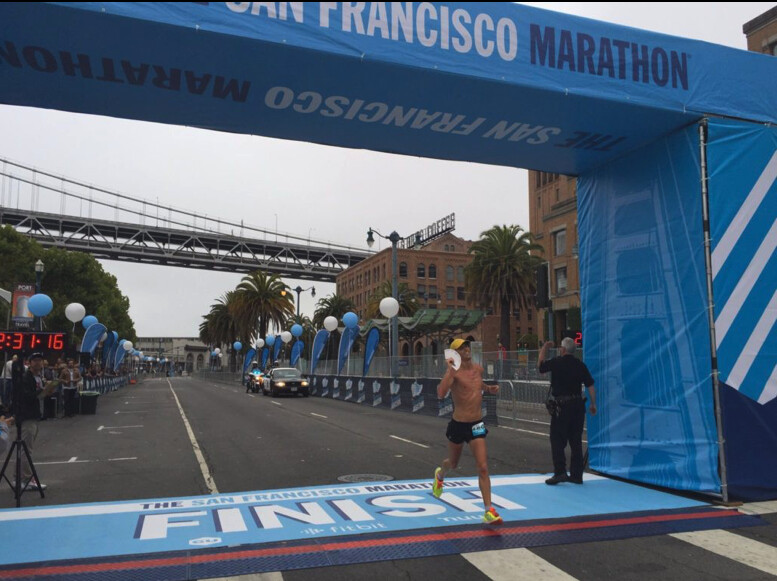
Pearlman kicked off his fundraising campaign with his own $1,000 donation, and then matched the next $9,000 of donations.
If you recognize Pearlman’s name, you may remember him from America’s Got Talent, in which he finished third in 2015. He is an accomplished magician and mentalist who has been featured on The Today Show, Ellen and Live with Kelly and Ryan.
Pearlman is no stranger to the marathon scene. He has won the New Jersey Marathon four times and the Hamptons Marathon three times, holding a personal best of 2:23 from the Philadelphia Marathon in 2014.
Like the famous scene in the movie Forrest Gump, many NYC runners happened to meet Pearlman on his journey and joined him for a jog as he averaged 5:47 per kilometre over 18 hours.
(04/17/2022) ⚡AMPby Running Magazine
Melly and Geremew run course records for Seoul Marathon success
Joan Chelimo Melly and Mosinet Geremew both broke the course records to triumph at the Seoul Marathon, a World Athletics Elite Platinum Label road race, on Sunday (17).
Ethiopia’s world silver medallist Geremew saw off the challenge of his compatriot Herpasa Negasa and Brazil’s Daniel do Nascimento to win the men’s race in 2:04:43, while Romania’s Melly made a breakthrough to win the women’s contest in 2:18:04 ahead of Ethiopia’s Sutume Asefa Kebede and Bahrain’s Eunice Chumba.
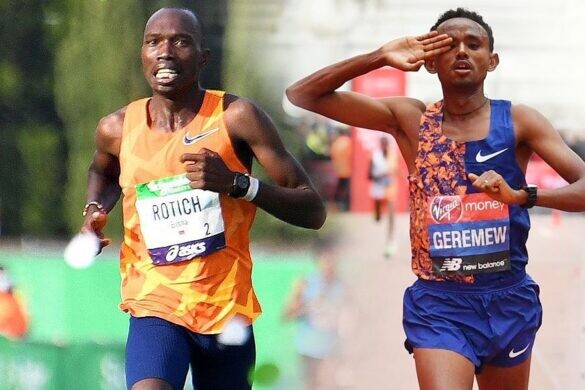
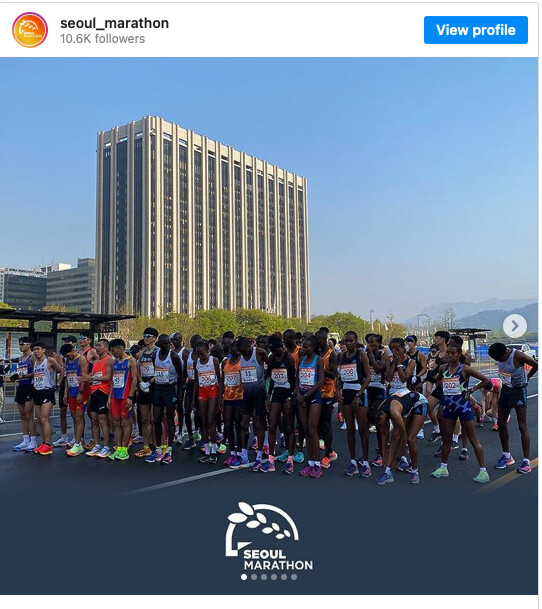
Both eventual winners managed to pull away from their rivals over the final couple of kilometres and keep them at bay, but it remained a fight to the finish. Negasa was just six seconds behind Geremew, with Do Nascimento a further two seconds back in a South American record, and Kebede was eight seconds behind Melly, with those five athletes all finishing inside the previous respective course records of 2:05:13 and 2:19:51.
Geremew, Negasa and Do Nascimento had been part of a 19-strong group that passed 5km in 14:42 and 10km in 29:14. By 20km that pack had 14 members, with 58:43 on the clock. Over the next 10km, three runners were dropped, with Geremew, Negasa and Do Nascimento among those to the fore along with Kenya’s Elisha Kipchirchir Rotich, Philemon Rono and Mark Korir (1:28:41). Rotich, last year’s Paris Marathon winner and the 2019 runner-up in Seoul, dropped out a short while later, while Geremew, Negasa and Do Nascimento began to break away, with the Brazilian pushing the pace.
Geremew and Negasa then made a move and looked to be leaving Do Nascimento behind, with a six-second gap, 1:43:31 to 1:43:37, at 35km and Korir and Rono another eight seconds back.
But Do Nascimento wasn’t giving up and rejoined the leaders to trail by just a few strides as 40km was passed in 1:58:27.
It was London and Chicago runner-up Geremew who was strongest in the closing stages and he held off his challengers to return to winning ways after being unable to finish the Tokyo Marathon earlier this year.
Negasa, who was second in Dubai in 2019, claimed another runner-up spot in 2:04:49, while Do Nascimento improved Ronaldo da Costa’s South American record of 2:06:05 – a world record when it was run in 1998 – by more than a minute, finishing third in 2:04:51.
Korir was a couple of minutes back in fourth in 2:06:54, one second ahead of Moses Kibet.In the women’s race, Melly – who has a half marathon best of 1:05:04 and was contesting her fourth marathon – was among the nine runners who passed 5km in 16:40 and 10km in 32:58. The lead group was down to six at 15km (49:30) and Melly had broken away with 2019 Beijing Marathon winner Kebede, Chumba and Kenya’s Celestine Chepchirchir by 20km (1:05:44).
That quartet continued to race through 25km in 1:21:58 and 30km in 1:38:29, and while Olympic seventh-place finisher Chumba was 10 seconds back at 35km – 1:55:03 to 1:55:13 – she passed Chepchirchir in the closing stages to finish third, eight seconds ahead.
Melly and Kebede had broken away by 40km, passed in 1:12:16, with Melly eventually striding away to win by eight seconds, 2:18:04 to 2:18:12, and record an almost three-minute PB.
Chumba was third in 2:20:02 and Chepchirchir fourth in 2:20:10, one place off her position in Seoul in 2019.
Seven years after her victory in Seoul, Ethiopia's Guteni Shone finished fifth in 2:28:05.
(04/17/2022) ⚡AMPSeoul International Marathon
The only marathon hosted in the heart of the Korean capital. Seoul marathon is the oldest marathon race hosted in Asia andis one of the fastestmarathon in the world. First held in 1931, Seoul marathon is the oldest marathon eventcontinuously held in Asia, and the second oldest in the world followingthe Boston Marathon. It embodies modern history of Korea, also...
more...U.S. ultrarunner outlasts a Tesla Model 3
American ultrarunner Robbie Balenger who’s known for setting the FKT (fastest known time) in New York City’s Central Park in 2021, this week ran longer than the battery of a Tesla Model 3 in Austin, Texas. The Tesla was able to go 242 miles (390 km) on a single full charge over 72 hours. Balenger covered the distance in 77 hours between April 11 and 14.
Balenger started ahead of pace to outrun the Tesla in the time limit, covering nearly 100 miles in the 24 hours. He ran into some trouble with an injury on his second day, which forced him to slow down. The Model 3 and Balenger both started from the same point, 250 or so miles outside of Austin, Texas. The car drove until it ran out of battery, which end up being 242 miles over 72 hours.
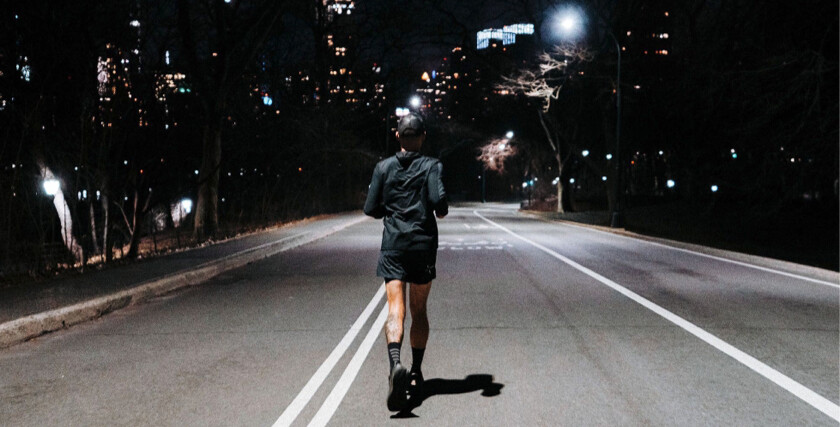
His progress throughout his challenge was posted on his and his sponsor’s (Ten Thousand) social media pages.
In 2021, he set out to break The Central Park Loop FKT, which follows a 10K route around the park, involving running as many laps as possible in one day. Balenger covered 98 miles in just over 18 hours. The challenge with the Central Park FKT is the fact that the park is only open from 6 a.m. to 1 a.m. This means runners only have 19 hours to complete their FKT attempt. Balenger also ran 5,000 kilometres across the U.S. in 2019 on a vegan diet.
It has not been confirmed what Balenger will be getting out of completing this challenge, but I think running 390 kilometres for a free Tesla Model 3 would be well worth it.
(04/17/2022) ⚡AMPby Running Magazine
Kilian Jornet Co-Founds New Brand, NNormal
Mountain running legend Kilian Jornet has announced his newest venture: an apparel and outdoor equipment company called NNormal.
The brand's creation was announced last month, a partnership between Jornet and Spanish footwear company Camper. According to the brand's website, the company name comes from locations of the designing and testing of products in Mallorca, Spain, and Norway, respectively (Nor + Mal). Jornet, who is originally from Spain, now lives in Norway.

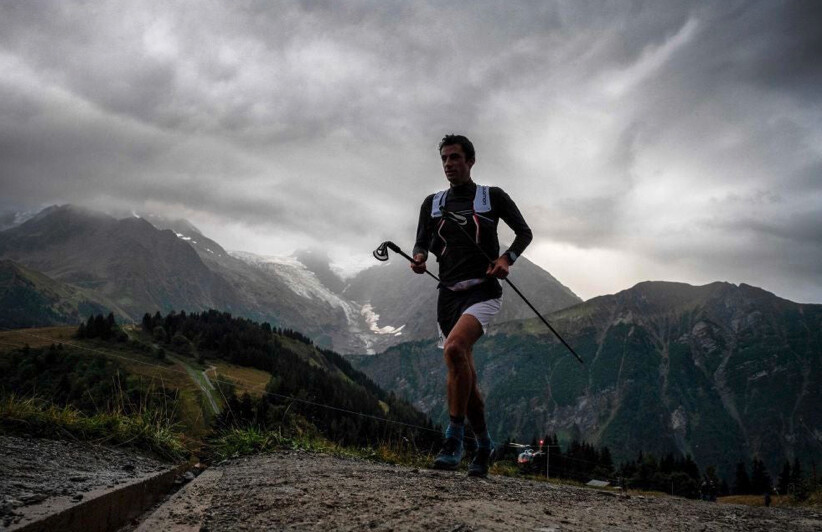
According to the brand's website, the first line of NNormal products - set to include shoes, apparel, and accessories - will launch this fall, both online and in specialty running stores in Europe and North America. Additional members of the NNormal athlete team are also set to be announced in the coming weeks and already include Swedish athlete Emelie Forsberg, Jornet's partner.
While no products have been made available yet, NNormal's website notes that the first line is currently being tested, and that co-founder and first brand ambassador Jornet will wear the gear during his 2022 racing season, ostensibly including his seventh appearance at UTMB this August. Jornet split from longtime sponsor Salomon last year with an announcement that he would be turning toward a new venture, rather than signing with another existing company. Until recently, he had given few other details.
A Focus On Sustainability
NNormal's slogan, "Your path, no trace," alludes to Jornet's activism and dedication to environmental sustainability, and in a video on the website, Jornet outlines the mission and plans for the new company, including that all of its products should be reusable, repairable, or recyclable.
"Whatever we produce, it has a negative impact on the environment," says Jornet in the video. "Transparency is necessary to be honest about what we are doing well and what we should improve. How our company is contributing to climate change, to biodiversity loss, to introducing new chemical elements to nature, to ocean acidification, to land use, and to freshwater consumption, should be studied."
Jornet's partner business, Camper, was founded in Spain in 1975, and is currently headed by Miguel Fluxa, whose family has been crafting shoes for four generations. Camper has laid out ambitious sustainability goals itself, including 100% recycled or circular packaging, 100% of products made with recycled or renewable materials, and 100% ethically trusted and verified supply chain members by 2025, as well as net-zero emissions by 2050.
"So, how do we approach, at NNormal, our environmental responsibility?" said Jornet in the video. "Our DNA is to work on functionality. Our products are made to be used in multiple activities, and to be worn. Durability: to ensure that with this functionality, they can last the maximum. And repairability: to prolong the life of each product. Our end goal is to work toward real, circular products, leaving no trace in our path."
In the video, Jornet goes on to note that the brand's apparel is fully designed and created in Europe with materials from European producers, but that footwear will be manufactured in Asia, at least at first, due to better industrial capacity for producing performance shoes in that area of the world.
"Our goal is to produce more in Europe in the future, and for that we must invest in creating infrastructure and the know-how for it," Jornet says. "We are building long-term relations with our partners and providers to ensure the environmental and social levels of all our supply chain[This] means our internal emissions, but also from our external partners, such as factories, materials, et cetera, and working on reducing it with the goal of having the lowest emissions possible, and compensating the rest of emissions to become carbon neutral."The Goal? Better, not more.
Jornet notes in the video that in the interest of producing less waste and more timeless products, NNormal will include unisex color schemes, emphasize multifunctionality of products so that they can be used for more activities, and limited new releases, creating new designs only if better materials or strategies are identified, rather than releasing revamped editions each year.
The company plans to pursue the highest possible certifications in social and environmental responsibility, notes Jornet, including being a 1% for the Planet member and dovetailing with the work of Jornet's own Kilian Jornet Foundation, which supports environmental projects such as the World Glacier Monitoring Service and the science education work of the Athlete Climate Academy.
(04/16/2022) ⚡AMPby Trail Runner Magazine
The top 7 spots for spectators at the Boston Marathon
If you're heading to Boston to cheer on a loved one this weekend, here are the top spots you can catch them along the course.
The Boston Marathon is less than a week away, and while runners everywhere are tapering in preparation for the big day, their friends and families are planning where they’re going to station themselves to cheer on their loved ones. If you’re among the Boston cheerleaders this weekend, we’ve got you covered with the top seven spots to view the race.
Getting around Boston
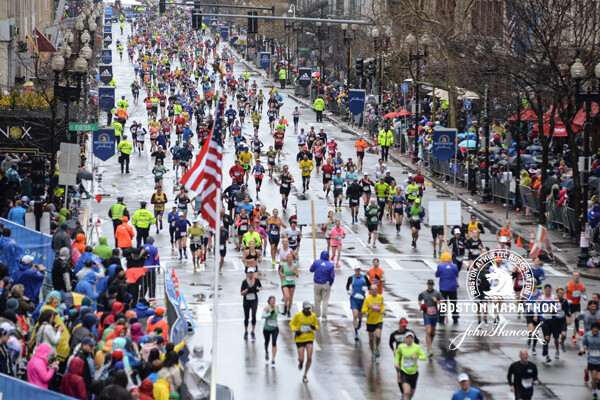
If you’re planning on cheering in more than one location, the MBTA (Massachusetts Bay Transportation Authority) is the most efficient way to get around town. Many of the best spots to view the race and cheer on runners are accessible from the T. parts of the Framingham/Worcester Line, which are less than a five or 10-minute walk from the course, and the Green Line C Branch runs parallel to it. The B.A.A. has put together a downloadable spectator guide that includes the subway stops near each portion of the course and what time the elites are expected to pass by, which you can find here.
The top 7 spots to cheer at the Boston Marathon
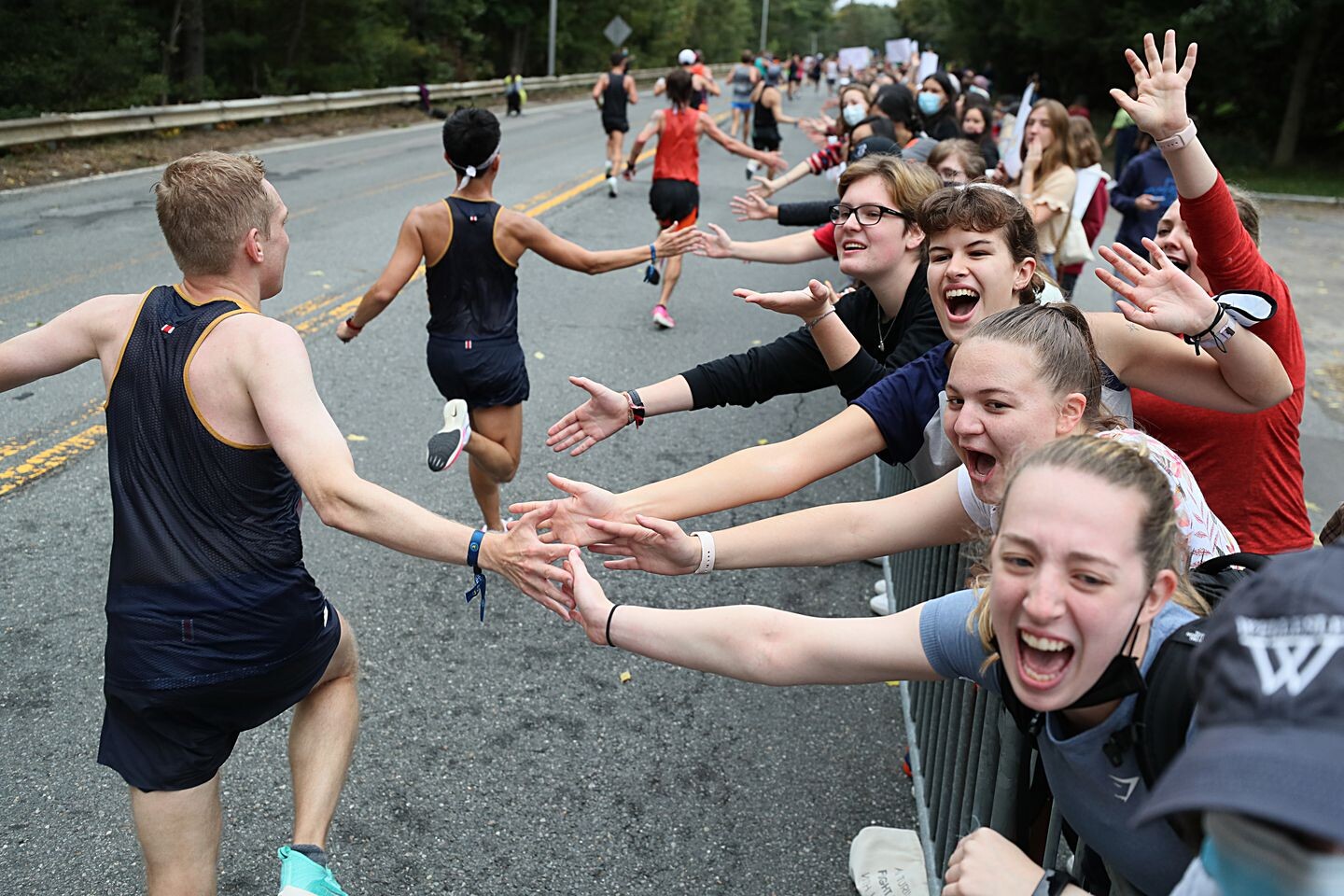
The Boston Marathon passes through eight neighbourhoods as runners make their way from Hopkinton to Boylston, and each one has its own vibe and energy. We chose the following seven spots based on those characteristics and accessibility via public transit, so you can catch runners at multiple stages of the race.
1.- The start line
The very beginning of the race is the obvious place to start, and while you won’t see much of the race standing at the start line, the energy and anticipation at the start line is unlike any other spot on the course. If you’re planning on catching the start, make sure you arrive early, since thousands of runners will be arriving by bus and it can become quite chaotic.
2.-Framingham train depot
This is one of the most historic spots to catch the action. Right near the 10K mark, some argue it’s the best area in the early part of the course to see your loved one, and it still gives you plenty of time to catch them again later on the course. Its location right next to the Commuter Rail also makes it very convenient (we recommend grabbing a $15 all-day commuter pass to avoid lines at the stations).
3.- Natick Common
Every year, spectators pack this area on Center street to catch a glimpse of their favourite runners before they reach the town centre. The crowds here usually get quite lively, so it’s a fun spot that’s easily accessible by the MBTA Commuter rail for spectators. The West Natick rail stop is also close by and is a little quieter if you want to stand out more when your loved one runs by.
4.- The Wellesley Scream Tunnel
The Wellesley Scream Tunnel is one of the most iconic (and definitely one of the loudest) cheer spots along the course. Just before the halfway point, it’s a great place to give your favourite runner some encouragement as they head into the second half of the race. The drawback to this spot is that you won’t be able to catch your loved one both here and at the Newton Hills, so you have a decision to make.
5.- Boston College
This brings us to the infamous Newton Hills. There are several spots between mile 17 and mile 21 where you can offer encouragement to the runners as they tackle one of the hardest parts of the course, but the Boston College stop on the B branch of the subway is where runners are cresting the top of the final hill and is a great spot for spectating.
6.- Cleveland Circle
Cleveland Circle is accessible from the B, C and D branches of the Green Line, and is where the crowds start to get thick (and exciting!). With nearly five kilometres of vantage points to watch runners, the energy at this point in the race is amazing. As a bonus, you still have plenty of time to get from here to the finish line.
7.-Kenmore Square
With fans either entering or leaving the Red Sox game, the energy in Kenmore Square is like one big party. At this point, runners are nearing the end and can use all the encouragement they can get, and with the Boston Strong bridge as part of the backdrop, this is a very special spot to cheer runners on.
The final stretch on Boylston
Of course, many spectators want to see their loved ones cross the finish line, and the final stretch along Boylston street has an energy that is unlike any other marathon finish line. If you’re hoping to get a spot here, be prepared to deal with large crowds, but if you can handle the chaos, it’s well worth it to get the finish line experience. Keep in mind that the Copely Green Line stop is closed on Marathon Monday, so if you’re taking the subway, you’ll have to get off at Hynes stop instead.
(04/16/2022) ⚡AMPby Running Magazine
Boston Marathon
Among the nation’s oldest athletic clubs, the B.A.A. was established in 1887, and, in 1896, more than half of the U.S. Olympic Team at the first modern games was composed of B.A.A. club members. The Olympic Games provided the inspiration for the first Boston Marathon, which culminated the B.A.A. Games on April 19, 1897. John J. McDermott emerged from a...
more...Here's How Many Servings of Fruits and Vegetables You Should Eat Per Day
Do you know how many servings of fruits or vegetables you should eat per day? If your answer is no, you’re not alone. It turns out most of us don’t get enough fruits and vegetables in our diets, according to the latest USDA Dietary Guidelines for Americans. But of course, the key to making sure you’re eating enough produce is actually knowing how much to eat.
So to help you fill up on these colorful foods, we explain exactly how many servings of vegetables and fruit you should aim to eat each day and why it’s a smart idea to hit that target. Plus, a few ways you can increase your intake.

So, how many servings of vegetables and fruits should you eat a day?
Adults who consume 2,200 calories a day should aim to eat at least 3 cups of vegetables and 2 1/2 cups of fruits each day, according to the USDA. But, if you’re consuming more calories, then you’ll need to up your intake.
“Portion goals vary with gender and size, but most of us need at least 3 to 5 cups of vegetables per day and 2 to 4 cups of fruit,” Julie Stefanski, registered dietitian nutritionist, C.S.S.D and spokesperson for the Academy of Nutrition and Dietetics tells Runner’s World. “Vegetable and fruit goals are set as ranges, with the lower end preventing vitamin deficiencies, and the upper end of the range promoting long-term health,” she says.
Eating the minimum number of servings each day will ensure you get the essential nutrients your body needs to maintain function and overall health.
Here are some clear examples of what a serving size of fruit and vegetables looks like:
Medium size fruit, like an apple or banana
1/2 cup of fresh, frozen, or canned fruits or vegetables like peas, strawberries, or carrots
1/4 cup of dried fruit, like apricots or raisins
1 cup of leafy raw vegetables, like spinach, kale, or arugula
Why is it important for runners to eat enough fruits and vegetables?
We all know good and well that fruits and vegetables are a crucial part of a healthy diet. For decades, scientist have researched a plethora of ways eating a rainbow diet can benefit your health.
For example, one review highlights fruits and vegetables as key sources of phytochemicals—like polyphenols, carotenoids, and flavonoids—and consuming them offers a multitude of health benefits, including fighting free radicals and inflammation. In the research, scientists also noted that studies have proven eating fruits and vegetables can reduce the risk of hypertension, cardiovascular disease, chronic obstructive pulmonary disease, lung cancer, and metabolic syndrome.
Also, incorporating vegetables in your daily diet can improve digestive health, vision, and reduce risk of heart disease, stroke, and diabetes, according to another review. And that's not all: Researchers of a recent meta-analysis found an association between eating five servings of fruits and vegetables a day and lower risk of mortality. (Take note that this link didn’t hold for starchy veggies.)
Stefanski says, runners can benefit from produce, in particularly leafy greens or deep orange veggies, because they’re flush with nutrients you need for recovery and daily living. What’s more, fruits and vegetables are filled with tons of important vitamins and minerals that all runners need. This includes vitamin C—which is found in peppers, oranges, and broccoli and key to the repair and renewal of connective tissues—as well as potassium in bananas, beats, and avocados, which your body uses to aid muscle and nerve communication.
Eating enough servings of fruits and vegetables each day will not only make you feel better physically, but also mentally. A study published in the journal Environmental Research and Public Health found participants who ate less than three sources of fruits and vegetables a day where at a higher risk for developing anxiety disorders. Lead study author Karen Davison, Ph.D. a health science professor at Kwantlen Polytechnic University in Canada, tells Runner’s World, this is because fruits and vegetables are rich in nutrients like carotenoids, potassium, fiber, vitamins, and polyphenols that are good for mental health.
Stefanski agrees, adding: “mentally, knowing that you’re trying to take care of your body by nourishing it well, can pay off in a mood boost.”
How to add more fruits and vegetables to your daily diet
Luckily, adding more fruits and veggies to your plate is pretty easy, so upping your intake should be a breeze. Here, Stefanski offers simple ways to pack more produce into your diet:
»Split your daily vegetable goals between meals. If you’re aiming to eat 3 cups of vegetables a day, then try to have 1.5 cups of vegetables with lunch (like in a salad) and the other half at dinner (as a side dish). Bonus points if you get a cup in at breakfast too, like adding greens to your omelet or having a produce-packed smoothie.
»Grab a snack. Consider making a cup of fruit or a medium-size piece of whole fruit as your go-to bite between meals.
»Swap out your typical preworkout fuel. Instead of eating an energy bar go for starchy vegetables like potatoes, plantains, or sweet potatoes. Or even something like a banana and peanut butter.
»Buy frozen produce. You can stock up on frozen fruits and vegetables that can be easily steamed in the microwave or roasted in the oven while you make other dishes, Stefanski says. That makes it easy to incorporate fruits and veggies into every meal—a good goal—as they’re quicker to prep and last longer.
»Add fruit at breakfast. In the morning, top your oatmeal with fresh fruit or have berries on the side of your egg dish. This is an easy way to start the day with some produce and take a few steps toward your daily servings goals.
»Have dinner for breakfast. Breakfast doesn’t have to equal what we’ve come to know as “breakfast foods.” Lean meat with a side of vegetables and a starch may fuel you much better throughout the day than your usual options, Stefanski says.
(04/16/2022) ⚡AMPby Runner’s World
Your Pre-Run Warmup Routine Might Be Wrong
Warming up before exercise is known to be an important part of enhancing your sport performance. We all want to improve our running performance, but is your warmup doing what it should?
Until recently, warmup research focused mainly on physiological responses of the body, such as increased muscle metabolism, rather than measuring improvements in performance (like increased muscle power).
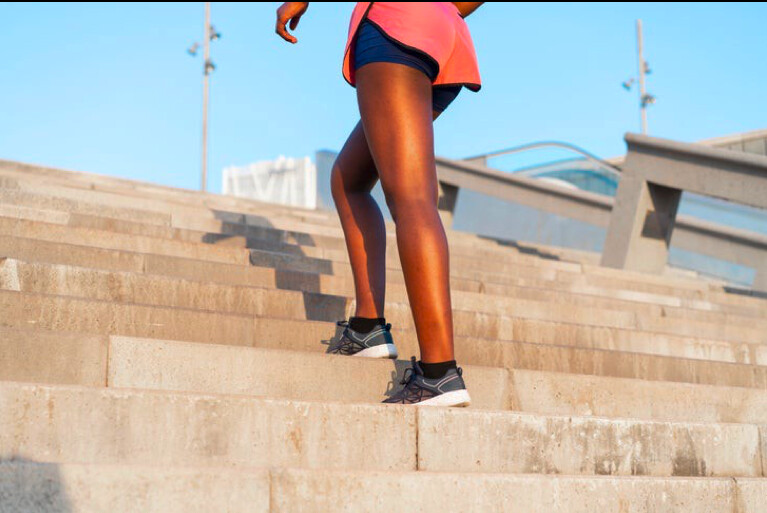
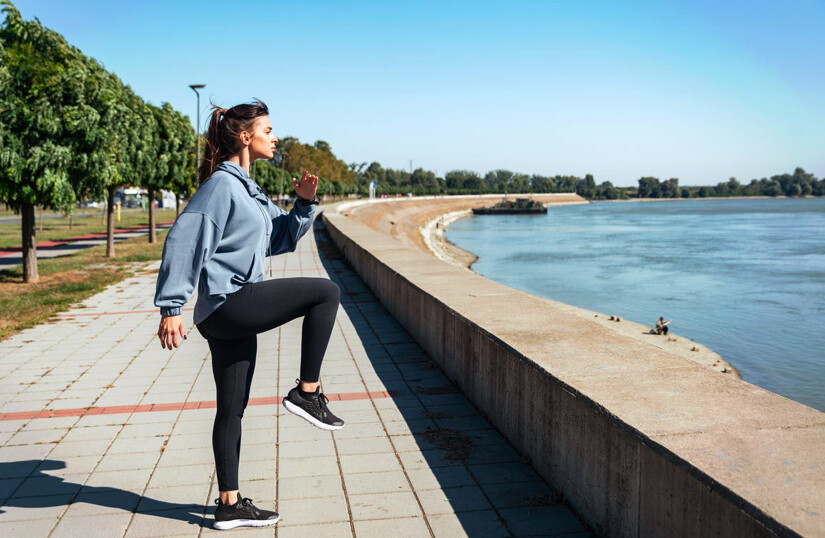
This lack of a research-backed framework led to mostly trial-and-error with coaches and their athletes, using personal, anecdotal experience rather than scientific evidence. As a result, myths about the best practices for warmup and injury reduction have become widespread. Here are three of the most common warmup myths, and how you can bust them in your own training.
Myth 1: Stretching is the best warmup for your muscles.
Stretching is one of the most common ways for athletes to warm up, and it is what many of us think when we hear "warmup." But is stretching the most effective way to prepare our body for a run?
Research shows an effective warmup should start exactly how it sounds: by warming up your body. It appears that raising your core temperature is the most effective first step to any warmup. In a systematic review of the effects of a good warmup, three out of five studies showed a reduced risk of injury directly related to warming up properly. The two that did not show benefit when focusing their warmups heavily on stretching instead of raising the body's core temperature. While the research on stretching shows it does not improve post-workout recovery or decrease delayed onset muscle soreness, the best time to stretch if you choose is during your cool down so it does not impair sport performance.
Research also shows that this rise in core temperature is correlated with improvements in athletic performance, as well as reduced risk of injury. When muscle temperature increased by 1.8 degrees Fahrenheit in a warmup, there was a strong link between increased muscle power and enhanced performance by 2-5%. It appears most performance improvements from a warmup are due to temperature-related mechanisms, not the stretching sequence.
Takeaway Fix: Instead of focusing on stretching during warmup, focus on raising your actual body core temperature with walking, jogging, or a mobility flow.
Myth 2: Any warmup is fine, just pick one!
Often, our warmups are helping us transition from an inactive state to an active one. The literature recommends that warming up the body from an inactive state should take 5-10 minutes, and whether that means walking, cycling, jogging, bounding etc., your heart rate should stay in the range of 55-65% of maximum.
Here's the key: While the main purpose of a warmup should be to raise your core temperature, adding movements specific to the exercise you are about to undertake is essential. For runners, the focus should be on taking your joints through a full range of motion they use when you're running.
During this phase, dynamic mobility is preferable to static stretching and has been seen to improve performance, while static stretching has been associated with impairments to performance and power output. This part of the warmup is individual to you - having extreme flexibility is not required, but having a functional range of motion in your major joints is important for efficient running.
Mobility considers your motor control, not just how far you can go passively. Ensuring your training is specific to your exercise event, course, body, and mind on that day will continue to enhance your performance and reduce the likelihood of injury.
Takeaway Fix: During your warmup, take your body through the types of movements and ranges you are likely to do during your training such as hip mobility exercises, ankle/ knee range of motion and pre-activation hip flexion.
Myth 3: Foam rolling is an effective warmup.
Foam rolling has developed a cult following across the running community. It is usually used in an attempt to increase training effectiveness, prepare for a race, or improve recovery. Foam rolling is thought to improve muscular performance and flexibility as well as alleviate muscle fatigue and soreness.
A 2019 systematic review of 21 different studies looked at foam rolling effectiveness on the claims above when it was done prior to exercise (during the warmup) and after exercise (during the cooldown). Jumping, sprinting, and strength performance were used as improvement indicators along with flexibility and muscle pain.
"Pre-rolling" was found to result in a minor improvement in sprint performance and flexibility, whereas the effect on jump and strength performance was insignificant. However, this improvement is relative, and if the "whole population" used pre-rolling prior to sprinting, it is likely that slightly over half would experience increased sprint performance (Coe, 2022). Additionally, the improvements were between 0.3-0.8%, and it is likely that recreational athletes would not notice an improvement that small, especially considering other factors of daily life. Therefore, these smaller changes may be more relevant for higher level athletes, where a small improvement in sprint performance is more noticeable.
What does this mean for those of us in the middle? The authors of a 2019 study reviewing the effects of dynamic stretching combined with adjuncts, such as foam rolling and vibration therapy, on athletic performance found the combination of dynamic stretching with foam rolling in a warmup significantly improved flexibility, power, and agility. The key is to use it with other aspects of your warmup, such as raising your core temperature and functional dynamic mobility.
Takeaway Fix: Combining foam rolling with dynamic stretching will have a better effect on performance than just foam rolling itself.
Conclusion
Research shows that while some people get positive outcomes from training additives like foam rolling, many, do not. Ensuring your warmup increases your core temperature is essential, and focusing on functional mobility, as well as allowing for proper rest and recovery, is critical. This way, everyone can get a better, more productive pre-run warmup and remain injury-free.
Kristen Kennedy holds a BSc in kinesiology from Dalhousie University and a Doctor of Physical Therapy degree from the University of Montana. She currently practices in the UK, specialising in sport physical therapy with a focus on running. Kristen has been a yoga teacher to athletes for six years and is co-founder of "Made By Movement," an online yoga, Pilates, and mobility studio.
(04/16/2022) ⚡AMPby Trail Runner Magazine
Hard to believe that it has been more than 1,000 days since we last had a Boston Marathon in the spring, on Patriots’ Day.
Some may have forgotten just how hard it is to get an uneventful weather day this time of year in Boston.
The last two April Boston Marathons have had rain, including a record amount of it back in 2018. The rain wasn’t nearly as disruptive in 2019 but combine that with the warm temperatures (the high in Boston was 70) and conditions were far from ideal.
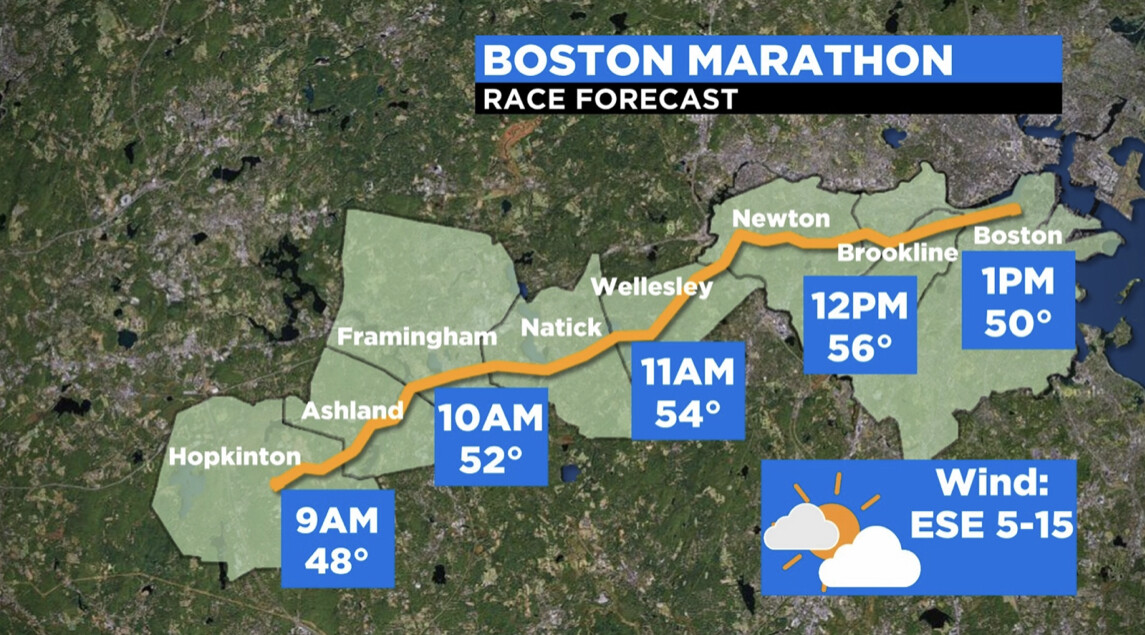
To find “ideal running conditions”, and obviously that would vary depending on upon who you ask, you really have to go back to either 2016 or 2014, both were dry, but I bet many would protest that both were a bit warmer than they would like.
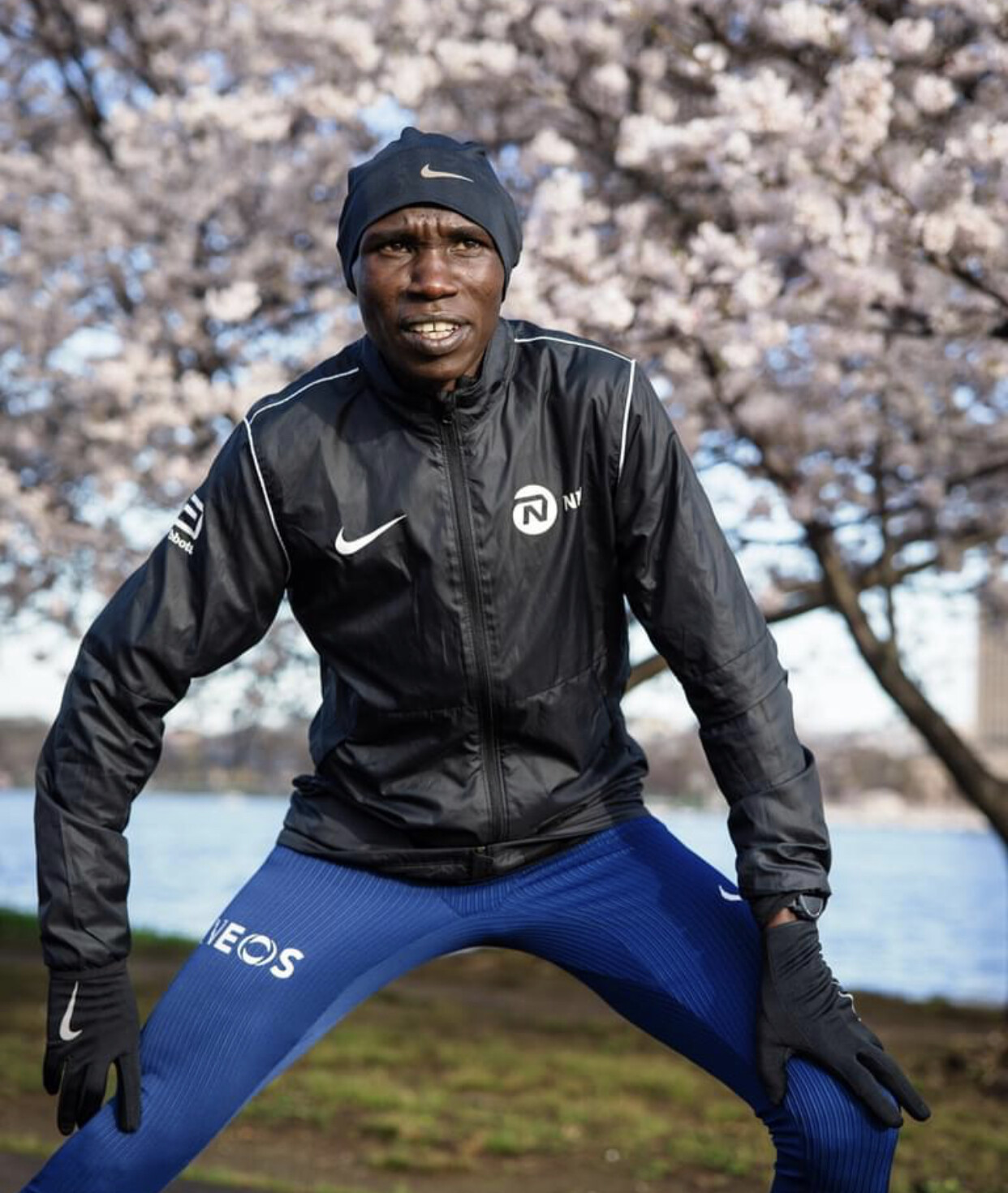
Let’s face it, whether you are running or not, getting a perfect weather day in Boston in April is tough business. This time of year, our nice weather is sometimes measured in the span of a few hours, not days. Be it rain, wind, cold or even snow, we have seen it all in the 125 prior Boston Marathons.
Having said all that, I am starting to think that MAYBE, just MAYBE, we could get an ideal weather day on Monday. What is ideal? A little research shows that most runners prefer temperatures somewhere between 44 and 59 degrees. More specifically, between 49-52 degrees.
You’ll notice the classic sea breeze as runners get closer to Boston. Temperatures will be rising for most of the race and then begin to decline for the home stretch, something I don’t think most runners will mind at all!
There will definitely be a different feel later in the day with clouds thickening and temperatures dropping with an increasing southeasterly wind. So, for those final finishers late in the afternoon, there will a bit of a chill in the air.
The elites are all in town. It is going to be a barn burner.
(04/15/2022) ⚡AMPBoston Marathon
Among the nation’s oldest athletic clubs, the B.A.A. was established in 1887, and, in 1896, more than half of the U.S. Olympic Team at the first modern games was composed of B.A.A. club members. The Olympic Games provided the inspiration for the first Boston Marathon, which culminated the B.A.A. Games on April 19, 1897. John J. McDermott emerged from a...
more...Highly competitive fields ready to clash in Seoul this weekend
Organizers of the Seoul Marathon have assembled what is arguably their strongest ever line-up for the World Athletics Elite Platinum Label road race on Sunday (17).
Eight men with sub-2:06 PBs and five women with sub-2:21 lifetime bests are among the highly competitive fields.
World silver medalist Mosinet Geremew heads the men’s line-up. The former Ethiopian record-holder, who has a PB of 2:02:55, has finished in top three in eight of his nine completed marathons. He was unable to finish the Tokyo Marathon earlier this year, but he’ll return to action on Sunday in a bid to become just the second Ethiopian man in history to win the Seoul Marathon.
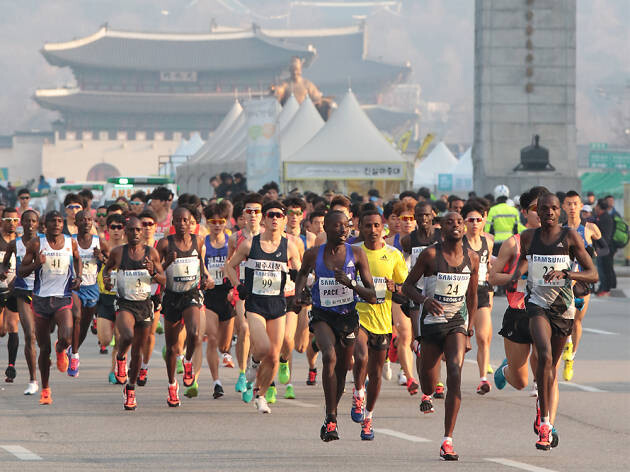
If he falls short of that target, compatriot Herpasa Negasa stands a good chance. Runner-up in Dubai in 2019, he is a 2:03:40 performer at his best.
Elisha Kipchirchir Rotich leads the Kenyan charge. A formidable opponent, he won the Paris Marathon last year in a PB of 2:04:21. He also has five other career marathon victories to his name, and he finished second in Seoul in 2019.
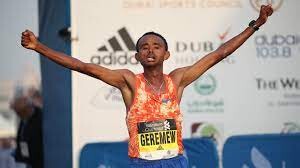
Three-time Toronto Marathon winner Philemon Rono is also entered, as is Kenyan compatriot Mark Korir. The 2015 Paris Marathon winner has a 2:05:49 PB and will be making his fifth appearance in Seoul; he has made the podium three times in the Korean city but is yet to win.
Korea’s Joohan Oh – formerly known as Wilson Loyanae of Kenya – is also familiar with the streets of Seoul, having won the race four times. He also holds the course record at 2:05:13, but his last completed marathon was back in 2019 when he finished second in Gyeongju in 2:08:42.
Ugandan duo Filex Chemonges and Moses Kibet are also worth keeping an eye on. Chemonges, who represented Uganda at the Olympics last year, holds the national record at 2:05:12. Kibet, meanwhile, has only contested two marathons to date but already has a PB of 2:05:20.
Other entered athletes include 2017 Seoul runner-up Felix Kandie of Kenya, Kenneth Keter, Brazilian Olympian Daniel do Nascimento, two-time Amsterdam winner Benard Kipyego, Solomon Kirwa Yego and Martin Kosgey.
The women’s race looks just as competitive and similarly tough to call.
Guteni Shone returns to Seoul, seven years after her victory there. Since then, she has also won in Ottawa and Seville, while in more recent years she has finished second in Prague in 2021 and second in Dubai in 2020 – the latter with a PB of 2:20:11, making her the fastest in the field for Sunday. In fact, she has finished in the top two in her past four marathons and she won’t want to relinquish that streak this weekend.
She’ll be joined on the start line by two fellow Ethiopians who also have a strong marathon record. Sutume Asefa, winner of the Beijing Marathon in 2019, set a PB of 2:20:30 when finishing third in Tokyo two years ago. Shure Demise, meanwhile, set her PB of 2:20:59 on her debut at the distance in Dubai back in 2015, but has gone on to win in Toronto twice. She also placed third in Tokyo in 2019 and in Chicago in 2018.
Netsanet Gudeta may not have the fastest PB of the elite field – partly because she has only completed two marathons to date – but she is a proven contender at the half marathon distance, having won the 2018 world title. Her half marathon PB of 1:05:45 suggests she’s capable of improving on her 2:26:09 marathon PB.
Joan Chelimo Melly has an even quicker half marathon PB, 1:05:04, making her one of the fastest women of all time for the distance. The Kenyan has started to move up to the marathon in recent years and has a PB of 2:20:57.
Other Kenyans in the line-up include Agnes Jeruto Barsosio, who was third in Seoul in 2016, Selly Chepyego Kaptich, and Celestine Chepchirchir, who was third in Seoul in 2019. Bahrain’s Eunice Chumba, seventh at the Olympics last year, is another one to watch.
Elite field
Women
Guteni Shone (ETH) 2:20:11
Sutume Asefa (ETH) 2:20:30
Joan Chelimo Melly (KEN) 2:20:57
Agnes Jeruto Barsosio (KEN) 2:20:59
Shure Demise (ETH) 2:20:59
Selly Chepyego Kaptich (KEN) 2:21:06
Eunice Chumba (BRN) 2:23:10
Celestine Chepchirchir (KEN) 2:23:38
Netsanet Gudeta (ETH) 2:26:09
Men
Mosinet Geremew (ETH) 2:02:55
Herpasa Negasa (ETH) 2:03:40
Elisha Kipchirchir Rotich (KEN) 2:04:21
Philemon Rono (KEN) 2:05:00
Filex Chemonges (UGA) 2:05:12
Joohan Oh (KOR) 2:05:13
Moses Kibet (UGA) 2:05:20
Mark Korir (KEN) 2:05:49
Felix Kandie (KEN) 2:06:03
Kenneth Keter (KEN) 2:06:05
Daniel do Nascimento (BRA) 2:06:11
Benard Kipyego (KEN) 2:06:19
Solomon Kirwa Yego (KEN) 2:06:24
Martin Kosgey (KEN) 2:06:41
Vincent Kipsang Rono (KEN) 2:07:10
Lucas Kimeli Rotich (KEN) 2:07:17
Belachew Alemayehu (ETH) 2:07:55
Brian Kipsang (KEN) 2:09:07.
(04/15/2022) ⚡AMPby World Athletics
Seoul International Marathon
The only marathon hosted in the heart of the Korean capital. Seoul marathon is the oldest marathon race hosted in Asia andis one of the fastestmarathon in the world. First held in 1931, Seoul marathon is the oldest marathon eventcontinuously held in Asia, and the second oldest in the world followingthe Boston Marathon. It embodies modern history of Korea, also...
more...50 years later, Val Rogosheske is back to run the Boston Marathon once again
Val Rogosheske started running because of a simple question from a friend: “How fast can you run a mile?”
Being a physical education major, she assumed it wouldn’t be a problem — after all, she was in school learning about physical education, and running a mile is a staple of physical education.
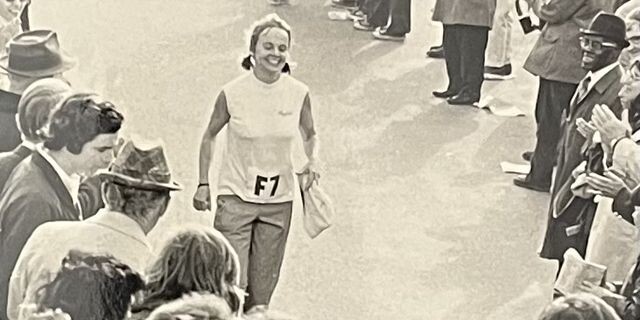
But that turned out not to be the case.
“I was just about to graduate and a friend asked me how fast I could run a mile. I thought, ‘Well, that’s an interesting question. I’ve never run a mile. Or I’ve never timed myself,’” Rogosheske said. “So I went to a track to get a time, and I was not able to finish a whole mile running. I was so embarrassed.”
Fast forward a few years, and suddenly the Minnesota native was one of the first eight women to run the Boston Marathon as an official participant.
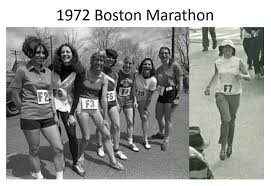
“It was so exciting. They put all eight of us on the start line, off to the side. And so that was the first time I met the other seven women,” Rogosheske said in an interview with Boston.com. “It was so exciting just to be together there and knowing that this was a big deal to be there for the first time legally.”
That historic race took place 50 years ago, in 1972. It was the first time the marathon had officially let women compete.
Rogosheske’s path to running the Boston Marathon wasn’t what one might expect.
Though she now thinks her inability to finish a mile while in college was more of a pacing problem than a physical fitness problem, the embarrassment she felt pushed her to start running.
“I got that book by Bill Bowerman called ‘Jogging.’ Read that and just started going out — I don’t know if it was every day, maybe several times a week — and just started jogging,” Rogosheske said.
In about a year, Rogosheske went from barely running a mile to competing in the Boston Marathon. Her husband-to-be at the time, a lifelong athlete and coach, helped her get over the hurdles that come with starting a new sport.
“I was once in a while having a little bit of trouble getting out the door to do my jogging, and [my husband] said, ‘What you need is a goal,’” Rogosheske said.
At that time, they were living in Alexandria, Virginia, because he was finishing up a stint in the army.
“We were out [in Virginia], and I thought, ‘Well, that’s a good idea.’ But the only race I had heard of was the Boston Marathon, but I had read about women hiding in the bushes and then jumping out and running it, and I thought, ‘This sounds like a good thing to do,’” Rogosheske said. “That’s when I started doing more and more miles and getting ready actually for a marathon.”
In 1966 Bobbi Gibb made history as the first woman to unofficially run the Boston Marathon. At the time, she was told women were “not physiologically able to run a marathon,” and wasn’t allowed to officially run the race. She took matters into her own hands, hid in a forsythia bush near the start, and joined the crowd after half the men had started running.
Six years later, the Boston Marathon officially welcomed women to compete in the race — the first year had a field of eight women, including Rogosheske.
With her goal of running the Boston Marathon in mind, Rogosheske’s husband hooked her up with some reading material and advice from friends who had marathon experience. Then she was, quite literally, off to the races. Rogosheske finished sixth in her category in her first marathon, with a time of 4:29:32.
“In 1972, I was not very well ready,” Rogosheske said. “We had just gotten married in December, and then I got mono and was in bed for the whole month of January. So that left only February March to train for the marathon. I finished it feeling like you know I could do better.”
Rogosheske came back in 1973 and 1974, eager to improve on her original time — a feat made easier by not having mono before the other two races. Her personal best came in 1974 with a time of 3:09:38.
Though at the time she realized it was exciting to be one of the original eight female runners, Rogosheske said after the starting line she never saw them again, so it didn’t stand out as much.
“I think the most exciting part then was passing Wellesley College … And the women came out there yelling, ‘Right on, sister,’ it just felt so good,” Rogosheske said.
Wellesley College has been a highlight for Rogosheske at several marathons. When she came back for the 25th anniversary in 1997, she was dealing with some knee problems, so she didn’t run the entire race but made sure she made it about halfway through, when the course passed through Wellesley.
“When I came back 25 years later, I made sure I did not drop out before Wellesley, “Rogosheske said. “So then when I went to Wellesley, they all looked like my daughters instead of my sisters, and now this year, I’m kind of looking forward to just going by there again, and looking at them and feeling like ‘Wow, they can all be my granddaughters.’”
Though she couldn’t finish the race for the 25th anniversary, she was really there for the experience. The same is true now — she’s still looking forward to the experience and festivities — but this year, she also plans to finish the race.
“I’m just excited to be back in that atmosphere,” Rogosheske said. “Just to compare, I mean, 50 years ago, there were 1,200 total runners, I believe. And that seemed like a huge number. … And now, this year, I believe there’s going to be over 30,000, 14,000 of which will be women. So what a change in 50 years to go from eight to 14,000.”
Rogosheske, who is 75 years old, is running this year’s Boston Marathon as a part of the honorary women’s team. She will be running along with seven other women who have made powerful impacts in everything from athletics to human rights, according to the B.A.A.
“I’m just so honored to be on this team because these other women have just done so much in so many ways for women, in very practical, really heartfelt ways,” Rogosheske said.
About 50 years after she first took to the starting line of the Boston Marathon, Rogosheske will cross that momentous line again, this time with her girls and another 14,000 women by her side.
“I’ve really been seriously getting ready for this, but I won’t be racing in the traditional sense,” Rogosheske said. “I’m just going to be trying to finish with lots of enjoyment.”
(04/15/2022) ⚡AMP
by Martha Hill
Boston Marathon
Among the nation’s oldest athletic clubs, the B.A.A. was established in 1887, and, in 1896, more than half of the U.S. Olympic Team at the first modern games was composed of B.A.A. club members. The Olympic Games provided the inspiration for the first Boston Marathon, which culminated the B.A.A. Games on April 19, 1897. John J. McDermott emerged from a...
more...Combine speed and endurance in one session with this 5K sharpener workout to get you race-ready
The 5K is a tough race. It’s short compared to other distances so you need to tackle it with some speed, but long enough that maintaining that speed for the entire race is a significant challenge. In other words, the 5K hurts.
Learning to combine speed with endurance, while still having enough left in the tank for a strong finishing kick is key to success in the 5K, and this workout will accomplish just that. If you’ve got a 5K on the calendar, try this session a week or two out from your goal race to prepare you for the demands of the distance.
The 5K sharpener
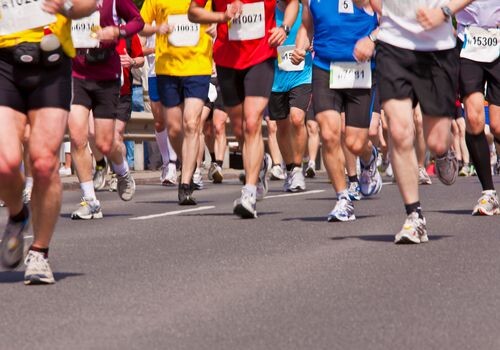
The best place to perform this workout is on a track, but if you have a GPS watch you could run this workout on the road as well. We’ve also included a timed alternative, for those who have neither. This is a pretty big workout, so it is geared toward intermediate and advanced runners. Beginners, try these workouts instead.
The goal of this workout is to run the longer reps slightly slower than 5K race pace (although you can speed up to race pace for the 1K and 800m intervals if you wish). Then, start the 300m and 200m sets at the end at 5K race pace and try to speed up as the reps get shorter.
The workout

Warmup: 10-15 minutes easy jog, followed by form drills and strides
Workout: 1,600m, 1,200m, 1,000m, 800m / 3:30 standing rest between each rep and 5:00 recovery at the end of the set. Follow with 2 x 300m / 1:30 rest / 2 x 200m / 1:30 rest
Timed version: 6 min, 5 min, 4 min, 3 min / 3:30 standing rest between each rep and 5:00 recovery at the end of the set. Follow with 2 x 1 min /1:30 rest / 2 x 40 seconds / 1:30 rest
Cooldown: 10-15 minutes easy jog, followed by light stretching.
(04/15/2022) ⚡AMPby Brittany Hambleton
Strong Vienna elite fields could attack course records
Both course records could become a target at the Vienna City Marathon, which features strong elite races on April 24. Kenyans Leonard Langat and Vibian Chepkirui will return to defend their Vienna titles while there are three men on the start list who have broken 2:06 and five women featuring personal bests of sub 2:25.
With regard to these personal records it will be strongest line-up in the history of the Vienna City Marathon which will see its 39th edition next week. Including races at shorter distances more than 31,000 runners have registered for Austria’s biggest running event, a World Athletics Marathon Label Road Race.
“We are very happy that we were able to surpass the mark of 30,000 entries. Compared to our comeback race in September 2021 this is a nice step forward. We feel the enthusiasm of the runners,“ said Kathrin Widu, the General Manager of the Vienna City Marathon.
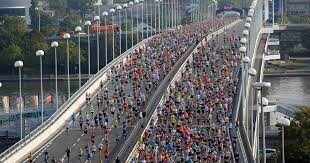
There has never been an Eritrean winner in the history of the Vienna City Marathon which had its first edition back in 1984. This may change next week though since the two fastest entrants are from this country: Goitom Kifle and Oqbe Kibrom feature personal bests of 2:05:28 and 2:05:53 respectively. Kifle had a fine year in 2021: He was third in Enschede, 14th in the Olympic marathon in Sapporo and then 6th in Valencia, where he ran his PB. With his personal record the Eritrean is a little faster than Vienna’s course record of 2:05:41 by Ethiopia’s Getu Feluke in 2014.
Abdi Fufa of Ethiopia is the third athlete in Vienna’s line-up who has run sub 2:06. A year ago he was second in Siena’s elite only race with 2:05:57. It looks a tough task for Leonard Langat to defend his title in the Austrian capital. The Kenyan improved to 2:09:25 in Vienna last September. But with this PB he is only the eighth fastest athlete on the start list.
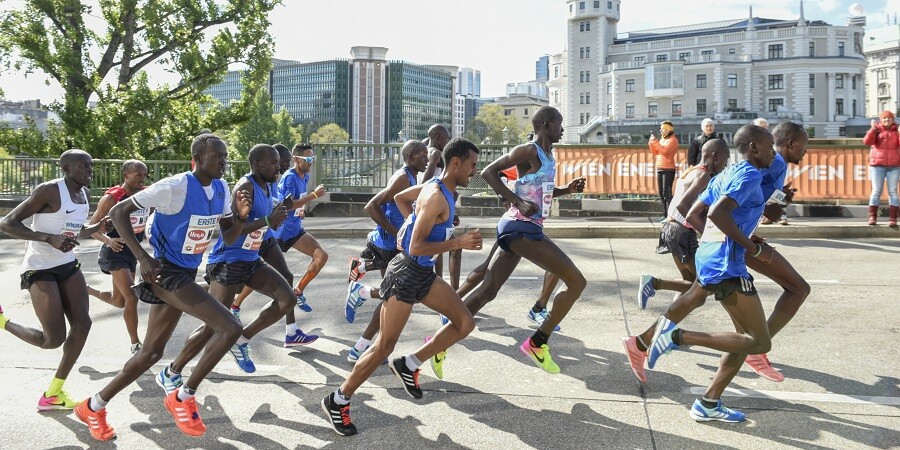
Unfortunately there were a number of cancellations from elite runners recently. Among them are Mekuant Ayenew and fellow-Ethiopian Derara Hurisa, who had originally crossed the line first in last year’s Vienna City Marathon. However he then had to be disqualified for wearing illegal racing shoes and Leonard Langat became the winner.
The fastest runner on the women’s start list is Caroline Kilel, who ran 2:22:34 when she took the Frankfurt Marathon back in 2013. While the Kenyan did not reach these sort of times recently there are other athletes who showed promising last year. Defending champion Vibian Chepkirui may only be number five on the list with her PB of 2:24:29.
However she did run this time last September in Vienna in very warm conditions. Afterwards the Kenyan said that she could have been at least two minutes faster in more suitable conditions.
Vibian Chepkirui could be capable of attacking the course record of fellow-Kenyan Nancy Kiprop who was the winner in 2019 with 2:22:12.
Kenya’s Ruth Chebitok and Ethiopia’s Sifan Melaku are number two and three on Vienna’s start list with PBs of 2:23:29 and 2:23:49 respectively. Sheila Jerotich of Kenya is a contender for victory as well. She took the Istanbul Marathon in November, improving to 2:24:15.
Elite fields with personal bests
Men:
Goitom Kifle ERI 2:05:28
Oqbe Kibrom ERI 2:05:53
Abdi Fufa ETH 2:05:57
Raymond Choge KEN 2:08:11
Cosmas Muteti KEN 2:08:45
Weldu Gebretsadik NOR 2:09:14
Edwin Soi KEN 2:09:16
Leonard Langat KEN 2:09:25
Charles Ndiema KEN 2:10:43
Lemawork Ketema AUT 2:10:44
Jeison Suarez COL 2:10:51
Iraitz Arrospide ESP 2:10.59
Noah Kipkemboi KEN 2:11:09
Ebba Chala ETH 2:11:27
Abraham Kipyatich KEN Debut
Timon Theuer AUT Debut
Women:
Caroline Kilel KEN 2:22:34
Ruth Chebitok KEN 2:23:29
Sifan Melaku ETH 2:23:49
Sheila Jerotich KEN 2:24:15
Vibian Chepkirui KEN 2:24:29
Esther Kakuri KEN 2:26:11
Urge Soboka ETH 2:28:10
Marcela Joglova CZE 2:28:16
Nataliya Lehonkova UKR 2:28:58
Kellys Arias COL 2:29:36
Viola Yator KEN 2:30:03
Teresiah Omosa KEN 2:30:12
Nataliya Lehonkova UKR 2:30:28
(04/14/2022) ⚡AMPVienna City Marathon
More than 41,000 runners from over 110 nations take part in the Vienna City Marathon, cheered on by hundreds of thousands of spectators. From the start at UN City to the magnificent finish on the Heldenplatz, the excitement will never miss a beat. In recent years the Vienna City Marathon has succeeded in creating a unique position as a marathon...
more...American olympic Allyson Felix to retire from track after this season
Seven-time Olympic gold medalist Allyson Felix said Wednesday she will run one final track season, months after competing in her fifth Games.
The most decorated American track and field Olympian picked up bronze in the 400 meters and gold in the 4 by 400 relay in Tokyo last year, having already confirmed that it would be her final Games.

In an Instagram post Wednesday, she said she would say goodbye to the sport "with one last run."
"This season isn't about the time on the clock, it's simply about joy. If you see me on the track this year I hope to share a moment, a memory and my appreciation with you," said Felix, 36, who is expected to run in the Penn Relays later this month.
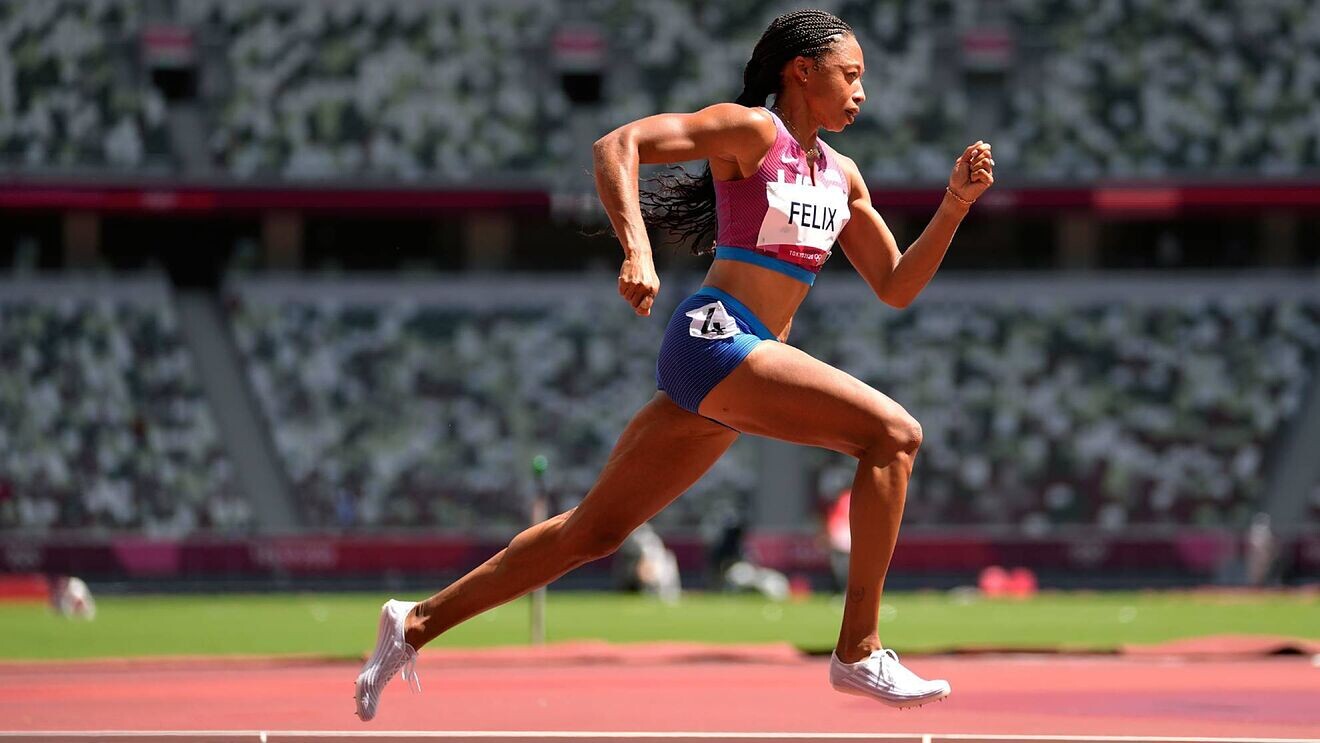
The 13-time world champion became an advocate for working mothers after giving birth to her daughter, Camryn, via an emergency C-section in 2018. In an opinion piece for The New York Times, she said she faced pay cuts from sponsors including Nike after having her child and competed in Tokyo wearing shoes from her own Saysh line.
"This season I'm running for women," Felix said. "I'm running for a better future for my daughter. I'm running for you."
Olympic sailor Eya Guezguez of Tunisia has died in a training incident, the International Olympic Committee announced on Monday. She was 17.
Guezguez was training with her twin sister Sarra alongside their national team on Sunday when their boat capsized because of strong winds. Eya died while Sarra survived.
Together, they competed at the Tokyo Olympics last year in 49er FX and finished 21st.
Thomas Bach, president of the IOC, said he was shocked by the news.
"She was an inspiring talent and role model for her athletes' generation," Bach said.
"Eya Guezguez's participation at Tokyo 2020 alongside her twin sister Sarra will continue to motivate girls everywhere. Our thoughts are with her family, friends and the Olympic community in Tunisia."
(04/14/2022) ⚡AMPThe training characteristics of world-class distance runners
There are thousands of studies available analyzing various aspects of elite distance running training, and we finally have something that brings them all together. A recent review article, published in the journal Sports Medicine – Open, has integrated the scientific literature on training with the plans and logs of elite distance runners to create an in-depth training framework for world-class endurance athletes. If you’ve ever wondered what it takes to be the best of the best, this is it.
The authors of the article point out that while there are several scientific studies during the last two decades that have described the training characteristics of elite runners, many developments in modern long-distance running training have been driven by experienced coaches and athletes, rather than scientists. “Sport scientists have historically found themselves testing hypotheses regarding why elite athletes train as they do rather than driving innovation around the how in the training process,” the authors add.
The goal of this paper, then, was to combine the information we have from sports science studies with anecdotal evidence provided through training logs of elite athletes to outline a framework for understanding how the world’s best distance runners train to be at that level. In total, the researchers analyzed training logs from 59 world-leading athletes and 16 coaches who were either 5K/10K runners on the track or marathoners. Of course, the caveat to this type of information is that it’s not peer-reviewed and could be subject to bias, and when analyzing athletes at the elite level, the possibility that they could be doping can also skew the results.
Despite this, the paper does a fantastic job combining the two types of evidence and providing a very detailed outline of how these athletes train. Of course, the majority of recreational runners won’t (and shouldn’t) be trying to replicate their training, but there are some takeaways for the everyday runner who wants to improve their running performance. Below, we’ll summarize some of the key findings of the article, and if you’re interested in more of the details, we highly recommend checking out the article itself.
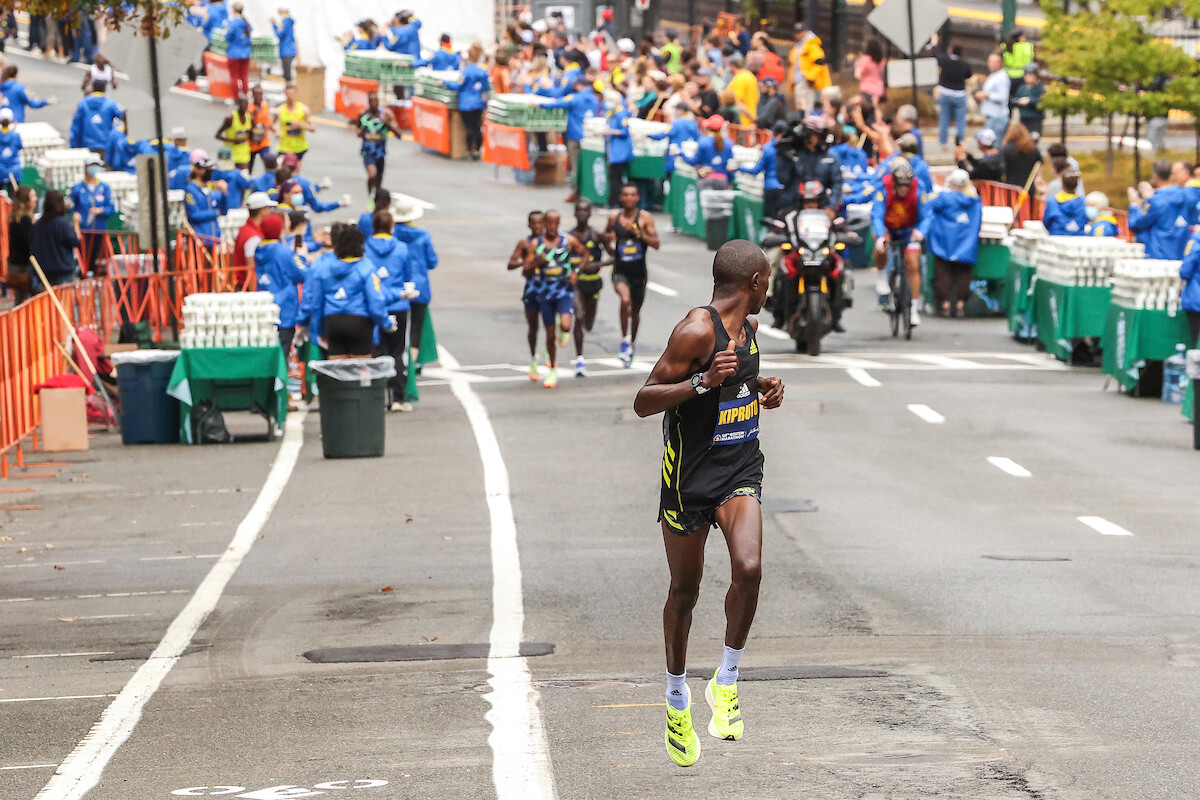
Training periodization and competition schedule
The first aspect of elite performance the authors address is the way athletes plan their training over a season or year, and how often they compete. They found that both track and marathon runners begin their training with a base phase that involves gradually building their running volume over the course of several weeks. As this preparation period becomes more specific, the athletes begin doing a higher volume of running at race-pace intensity.
From there, track runners move into a competition phase, which is more or less a continuation of the specific preparation phase, with races and more recovery thrown in. They also maintain a relatively high volume of running during this phase, which highlights the importance of reinforcing the base you’ve already built since it takes years of continuous work to develop your aerobic base. Next is the transition phase, or “off-season,” as some may call it, can last anywhere from one to four weeks, and could be complete rest or involve some low-intensity activity.
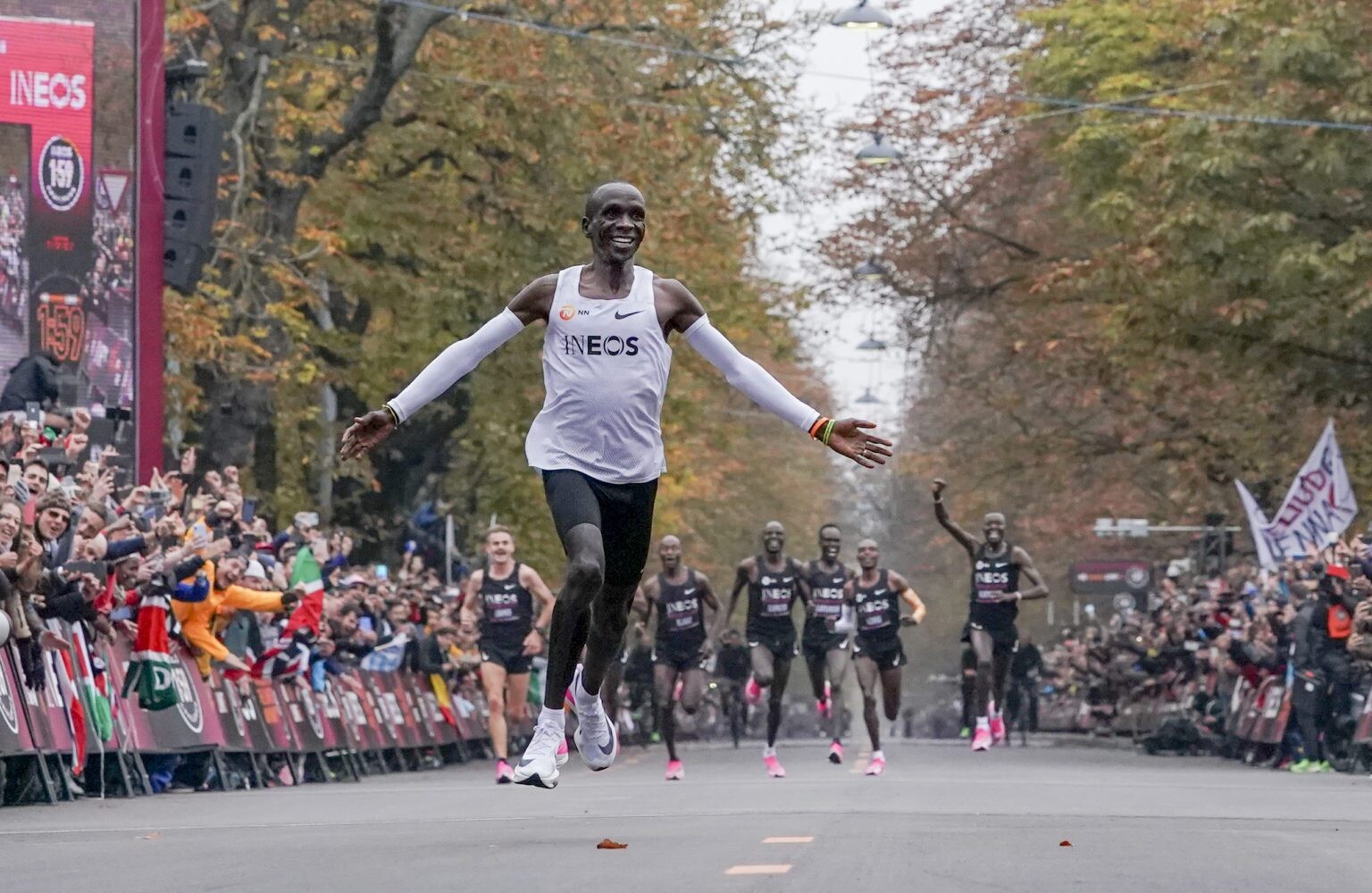
Marathoners are slightly different. They also have a base phase, but their specific preparation phase involves a lot more slower race-paced sessions, and they tend to have their highest-volume weeks right before they begin tapering for their race. If you’re training for a longer race like a marathon, take a page out of the elites’ books and put your highest-volume weeks just ahead of your taper.
Of course, track athletes tend to compete far more frequently than marathoners, usually with no more than six races a year and only two marathons, separated by at least three months. This is another lesson to recreational athletes doing marathons (and ultras, too) to avoid racing too often if you want to perform at your best.
Training
The researchers found that the unifying factor between both track and marathon runners was they all did the majority of their running volume (about 80 per cent) at a low intensity. They determined that most athletes were doing their easy runs at about three to five km/hour slower than their marathon race pace, and their long runs at about one to two kilometres per hour slower than marathon race pace.
So what does that actually look like in training? The authors include the following training principle from coach Bill Bowerman: “2–3 weekly interval sessions, a weekly long run, and fill the rest with as much [easy running] as you can handle.” Of course, for many recreational runners, three speed sessions in a week is likely too much (especially if you’re trying to keep 80 per cent of your running volume at an easy pace), but a good coach can help you find a balance that works for you.
The article also includes a great table that outlines each of the different sessions elite runners include in their training and how to perform those workouts, including fartleks, threshold runs, hill repeats and sprints. Check out the table here to find out exactly what goes into elite distance running training (and to find out if you’re missing anything in your own training).
Volume
This is the section when recreational runners should definitely not attempt to copy the elites. The researchers found that track athletes were doing about 130-190 km/week, and marathoners were hitting even higher numbers at 160-220 km/week.
While recreational runners should not attempt to run that kind of volume, they can learn from how they build up to that volume. When elite athletes are building their mileage during the base phase, they do so first by increasing the frequency of their runs (which often involves doing doubles) before they increase the volume of their runs. This doesn’t mean you should be doubling, but if you’re running three days per week and are trying to increase your mileage, start by adding a fourth (and even eventually a fifth) before increasing the length of your runs.
Intensity zones and distribution
As runners, we talk a lot about the best way to measure intensity. Is it heart rate? Blood lactate? Pace? Perhaps the best conclusion the authors come to throughout the entire article is this: “We would argue that this lack of consensus is consistent with an uncomfortable truth; no single intensity parameter performs satisfactorily in isolation as an intensity guide due to (1) intensity–duration interactions and uncoupling of internal and external workload, (2) individual and day-to-day variation, and (3) strain responses that can carry over from preceding workouts and transiently disrupt these relationships.”
In other words, no one metric perfectly or completely incapsulates running intensity, so it’s possible that the only measure that truly matters is feel. Of course, it’s very hard to accurately measure or quantify feel, and it takes time and practice to listen to and understand the queues your body is sending you. The authors offer an excellent table outlining an intensity scale that may help you understand how hard you should be working for various runs and workouts, and it’s definitely worth checking out.
The other big takeaway from this section is this: the elites spend about one per cent of their training volume doing sprints or strides. That may not sound like much, but considering that one per cent of 150 kilometres is 1.5 kilometres worth of strides, you can see the importance of these short, fast sprints. The lesson? Don’t neglect your strides.
Tapering
Finally, the taper. The research says that runners should take a two to three-week taper, where they reduce their training volume by 40 to 60 per cent, but the elites don’t appear to follow this rule. Most of them don’t begin substantially decreasing their training volume until seven to 10 days out from competition, with their last intense session three to five days before race day.
The takeaway here for recreational athletes is that tapering is important, but you should be careful not to reduce your volume or intensity too drastically. Figuring out what works for you may take some trial and error, but again, a good coach can help you determine what might work well for you.
The bottom line
There’s so much information in this article that it’s difficult to sum it up very succinctly, but if we were to make some generalized recommendations for recreational runners based on the findings, they would look something like this:
Give yourself time for a good base phase to build up your running volume gradually
When you’re increasing mileage, add more runs into your schedule before making your runs longer
If you’re doing long races like marathons or ultras, don’t race too often if you want to perform at your best
Keep your easy days easy, and the majority of your training should be done at an easy pace
Get to know yourself and understand how different workouts and paces should feel to best determine intensity
Don’t neglect your strides
Tapering is important, but be careful not to decrease your training too much ahead of your race
(04/14/2022) ⚡AMP
by Running Magazine
Training mates Evans Chebet, Benson Kipruto plot Boston Marathon conquest
The withdrawal of the Ethiopian long distance legend Kenenisa Bekele and Kenya’s Titus Ekiru from this years’ Boston Marathon may have grabbed the headlines, but the field still has some formidable names.
Ethiopia’s Birhanu Legese (2:02:48) is now the fastest in the field, with Kenya's Evans Chebet the second fastest in the startlist with a personal best of 2:03:00 which he clocked in the 2020 Valencia Marathon.
Former champions Geoffrey Kirui (2017), Japan’s Yuki Kawauchi (2018), Kenya’s Lawrence Cherono (2019) and the defending champion Benson Kipruto will all be clashing for the title on Monday.
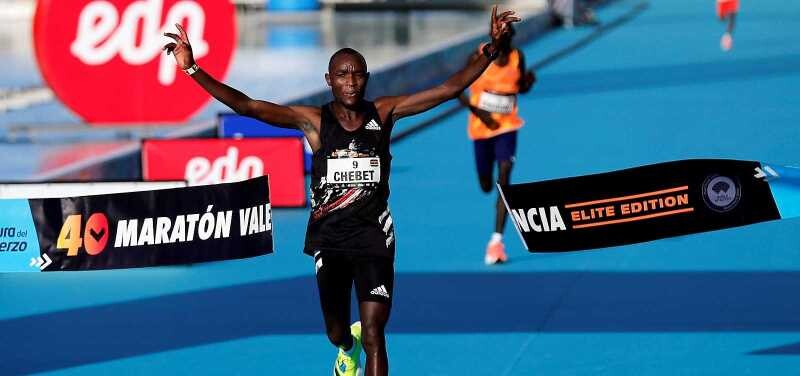
Other athletes who will be competing from Kenya are Bernard Koech (2:04:09), former New York Marathon champion Geoffrey Kamworor (2:05:23), Eric Kiptanui (2:05:47), Bethwel Yegon (2:06:14) who was second in Berlin Marathon and New York Marathon champion Albert Korir (2:08:03).
But the duel has also some finest athletes from Ethiopia, the likes of Sisay Lemma (2:03:36), Kinde Atanaw (2:03:51), Lemi Berhanu (2:04:33) and Lelisa Desisa (2:04:45).

Training mates Chebet and defending champion Kipruto, who train in Kapsabet, Nandi County under 2Running Club, are optimistic that they will be able to run well.
Chebet said that the lineup is strong and they have discussed how they will compete.
Chebet competed in Boston in 2018 where a big number of athletes dropped out including him due to a storm.
“I’m heading to Boston Marathon once again and my target is to run well. Last time I competed in the race the weather affected us and had to drop at the 30km mark but I have seen the weather this year is fair,” said Chebet.
But for Chebet, he will be competing against Cherono whom he outsprinted in the last 50 meters in 2020 when they competed at the Valencia Marathon.
He said that he knows that it will be a tight contest but they are up to the task.
“I can see Cherono will also be competing in the race and having run with him at the Valencia Marathon, he is a tough opponent,” added Chebet.
Kipruto wants to ink his name in history books by defending his title.
“I’m glad to be back in Boston Marathon and my plan is to defend the title I won last year. The startlist is rich but I believe I would be able to run well and join the list of multiple champions,” said Kipruto.
(04/14/2022) ⚡AMPby Bernard Rotich
Boston Marathon
Among the nation’s oldest athletic clubs, the B.A.A. was established in 1887, and, in 1896, more than half of the U.S. Olympic Team at the first modern games was composed of B.A.A. club members. The Olympic Games provided the inspiration for the first Boston Marathon, which culminated the B.A.A. Games on April 19, 1897. John J. McDermott emerged from a...
more...1967 Flash Back - It is hard to believe this happened just 55 years ago and since then there has been 212,054 women Boston Marathon finishers
Kathrine Switzer wasn’t going to be stopped. As the daughter of a major in the United States, failure was never an option. While studying at Syracuse University, a coach once told her that a “fragile woman” could never run in the Boston Marathon.
This only encouraged her further. Undeterred, she trained in secret and entered the race in 1967.
Rather than simply letting her run, officials reacted negatively and even tried to pull her from the race. Fortunately, Kathrine Switzer was running alongside her boyfriend, who helped fend off those around her. She finished the competition in just over four hours
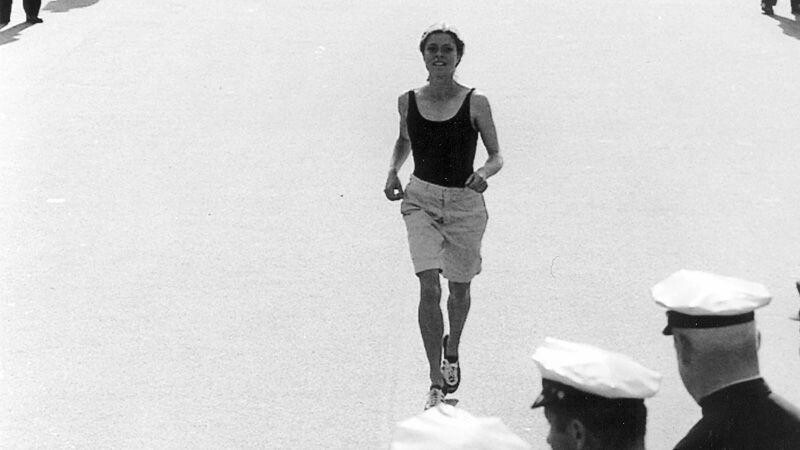
Since then (up to the 2019 event) there has been 212,054 women finishers out of 252,209 entries.
Actually the year before Bobbie Gibb (photo 2-3) had finished the Boston Marathon without the public attention Switzer got in 1967.

Before 1966, the longest Amateur Athletic Union (AAU)-sanctioned race for women was one and a half miles. Until 1972, when the first women's division marathon opened, the Boston Marathon was an AAU men's division race. Under the AAU rules, women are not qualified to run in men's division races.
Gibb trained for two years to run the Boston Marathon, covering as much as 40 miles in one day. On writing for an application in February 1966, she received a letter from the race director, Will Cloney, informing her that women were not physiologically capable of running marathon distances and that under the rules that governed amateur sports set out by the AAU, women were not allowed to run more than a mile and a half competitively.
She realized that it was more important than ever to run and that her run would have a social significance far beyond just her own personal challenge.
After three nights and four days on a bus from San Diego, California, Gibb arrived the day before the race at her parents' house in Winchester, Massachusetts. On the morning of Patriots' Day, April 19, 1966, her mother dropped her off at the start in Hopkinton.
Wearing her brother's Bermuda shorts and a blue hooded sweatshirt over a black, tanked-top swim suit, she hid in the bushes near the starting pen. After the starting gun fired, she waited until about half the pack had started and then jumped into the race.
(04/13/2022) ⚡AMPKenyan long-distance runner Joyce Chepkirui has been banned for four years
The 33-year-old won the 10,000m at the Commonwealth Games in Glasgow in 2014 and also took the African title over the same distance in Marrakech that year.
Chepkirui has been provisionally suspended since June 2019, after an expert panel studied anomalies in blood samples collected by World Athletics between 2016 and 2017.
The panel concluded the "likelihood of the abnormalities in results being due to blood manipulation" - the artificial increase of red blood cells using a stimulant - was "high".
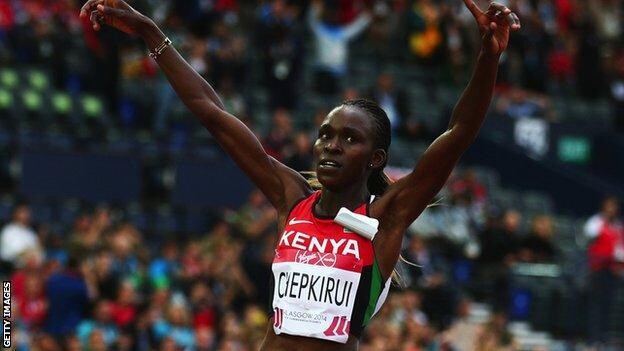
Chepkirui explained the results by saying she suffered from hormone imbalance and vaginal bleeding, which was caused by a contraceptive injected every three months, had an iron-rich diet and took three drugs to treat these conditions.
However, the Court of Arbitration for Sport (Cas) decided to ban Chepkirui after upholding an appeal filed by the Athletics Integrity Unit, and her four-year period of ineligibility has been backdated to the start of her provisional suspension.
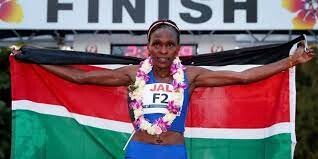
Chepkirui's results between 6 April 2016 and 4 August 2017 - which include a third-placed finish in the Boston Marathon in April 2016 - will be disqualified and she will be required to forfeit any medals, prizes and appearance fees gained in that time.
Meanwhile, Cas have ruled the Anti-Doping Agency of Kenya should pay 2,000 Swiss Francs (US$2,140) to World Athletics as a contribution towards its legal costs and other expenses.
Kenya is still listed as a category A nation by the World Anti-Doping Agency (Wada), meaning the country remains a high risk for doping.
As a result, Kenyan athletes still need to undergo three out of competition tests in a 10-month period before a World Championships or Olympic Games.
BBC Sport Africa understands Athletics Kenya had been hoping to be removed from the category A classification.
(04/13/2022) ⚡AMPby BBC sports
Three workouts to do the week of your race, these workouts are perfect tests of preparation and mental confidence
So you have a race on the horizon, and you are unsure of how to prep for it. The last thing you want to do is something too hard, to tire you out before your race. The idea is that you want your legs rested leading into the race, therefore it’s important to find a workout that isn’t too taxing, but is enough to get your legs moving.
Here are three workout ideas that are perfect tests of preparation and mental confidence before a race.
Workout #1
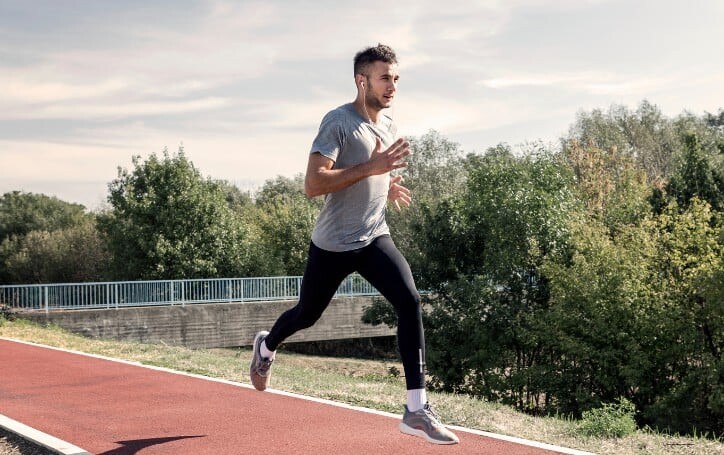
Three to five reps of one-kilometer repeats with 90 seconds between reps.
Each rep should be done at your goal race pace. Try to focus on your breathing and stay calm and relaxed. A tip would be to treat each rep as the first kilometer in a race.
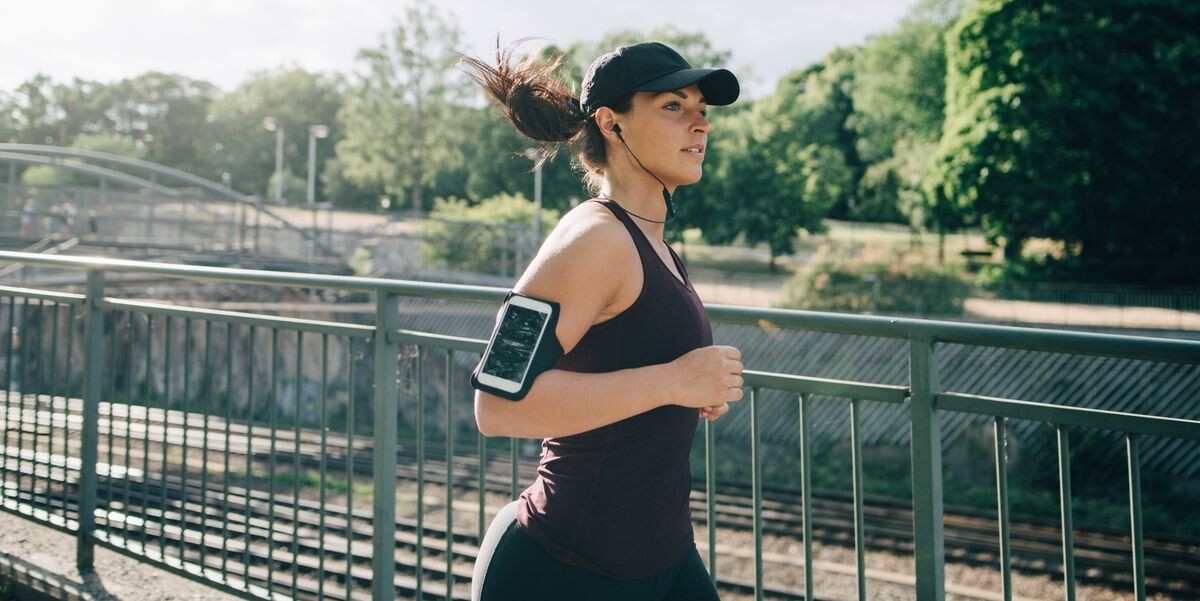
Always do a 10-minute warmup of slow jogging before you start your intervals.
Workout #2
Eight to 10 reps of one minute at race pace and two minutes’ slow jog rest.
The goal here is to get the legs moving at a familiar (race day) pace. Think of each 60-second rep as a long stride, then slow jog between intervals to let your body recover.
Always do a 10-minute warmup of slow jogging before you start your intervals.
Workout #3
Two to four reps of a mile with two minutes’ jog rest between reps.
This workout should be done at your goal pace or a few seconds per km slower. The idea here is similar to the two workouts above–getting your legs moving before race day. If you are training for a half-marathon or marathon, you’ll want to focus on maintaining your aerobic endurance, so aim for three or four reps.
Always do a 10-minute warmup of slow jogging before you start your intervals.
These three workouts should be done three to five days before your race to give your body time to recover.
(04/13/2022) ⚡AMPby Running Magazine
WANYOIKE DEFENDS HIS TITLE AS JUNIORS SPARKLE AT EIGHTH KATA 10K TIME TRIAL
The Eighth Edition of Kenyan Athletics Training Academy (KATA) Time-Trial took place on Wednesday morning (April 13) in Thika Kenya with upcoming athletes recording remarkable improvement.
However, experience and international exposure was at play where Peter Wanyoike remained unbeaten for the second time after winning the race back- to-back.
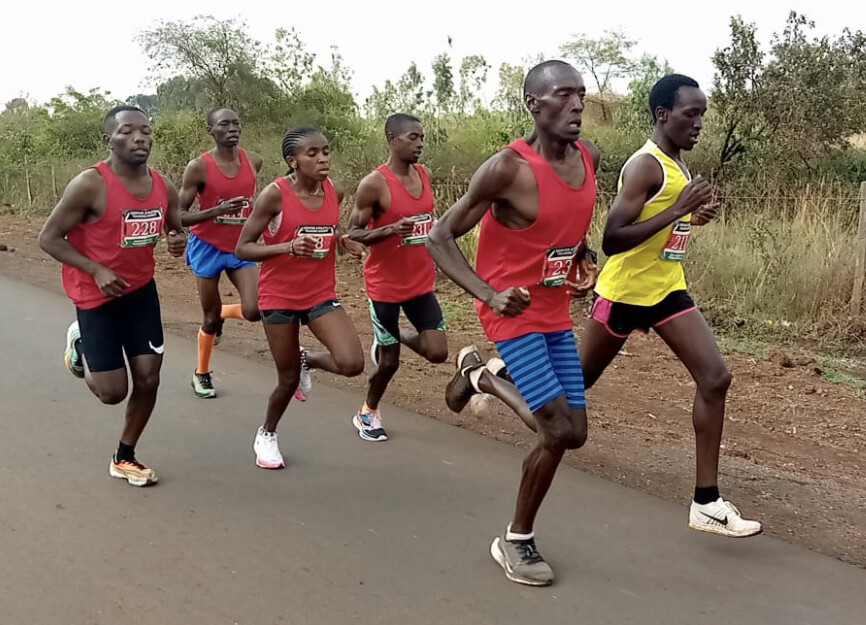
Wanyoike did not only win the 10Kilometres event but also improved his previous 29:57.8 after clocking 29:53.7. It was not easy for the winner as he had to resort to experience to fight off strong opposition from upcoming Zakaria Kirika who stuck on his shoulders from the beginning.
Zakariah managed a sub-30 clocking 29:54.4 in second position during the race that brought together 19 athletes. Levis Kuria out-grew himself to finished 7th with an impressive 33:11. His personal best was 35:38.8
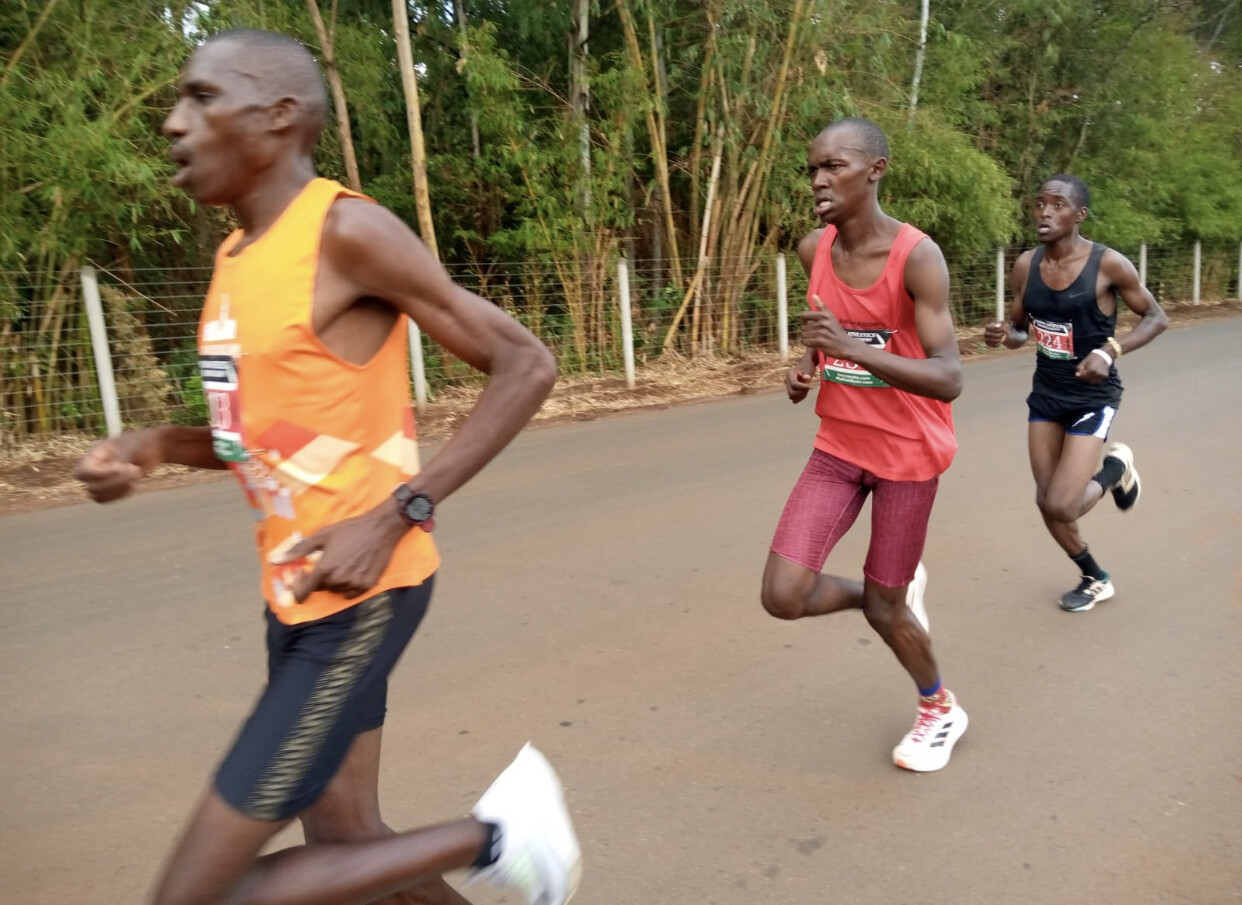
In women, Lucy Muli, has just started her training after racing in Europe in January, February,and March, set a new course record of 33:22.5 in winning the ladies trophy. Her December course record was 34:58.3.
The trial came ahead of Regional Athletics Championships that was moved to 22nd and 23rd. The trial was also be used to select a KATA team that will participate in the Uhuru Marathon Classic that will be held on 8th May in Nairobi.
The 9th Edition of the monthly 10k time trial series is set for May 18th on the same out and back course about 5k from KATA (Kenyan Athletics Training Academy) where over 20 athletes are training under coach Joseph. Twelve are living, eating, training and working at KATA. "I am so proud of our runners," says KATA Director Bob Anderson from his office in Los Altos California USA. "They are getting stronger and stronger. Our monthly 10k series is a first for Kenya and is helping our athletes (and guests) both mentally and physically."
Overall Resuls:
Names Age Gender Time
1. Peter Wanyoike 26 M 29:53.7
2. Zakaria Kirika 21 M 29:54.4
3. Peter Mburu 26 M 30:13.8
4. Erick Mutuku 20 M 31:41.3
5. Raphael Gacheru 22 M 32:28.4
6. Boniface Mungai 23 M 33:05.6
7. Levis Kuria 21 M 33:11.6
8. Eston Mugo 29 M 33:22.1
9. Lucy Muli 23 F 33:22.5
10. Paul Ng’ang’a 42 M 33:33.4
11. Alfred Kamande 24 M 34:19.1
12: Samuel Chege 24 M 34:32.7
13. Wilfred Mang’eni 32 M 35:22.8
14. John Mwangi 40 M 41:05.8
15. Karren Chepkemoi 19 F 42:30.5
16. Samuel Muiruri 27 M 42:30.8
17. Susan Njeri 36 F 45:30.2
(04/13/2022) ⚡AMPby Coach Joseph Ngure
KATA Time Trial Series
The Kenyan Athletics Training Academy (KATA) in Thika Kenya stages a monthly time trial. Starting Sept 2021 this monthly event is open to anyone who would like to get an official time on a acurant course. Results will be published at My Best Runs so race directors and other interested people can see what kind of shape our participants are...
more...Seven tips to improve your technique and efficiency in long distance running
There’s always been a constant debate about which is better: long-distance or short-distance running? Although health professionals have squashed rumors of one being significantly better than the other, runners have disagreed with all having their reasons.
For a run to be classified as a long-run, you must have covered 5000 meters. Although all distances count health-wise, there are more benefits to running extra miles. Studies have shown that running for an hour can add seven hours to your life. Regardless of your favorite type of running, that surely sounds like an irresistible offer.
But running long distances isn’t just about wearing those sneakers and hitting the road; there are things you need to know for better technique and efficiency. This exercise is similar to most forms of exercising, and it doesn’t matter if you’re trying to have a go at a deadlift or you want to push your limits with barbells; you’ll need the proper techniques to ensure your efforts are fruitful.
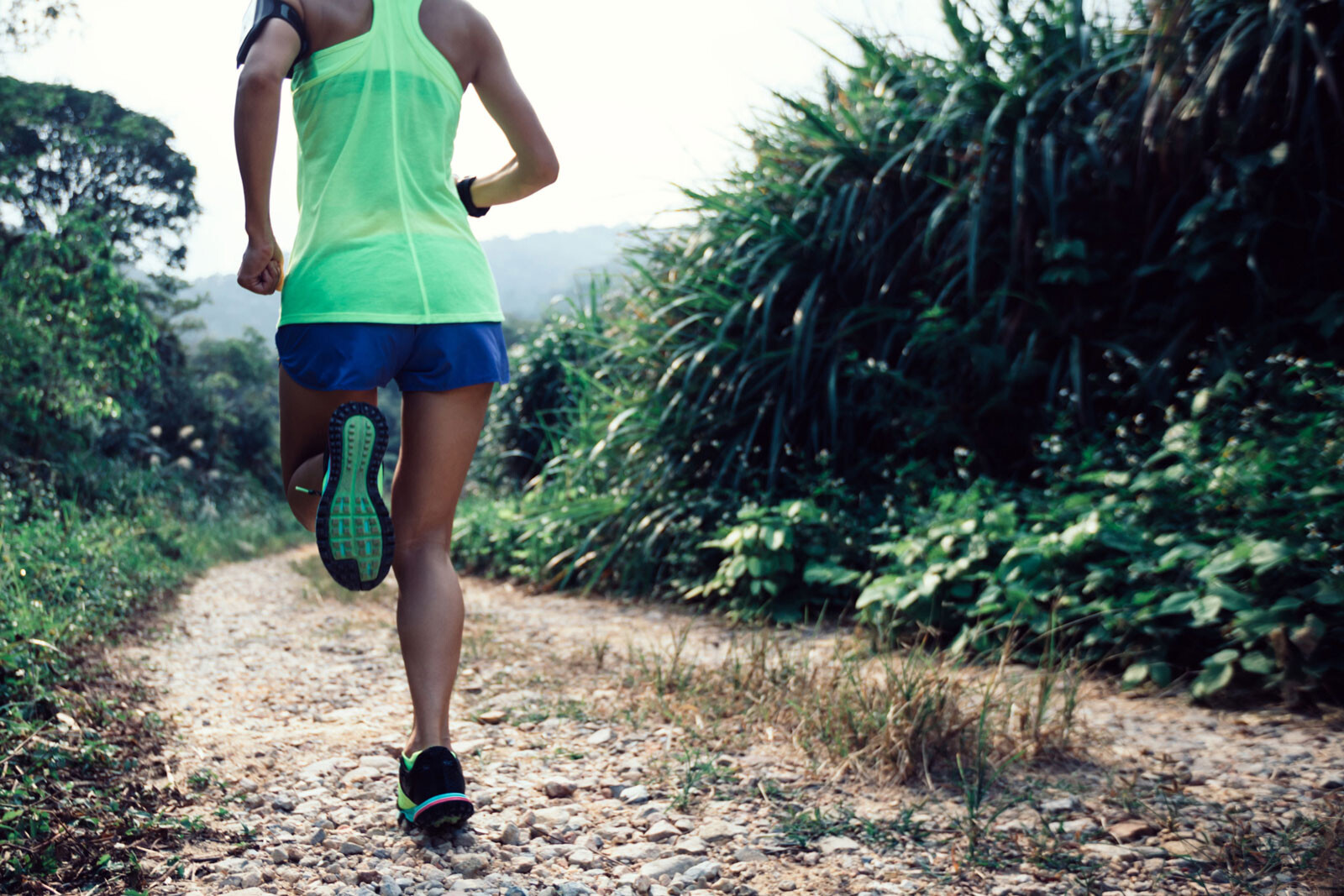
Tips To Enhance Your Technique And Efficiency In Long Distance Running
The benefits of long-distance running go beyond physical health. In addition to low cholesterol and enhanced cardiovascular health, long-distance running also helps relieve stress and maintain some form of sanity.
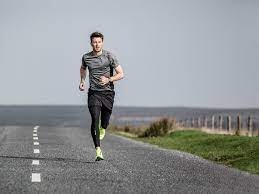
There are verified studies of the merits of long-distance running to a person’s mental health. Here are some tested and proven tips that you can use to improve your efficiency and technique in long-distance running.
1. Choose The Right Gear
This tip is usually the most underrated yet vital step to a successful, long-running exercise. As simple as choosing the right gear might sound, it plays a significant role in the distance you can cover and the chances of sustaining an injury.
First, choose something comfortable. You don’t want to be running while complaining that your top is too tight or your shoes are too loose. Also, dress for the weather.
If it’s hot weather, you can wear a loose top and shorts. This prevents sweat from sticking to the body and allows more fresh air to combat the heat. It’s also advisable to wear a headband to prevent sweat from running into your eyes.
If the weather is cold, you could wear tights and a head warmer to protect you from the cold.
2. Eat Healthy Foods
What you do when you’re not running can greatly affect your efficiency on the track. To be a better long-distance runner, you’ll have to ensure you eat good food.
Foods suitable for long-distance runners include cereals, whole-grain bread, rice, starchy vegetables, pasta, fruit, yogurt, and low-fat milk.
It’s also advisable to eat meals that you are familiar with. Trying new meals might cause a stomach upset, and nobody wants to cut their running short because of something they ate.
3. Work On Pacing
If there’s one difference between long and short-distance running, it would be the pace. The ideal long-run pace is slow, a pace where holding a conversation is possible. Many long-distance runners put in lots of energy at the start and gas out before reaching their target.
Speed isn’t the goal in long-distance running; it’s all about effort, endurance, and crossing the finish line. Most professional long-distance runners finish their careers without exceeding a 5k pace.
4. Your Mind Should Work For You
Preparing for a long run takes both physical and mental efforts. Physical techniques help ease the process, and mental techniques also do likewise.
Your body likes to achieve things, and setting short achievable goals is the way. For instance, breaking a long run into shorter segments in your mind can keep you going. Instead of telling yourself that you’re running 20km, you can divide it into four and tell yourself that you’re running four slow-paced 5km runs. After every 5km, you can rest or walk for a few minutes.
You can also plan a treat for yourself after the run; it could be your favorite meal or a video game. The thought of this can help you achieve your running target.
5. Control Your Breathing
Good breathing techniques are paramount to a successful long-distance run. If you fail to manage the air you breathe properly, you’ll gas out quickly.
As stated above, you should be able to hold a conversation while running long distances, which comes down to your breathing. A good breathing technique is to take deep breaths with your diaphragm instead of shallow breaths with your chest. It’s also advisable to inhale with your nose and exhale through your mouth.
6. Stay Hydrated And Get Rest
Long-distance running helps your body expel toxins, but you’ll also lose a lot of water.
You’re advised to drink water after every 30-45 minutes. Even before you hit the track, a good water intake is necessary. Ensure you drink water before, during, and after meals.
Drinking water after a long run might not be enough; you can add some recovery beverages rich in alkaline. Long-distance running takes its toll on the body, and a good rest after every session will help prepare you for the next.
There are some rules for the amount of rest required after a long run. If you participated in a 15-mile run, it’s advisable to take 15 days of rest before starting hard training again. Also, every long-distance runner should create time for good sleep.
7. Try Out Some Techniques
You can also try out some of these techniques to help improve your efficiency.
Upright Running: This is also called running tall. The upright running technique is vital for people with tight hips and can help you maintain pace. To visualize this, imagine a string is pulling your head up.
Arm Movement: How you handle your arm is very important in long-distance running. Avoid clenching your fist because its tension can significantly affect your efficiency. Relax your hands and arms.
The Bottom Line
The benefits of long-distance running are endless, but only if you do it right. There are cases of people who sustained injuries or develop health issues from doing it wrong. These techniques and tips can help you scale through the hurdle of a stressful run. It will help make your run both beneficial and enjoyable.
(04/13/2022) ⚡AMPby Colorado Runner
Kenyan Edna Kiplagat targets top spot at 2022 Boston Marathon: I am not done yet
Kenya's 42-year-old two-time world champion wants a second Boston Marathon title on April 18, and reveals how she balances motherhood with running.
Since winning her Boston Marathon debut in 2017, the Kenyan running star Edna Kiplagat has made the podium of the oldest race twice.
Despite being 42-years-old, the double world champion believes she can finish top of the podium again at the 2022 Boston Marathon on 18 April.
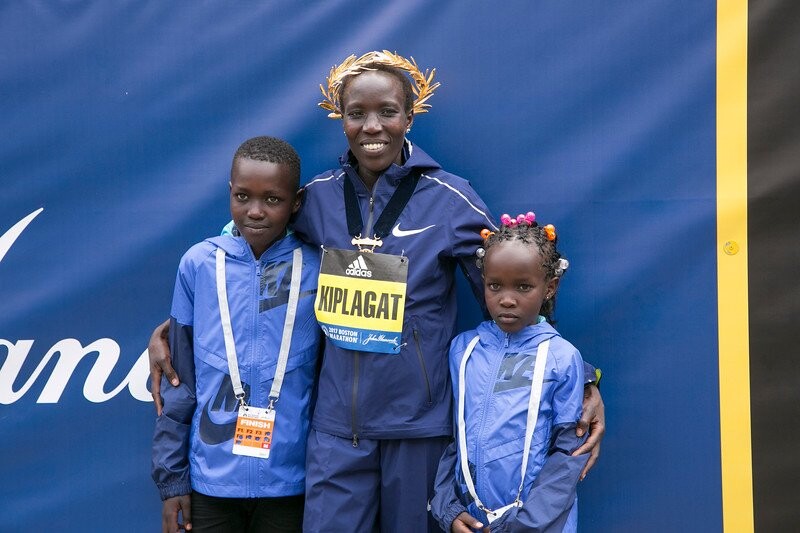
“If everything goes well as per my training and my body responds well, I’m hoping to be on the podium (in Boston) or do even better," Kiplagat said in an exclusive interview with Olympics.Com from her training base in Longmont, Colorado, USA.
“I enjoy running and as a professional athlete I believe running never stops."
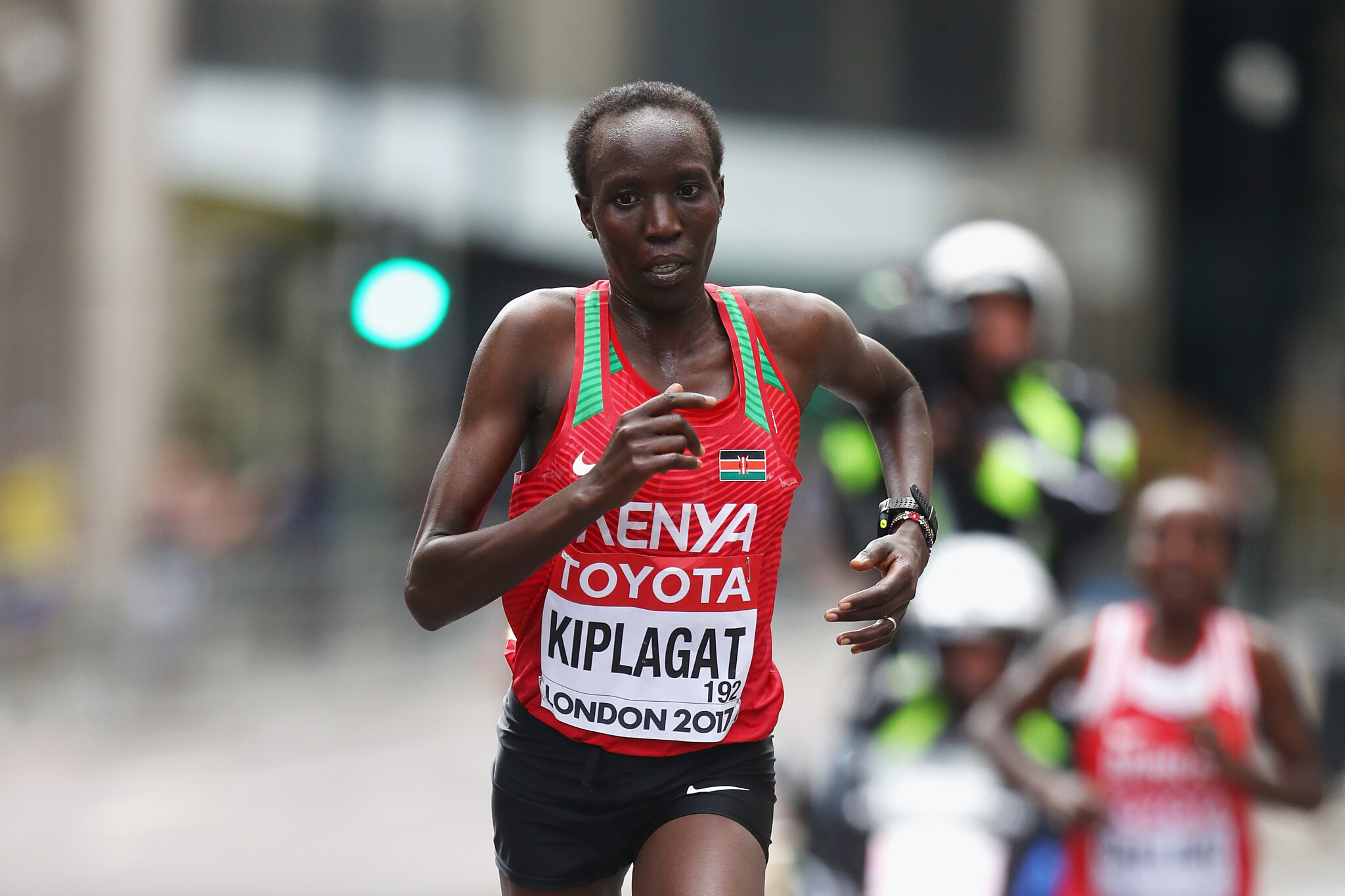
But even a podium place isn't a given in a star-studded women's field that also includes reigning Olympic marathon champion Peres Jepchirchir.
Running is a family affair for Kiplagat
Kiplagat remembers exactly when she started running, aged 16.
She is also very clear about when she first donned the Kenyan kit, saying: “I started representing Kenya in 1996 as a junior at the 1996 World (Cross Country) in South Africa."
What she doesn’t know is when she will finally hang up her competition trainers.
“I cannot say when I will stop. I know someday I will, but I am not done for now," she continued.
“I have my kids and other upcoming athletes looking up to me. I want to keep running to be a role model to them, motivate them and then use my experience later to help them in future.”
Kiplagat, who was scouted in high school by Brother Colm O’Connell - the legendary coach who moulded two-time Olympic 800m champion David Rudisha - sights her family as her key inspiration.
She is coached by husband and former runner Gilbert Koech, while her two children, Carlos (17), and Wendy (13), are already mastering distance running in school.
Kiplagat is also among a select group of athletes who have returned to the peak of their careers after giving birth.
“It’s not easy,” she admitted of raising her two biological children (born between 2004 and 2008) and three others that she adopted.
“After training, I have to come home and take care of my family as they are my priority. They need me and I must play my role as a mother.
“I have a great support team - my coach and my training partners, physio, and nutritionist who play an important role in my career. I get ample time to train and be with my family and even for recovery.”
Boston Marathon: A stepping stone to the Worlds and the Olympics
Two-and-a-half decades after her first race, Kiplagat is still runs between 110km - 130km in a week.
The passion and excitement the three-time World Marathon Major winner takes into every race has never wavered.
Last year at Boston she executed an incredible sprint finish to seal second behind Kenyan winner Diana Kipyokei.
“I know the course very well and I have had very good training in the build-up to this. I am expecting a very fast pace as most of the elites have run under 2.20 so they will push the pace from the start and even the course record may be lowered if the weather conditions are favourable,” the London 2012 Olympian said of what she expects to be a “very competitive race”.
Kiplagat has tuned up for her fifth Boston race with a ninth-place finish at the New York City Half Marathon on March 20.
“This was part of my speedwork to see how my body responds after the months of training."
The flame of ambition still burns brightly for Kiplagat, who in 2013 successfully defended her marathon world title.
A second win in Boston will make her only the second Kenyan woman to do so.
The first was 2008 Olympic silver medallist Catherine Ndereba, who clinched four-consecutive Boston titles.
Kiplagat, who finished fourth at the 2019 Worlds in Doha, now hopes to join the elite club of Kenyans who have won 13 of the last 21 Boston Marathon women's titles.
Kiplagat's 26-year career as a long-distance runner
Marathons are a gruelling endeavour that tests body and mind in equal measure.
But Kiplagat who honed her career in Kenyan running's spiritual home of Iten, and that may help explain her unbelievable longevity in the sport.
She is the first able-bodied athlete to record ten top-three finishes in World Marathon Majors New York, London, Boston and Tokyo, and wants to extend her top-flight marathon career - that dates back to 2010 when she won her debut 42km race in Los Angeles - to the Paris 2024 Olympics at least.
“I have been persistent with my routine. I believe in myself and fully trust my coach," she said.
"We have stuck to our plans, strategy on what we want to do and what we expect from each race. I always try to understand what is needed from me and plan how to execute my races on race day.
“I have tried to be consistent in everything I do. I am disciplined and I’m still looking forward to do even better.”
Younger athletes can also pick up valuable experiences from the running trailblazer.
“They need to have a plan for their races to avoid burnout. (They) must also have ample time for recovery, a good build-up and preparation. If you want to keep running for long it also needs a proper plan and patience with yourself.”
(04/13/2022) ⚡AMPby Evelyn Watta
Boston Marathon
Among the nation’s oldest athletic clubs, the B.A.A. was established in 1887, and, in 1896, more than half of the U.S. Olympic Team at the first modern games was composed of B.A.A. club members. The Olympic Games provided the inspiration for the first Boston Marathon, which culminated the B.A.A. Games on April 19, 1897. John J. McDermott emerged from a...
more...Quad-City Times Bix 7 to Hold In-Person and Virtual Races in 2022
Runners and walkers will fill the streets of Davenport, Iowa on Saturday, July 30 in celebration of the 48th running of the Quad-City Times Bix 7.
The iconic 7-mile race and all race weekend events are set to take place at full capacity; Genesis Sports Medicine Brady Street Sprints (July 28), Arconic Jr Bix (July 29) & the Prairie Farms Quick Bix (July 30). In addition, the Virtual Bix 7, Quick Bix & Jr Bix will take place July 23-30.
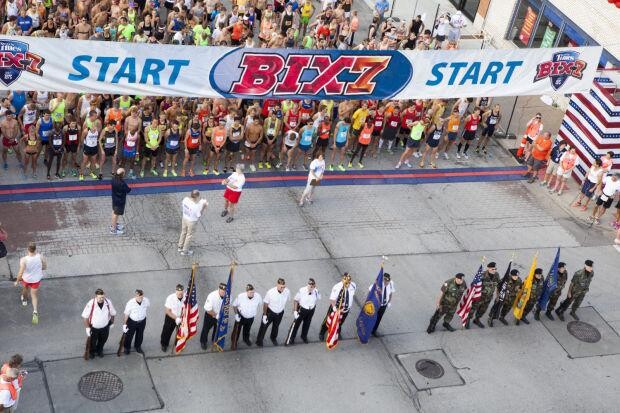
The Iowa American Water Bix @ 6 training runs start at 6 p.m. on Thursdays, June 23 and 30, July 7 and 14, 2022. If you have registered for the Quad-City Times Bix 7, Prairie Farms Quick Bix or Arconic Jr Bix, join the hundreds that train every Thursday on a safe and secure course.
“The Quad-City Times Bix 7 is a fun, family event where you can run with the best – right here in the Midwest,” said Quad-City Times Bix 7 Race Director Michelle Juehring. “We’re excited to welcome you, your family and friends – 48 is going to be great!”
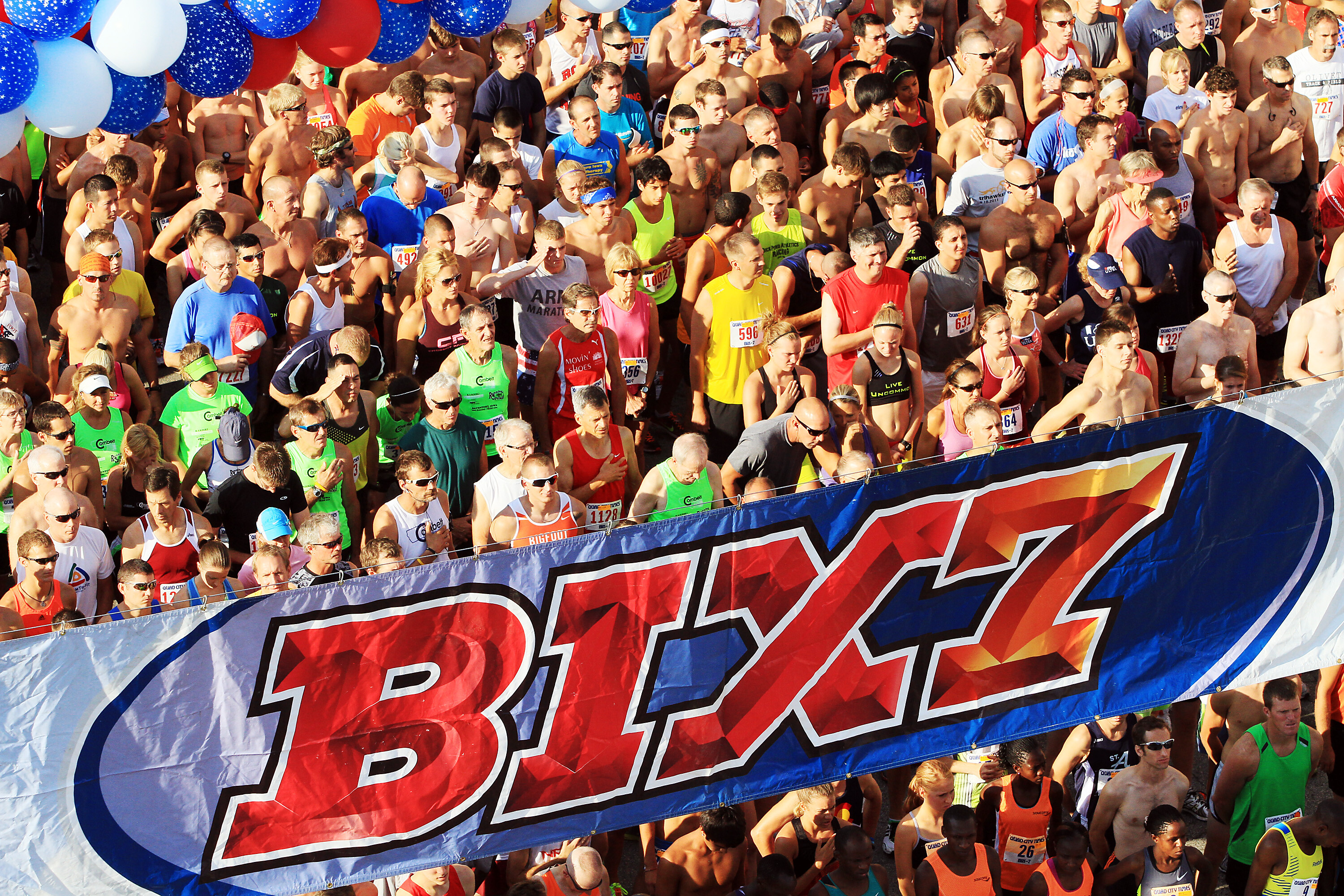
Juehring announced a new and exciting addition to the 2022 race; Caesar’s Sportsbook Team Challenge, sponsored by the Isle Casino Hotel Bettendorf. Comprised of 5 athletes each, teams will race the 7-mile course for cash prizes and bragging rights. Competition is limited to 40 teams.
In addition to the inaugural team competition, the Quad-City Times Bix 7 is proud to continue to offer these traditional competitions within the 7-mile race: Elite athletic competition, the High School Challenge & the First Responder’s Challenge from Premier Buick GMC Dealers and All-City Challenge from Scott County Regional Authority.
Additional details from the April 6 press conference may be found online at www.qctimes.com , www.kwqc.com, @QCTBix7 on Facebook, @BixSeven on Twitter, quadcitytimesbix7 on Instagram and www.bix7.com.
(04/12/2022) ⚡AMPby Running USA
Bix 7 miler
This race attracts the greatest long distance runners in the world competing to win thousands of dollars in prize money. It is said to be the highest purse of any non-marathon race. Tremendous spectator support, entertainment and post party. Come and try to conquer this challenging course along with over 15,000 other participants, as you "Run With The Best." In...
more...A new study says high cushioned shoes improve exercise performance
Some brands revolutionized the shoe market in the past 10 years by designing shoes with a higher stack height to improve recovery. There have always been polarizing opinions on whether high-cushioned shoes have any benefits for performance.
New research out of the University of Exeter in the U.K. and Nike Global Sport Research Laboratory measured the running economy and overall performance between two different prototype shoes–a mid-cushioned model (273 grams) vs. a highly cushioned model (232 grams) during an incremental running test–and found some performance benefits to the more highly-cushioned shoe.
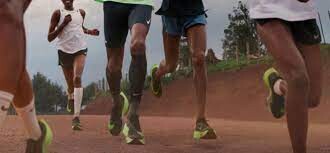
The study was conducted on 32 runners (22 male and 10 female) while wearing each shoe type. Each participant completed an incremental treadmill test in a high cushioned shoe and a mid-cushioned shoe. Their oxygen cost and maximal performance were measured before and after a 30-minute downhill run in each model. Forty-eight hours after the downhill run, the runners were again required to perform the test, to measure long-term muscle damage.
Researchers found that the running economy was 5.7 per cent better in the highly cushioned shoe than in the mid-cushioned model, which equated to approximately one minute and 15 seconds over a 30-minute run. As the runners dealt with higher speeds, the higher cushioned model was able to handle each increment of speed at a lower VO2 level in comparison to the mid-cushioned model.
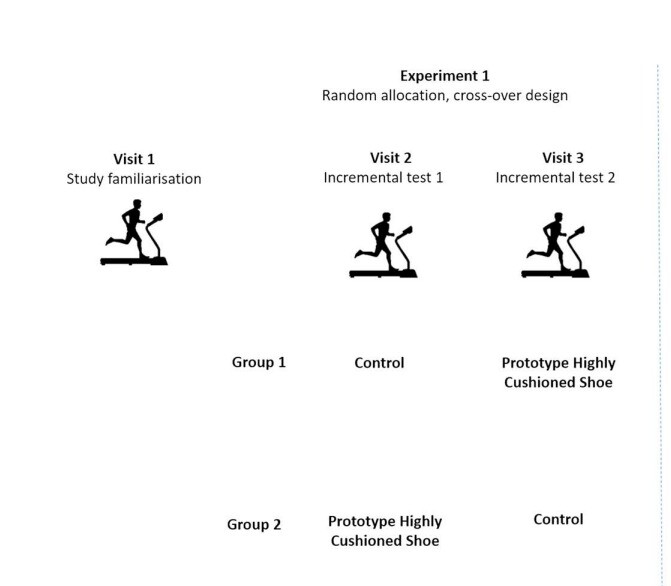
They also found that the oxygen cost in the presence of muscle damage was significantly lower in a higher cushioned shoe, and that there was 4.6 per cent less muscle damage from the downhill run in the higher-cushioned shoes.
These results indicate that a high cushioned shoe may not only improve your recovery but also your performance in the absence of muscle damage.
The shoes that were tested were from Nike, but the precise models were not named in the study.
(04/12/2022) ⚡AMP
by Marley Dickinson
Molly Seidel despite being a favorite for the 2022 Boston Marathon, still struggles with confidence
The 27-year-old battled with an eating disorder to qualify for the USA Olympic team in her first ever marathon. Despite winning bronze at Tokyo 2020 and being a favorite for the 2022 Boston Marathon, she still struggles with confidence.
Molly Seidel is a rare kind of marathon talent.
The Wisconsin native first made athletics headlines when she qualified in second place for the U.S. Olympic team for Tokyo 2020, in her first ever marathon.
Despite this, many onlookers thought that her inexperience would show at the Olympic race in Sapporo. And how wrong they turned out to be.
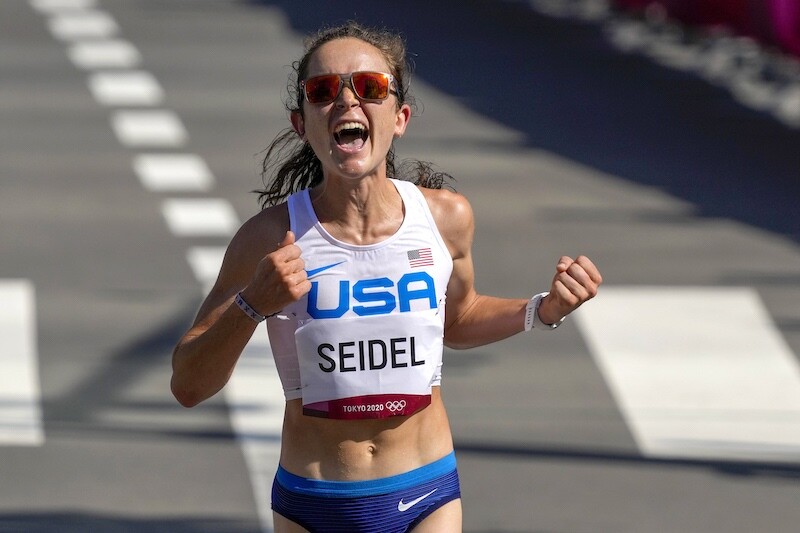
In what was just her third career marathon, she finished on the podium with an Olympic bronze medal around her neck. The only runners to beat her were a triple world half marathon record holder in Peres Jepchirchir, and marathon world record holder Brigid Kosgei.
Using that momentum, Seidel finished fourth at the New York City Marathon in November 2021. Her time of 2:24:42 made her the fastest American woman ever.
On April 18, 2022, she goes to the 2022 Boston Marathon as one of the favorites, seeking the host nation's first win since Desiree Linden in 2018.
But despite her recent successes the American star still struggles with 'imposter syndrome'.
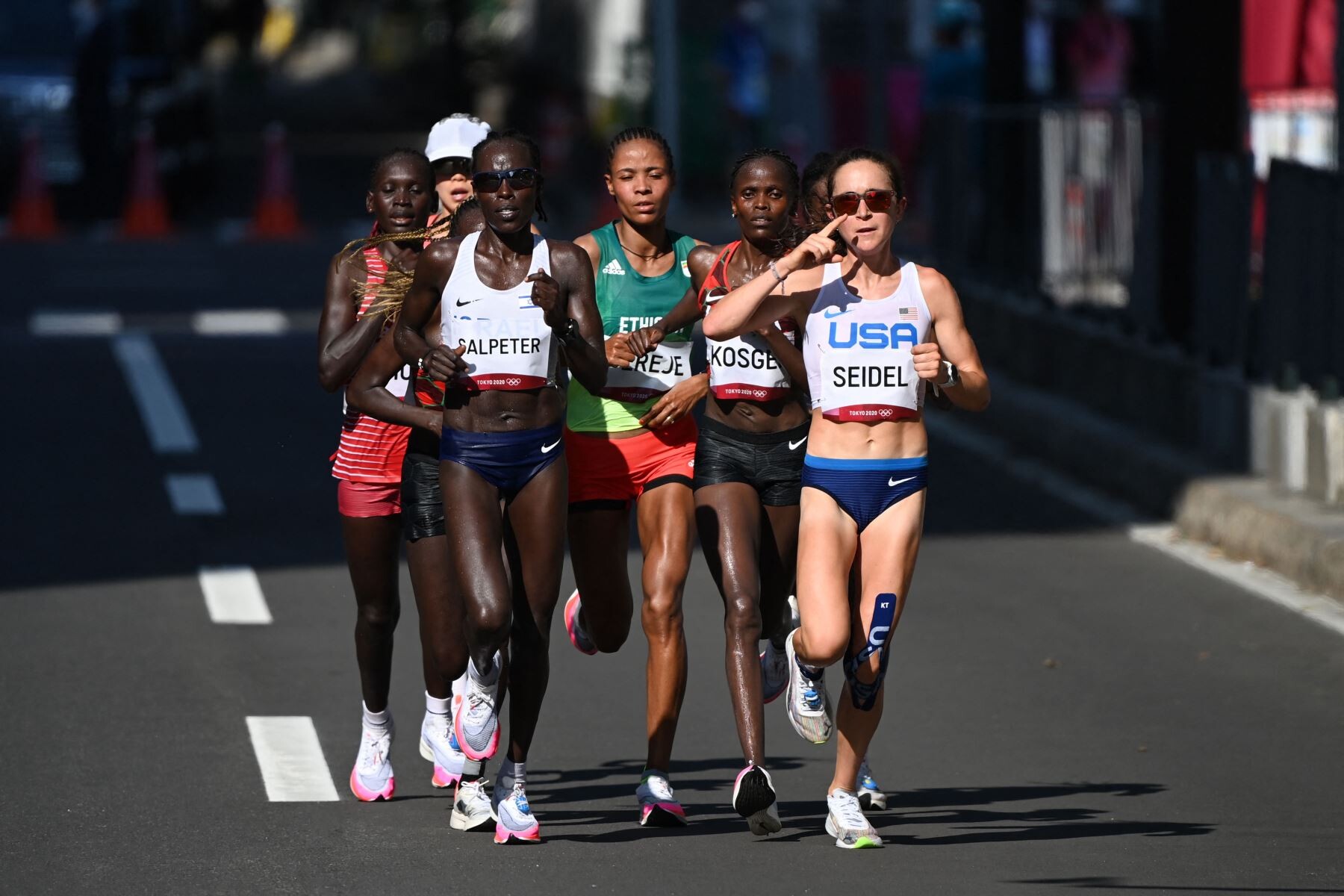
"I struggle with confidence and I struggle with wondering whether or not I belong at this level, whether I belong as a competitor on the world stage," Seidel told CNN.
The making of a front runner
Growing up in Wisconsin, Seidel was always a front runner in school sport. She broke course records and won several state track titles.
The first time her school's cross-country coach Mike Dolan first saw her attack an uphill run, he knew she was special.
“She would be a minute ahead of all the guys and all the girls," Dolan told Milwaukee Journal Sentinel.
"I knew at that time she would be a heck of a runner."
Seidel proved her coach right as she went on to win an NCAA cross country title in 2015, two NCAA indoors (3,000m & 5000m) and an outdoor 10,000m title to become the most decorated distance runner in state history.
Some onlookers even thought she could be a potential U.S. Track Olympic Team athlete for Rio 2016.
Mental health struggles
From the outside, Seidel seemed to be in the best shape of her life, but underneath she was experiencing a deep inner turmoil.
She first went public on her struggles with depression, OCD, crippling anxiety and bulimia in a podcast ran by her close friend Julia Hanlon called "Running On Om", just two months before the 2020 Olympic Trials.
“People who are close to me knew what I was going through during my time at Notre Dame (University), from 2012 to 2016. They knew my OCD had manifested itself into disordered eating,” she revealed in a follow-up interview with ESPN.
“When I was in the NCAA, it was obvious I was battling an eating disorder. It was so obvious that people would write on track and field message boards that I looked sick." - Molly Seidel to ESPN.
“They knew I struggled to eat anything I deemed unhealthy They knew I thought I had to be super lean and super fit all the time, never even allowing myself to eat a bowl of mac and cheese or go out to eat with friends without worrying about what I would order. I've never tried to hide what I went through with my family and friends.”
In 2016 she went into a treatment program for her eating disorder, which she’s still dealing with alongside the anxiety and depression.
When Seidel returned to training, she decided to stop running 5k and 10k and stepped up to the marathon.
“I always kind of dreamed of doing the marathon," Seidel told CNN.
"I think there's just this kind of like glamor and mystery around it, and especially for a younger runner who enjoys doing the distance events in high school, that's kind of the ultimate goal. Everybody wants to do the marathon."
From first marathon to Olympic medal
Her debut 42km race at the USA Trials in Atlanta landed her a place on her nation's Olympic team with race winner Aliphine Tuliamuk and third placed Sally Kipyego.
"I struggled with this kind of imposter syndrome after the trials, specifically as probably the person no one expected to make the team and the person that got probably the most criticism like: Hey, why is this girl on the team?" she continued.
"I think I really struggled with that, and I struggled going into the Games and feeling like I belonged there and trying to prove that I wasn't a mistake on that team."- Molly Seidel to CNN.
Her second marathon effort was the daunting 2020 London Marathon, where she finished sixth .
Then, just 18 months after her first marathon Seidel, who is affectionately known as “Golly Molly” earned bronze and became the third American woman ever to medal in the Olympic marathon.
In November 2021, a broken Seidel returned for her fourth marathon in New York, where she placed fourth with a personal best time despite fracturing two ribs as she prepared for the event.
It was an absolute disaster of a build up,” she recalled.
"It was really hard, not only with the mental stress that we had going on after the Games of just feeling, frankly, no motivation. And just trying to find that drive to re-up for another hard race right after an enormous race that I'd been training effectively two years for.”
Those injuries are now behind the 27-year-old, who has been training in Flagstaff.
Though she dropped out of the New York Half in March due 'setbacks in training', Seidel heads back to Boston where she lived for four years with high hopes for something special.
“Boston was like the place that made me a pro-runner. It was the first place I moved after I finished college.It was the place that kind of like rebuilt me as a runner after going through a lot of challenges through college,” she said to CBS Boston.
“Just getting to do the race in the place that made me the runner that I am and with the people that helped me become the runner that I am, it’s just enormously meaningful to me. That what makes it a lot more special than any other race.”
(04/12/2022) ⚡AMPby Evelyn Watta
Boston Marathon
Among the nation’s oldest athletic clubs, the B.A.A. was established in 1887, and, in 1896, more than half of the U.S. Olympic Team at the first modern games was composed of B.A.A. club members. The Olympic Games provided the inspiration for the first Boston Marathon, which culminated the B.A.A. Games on April 19, 1897. John J. McDermott emerged from a...
more...What is the real secret behind motivation? If you want to stay engaged in and excited about your training, you have to harness your inner drive
We often talk about motivation as being a key factor in running success, and elite athletes seem to have it in spades. Any time our training falls to the wayside, we often blame a lack of motivation as the reason. So how do you stay motivated to avoid these lapses in training? Where do elite athletes get their motivation? The answer is not external but comes from your own individual inner drive. Here’s how to cultivate it.
Extrinsic vs. intrinsic motivation
Runners often use goals, like aiming for a new personal best or getting a BQ, or rewards, like having their favourite meal at the end of a long run, to motivate themselves to stick to their training plans. These are examples of extrinsic motivation, and can be effective in acute situations. When you’re at kilometre 35 of a marathon or entering the final mile of a 5K, reminding yourself of your goal can be very useful when things are starting to get tough and your brain is telling you to call it quits.
In your day-to-day training, however, extrinsic goals don’t tend to work as well, because while they provide a large dose of motivation, that fire quickly burns out. Intrinsic motivation, on the other hand, provides that slow-burning, long-lasting motivation that you need to lace up your shoes day after day, month after month and year after year.
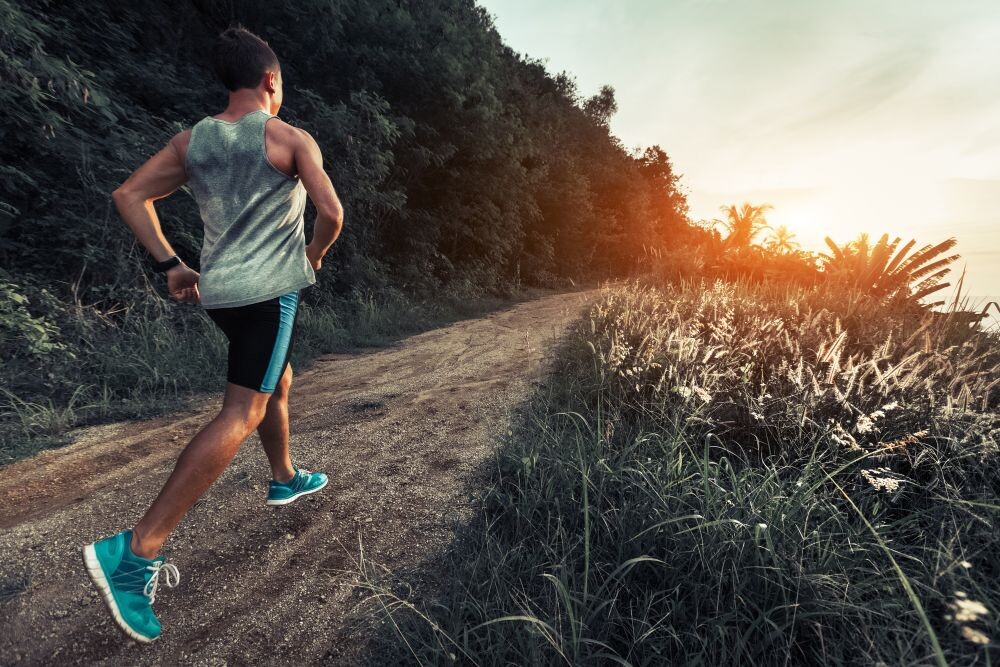
The idea behind intrinsic motivation is that you have to want to put in the work. One of the biggest factors that separate elite athletes from non-elites is that they not only enjoy the training process, but are addicted to it. Success isn’t purely about achieving their goals, it’s about showing up every day, putting in the work and actually enjoying the process of slowly becoming a better athlete.
The good news is that elite athletes aren’t the only ones with this inner drive. You have one too, and all you have to do is tap into it to start harnessing its power.
How to tap into your inner drive
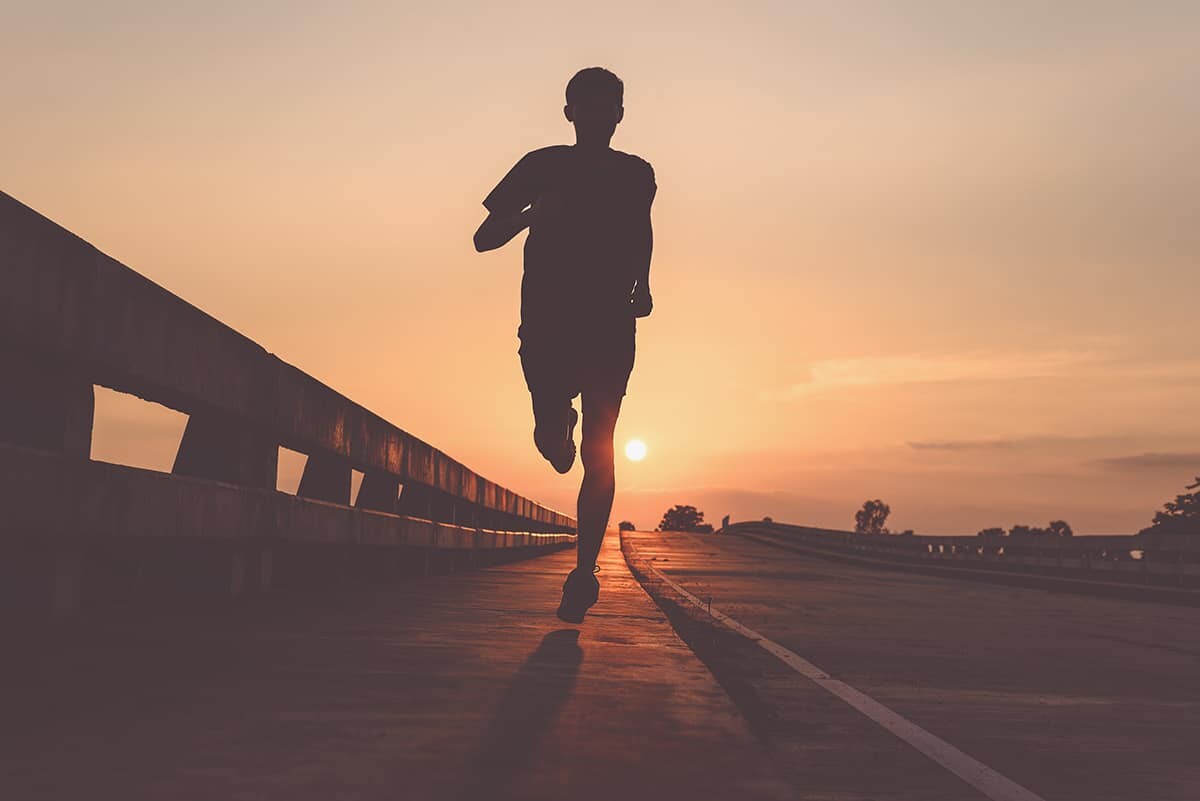
Everyone has days when they don’t feel like going out for their run, hitting the gym or doing whatever else their training involves, but if you’re constantly feeling like running is something you have to do, rather than something you want to do, that’s a sign that you’re lacking inner drive. Here are a few tips for tapping into your inner drive so you can ultimately achieve success:
Learn how to explore. Inner drive often happens when your interests and skills collide, so give yourself the opportunity to explore your interests and find what excites you. Within the context of running, that often means choosing distances or goals that you actually enjoy doing. For example, runners tend to elevate the marathon as being the ultimate event that all runners must aspire to, but you may find that training for the mile is a lot more interesting or exciting to you, and that’s great.
If you think you’re losing your inner drive, consider switching up what you’re training for to reignite your excitement and passion for the sport. Trying a completely new distance or switching from the roads to the trails could be just what you need.
Create a healthy environment. Runners tend to be very strict with their training and put a lot of pressure on themselves to achieve their goals. In small doses, this can be beneficial, but in the long run can lead to frustration and burnout. Give yourself room to fail. Listen to your body and allow yourself to make changes to your training when necessary. Choose goals because they feel right to you, not because your running buddies or your coach are telling you they should.
Don’t chase outcomes. Define what progress looks like to you, and chase that instead. Focus on getting a little bit better every day, and don’t allow the desire for perfection to get in the way that progress. Improvement is rarely linear, and success often doesn’t look exactly the way we think it will.
This doesn’t mean you shouldn’t set goals, but they shouldn’t be the main driver that gets you off the couch and out the door every day. Choose goals that are appropriate to your current level (without comparing yourself to others, or even your past self), and use them as a guide only.
(04/12/2022) ⚡AMPby Running Magazine










































